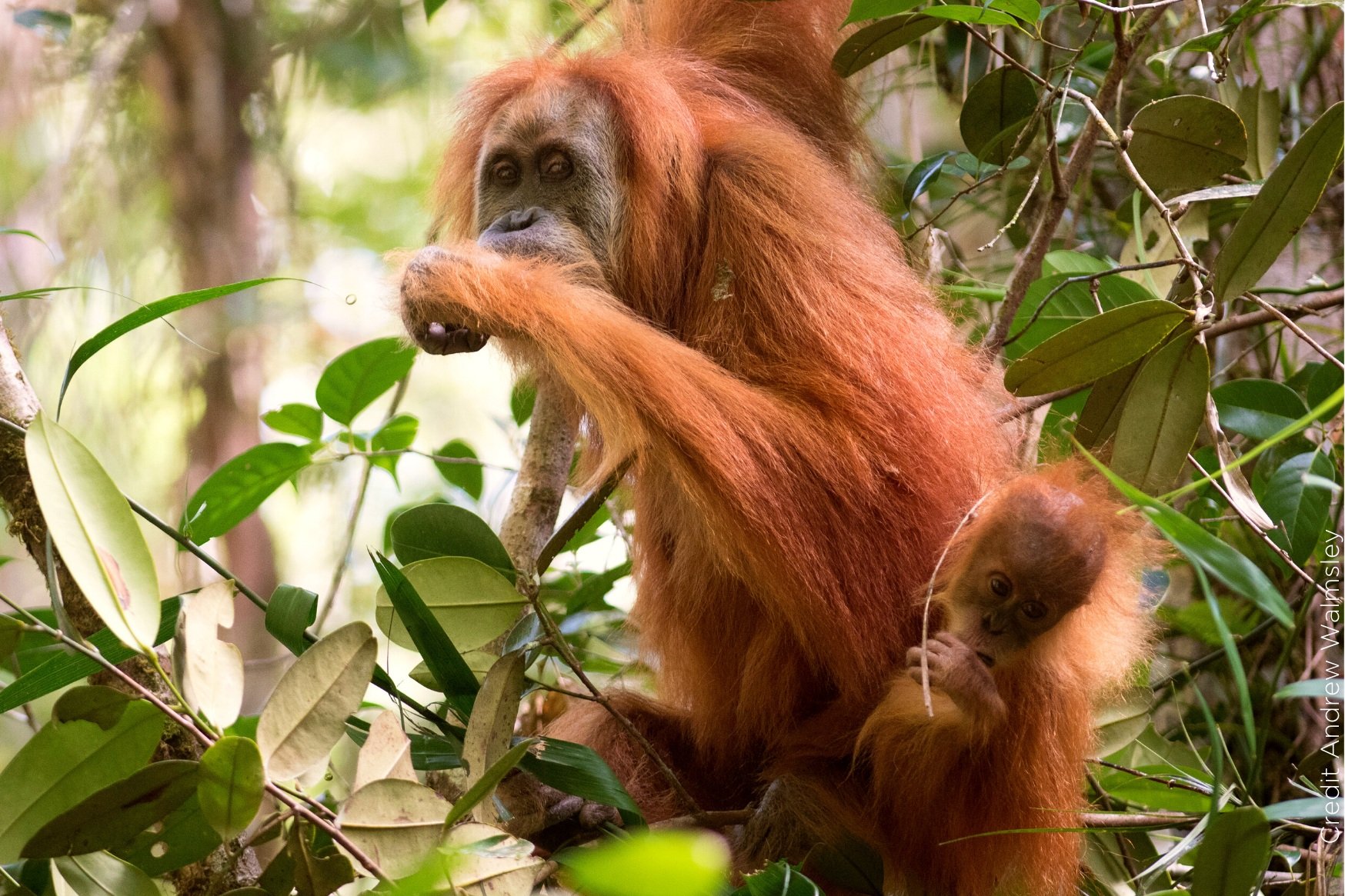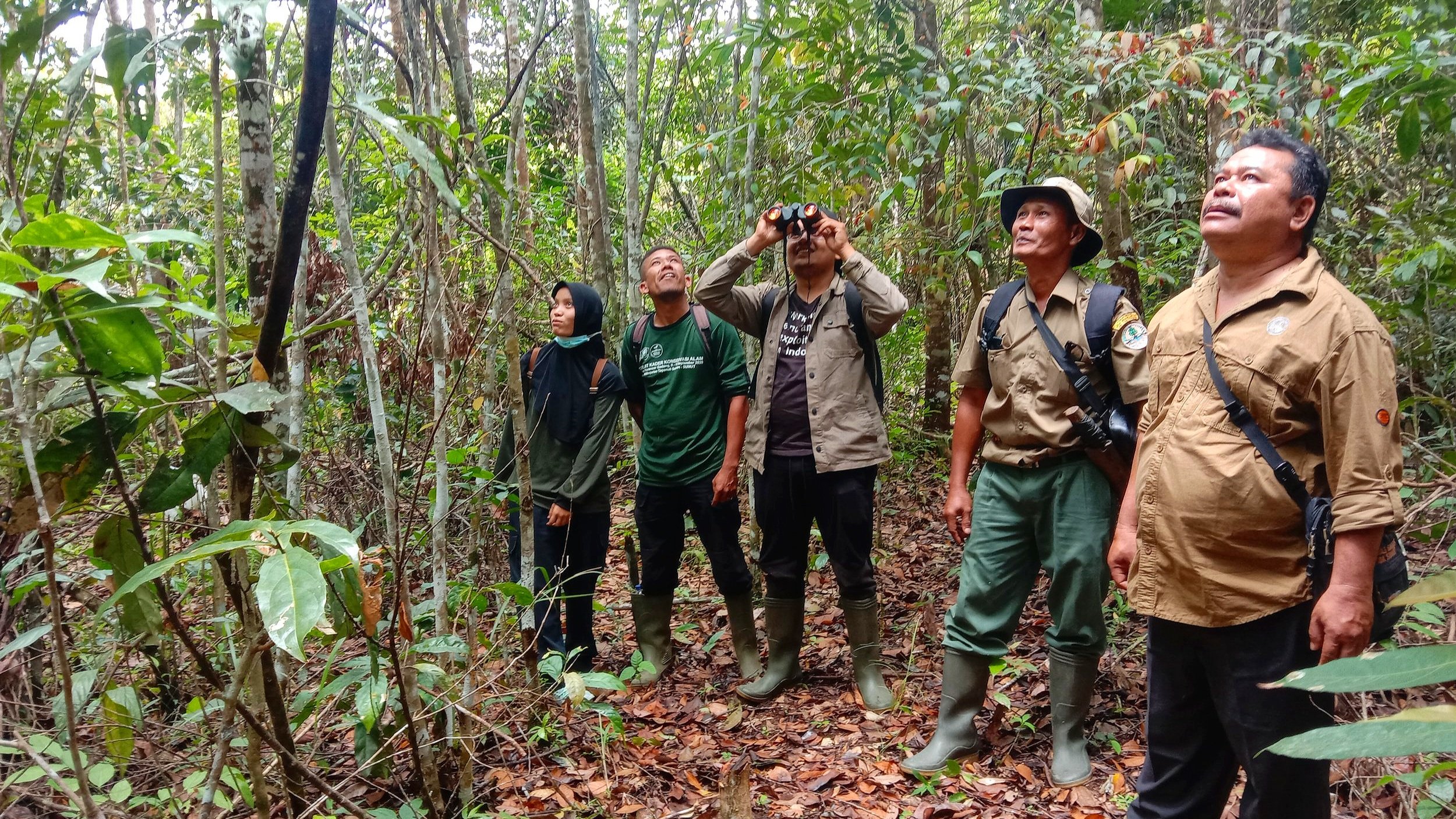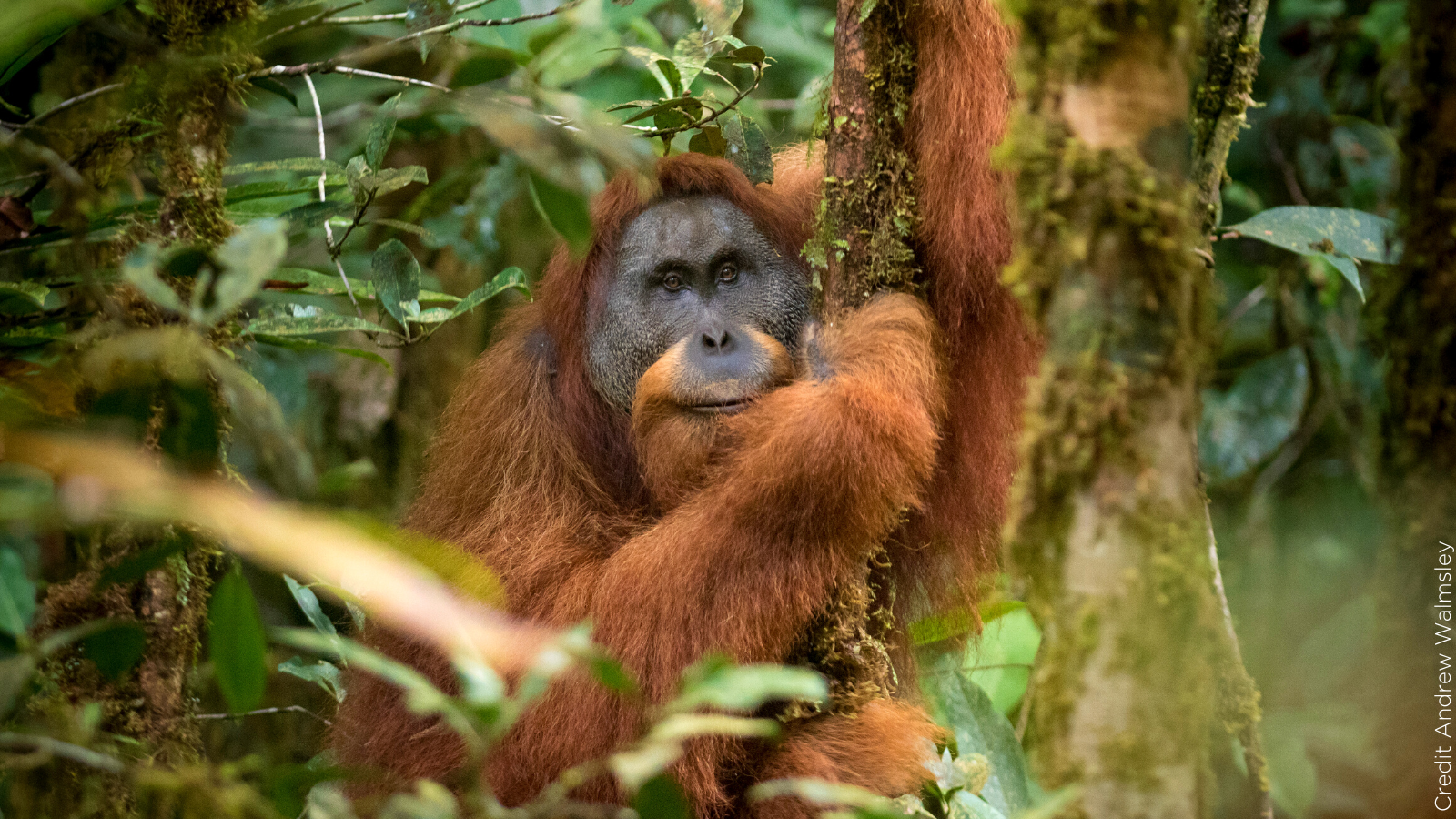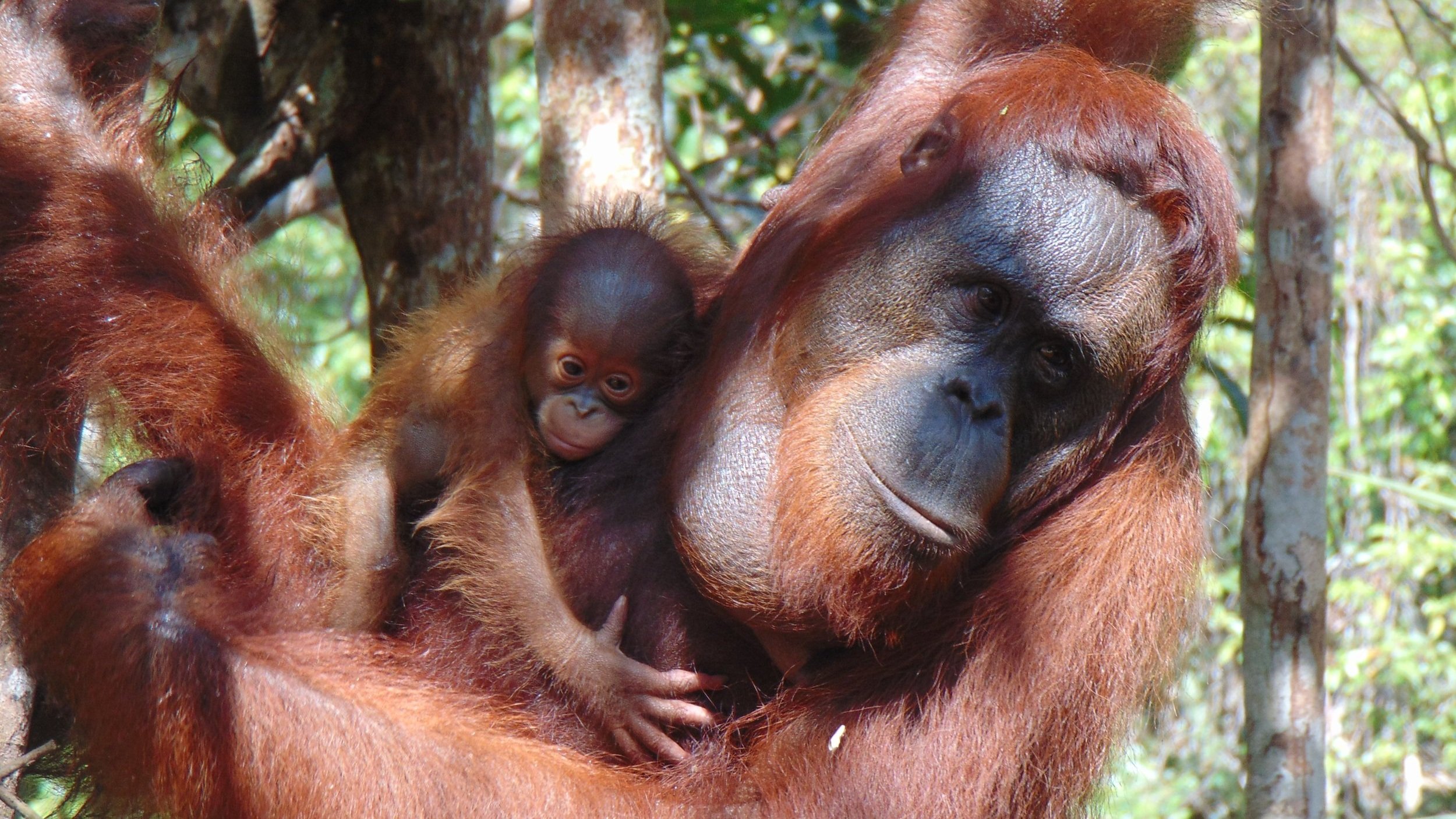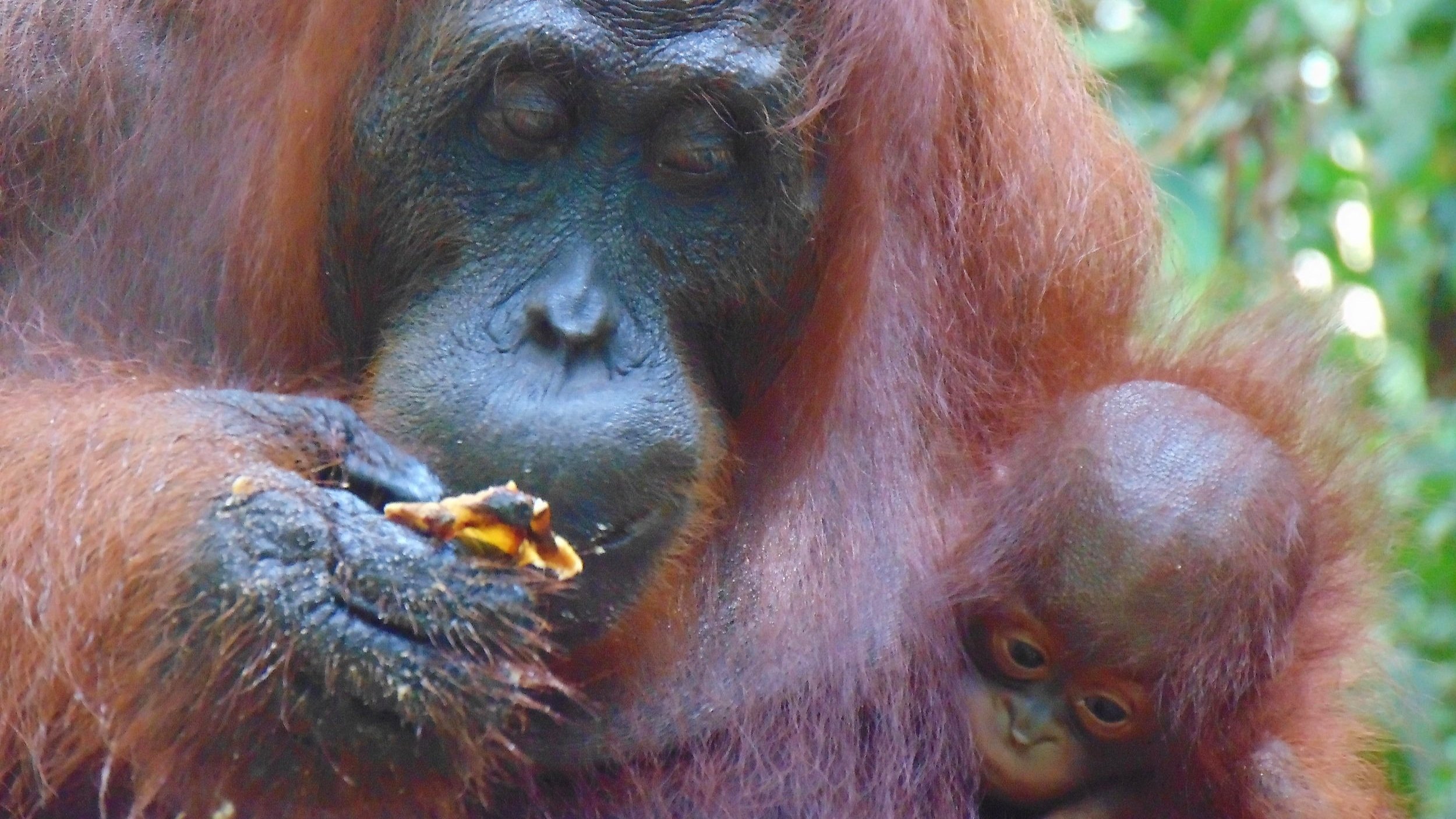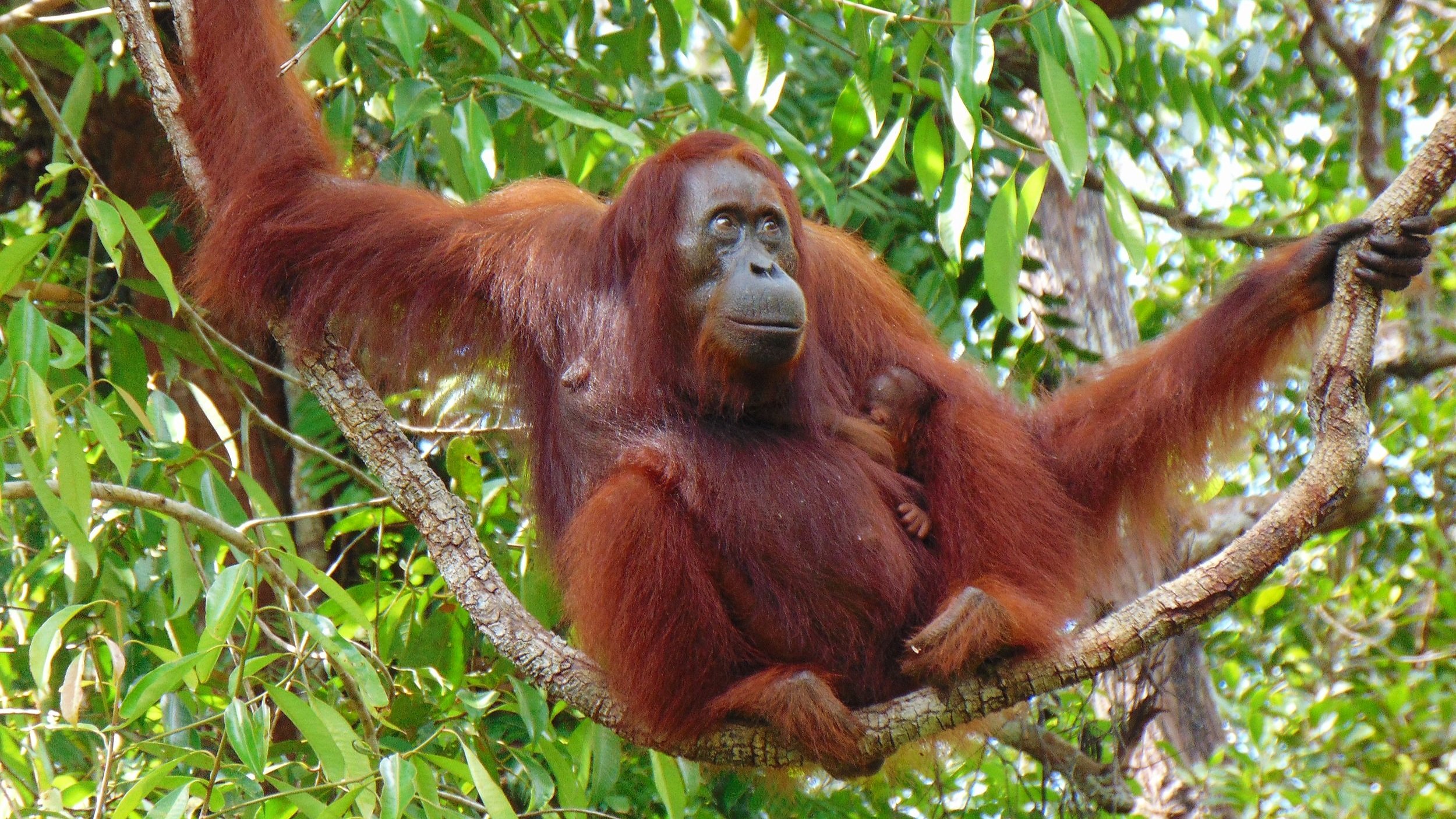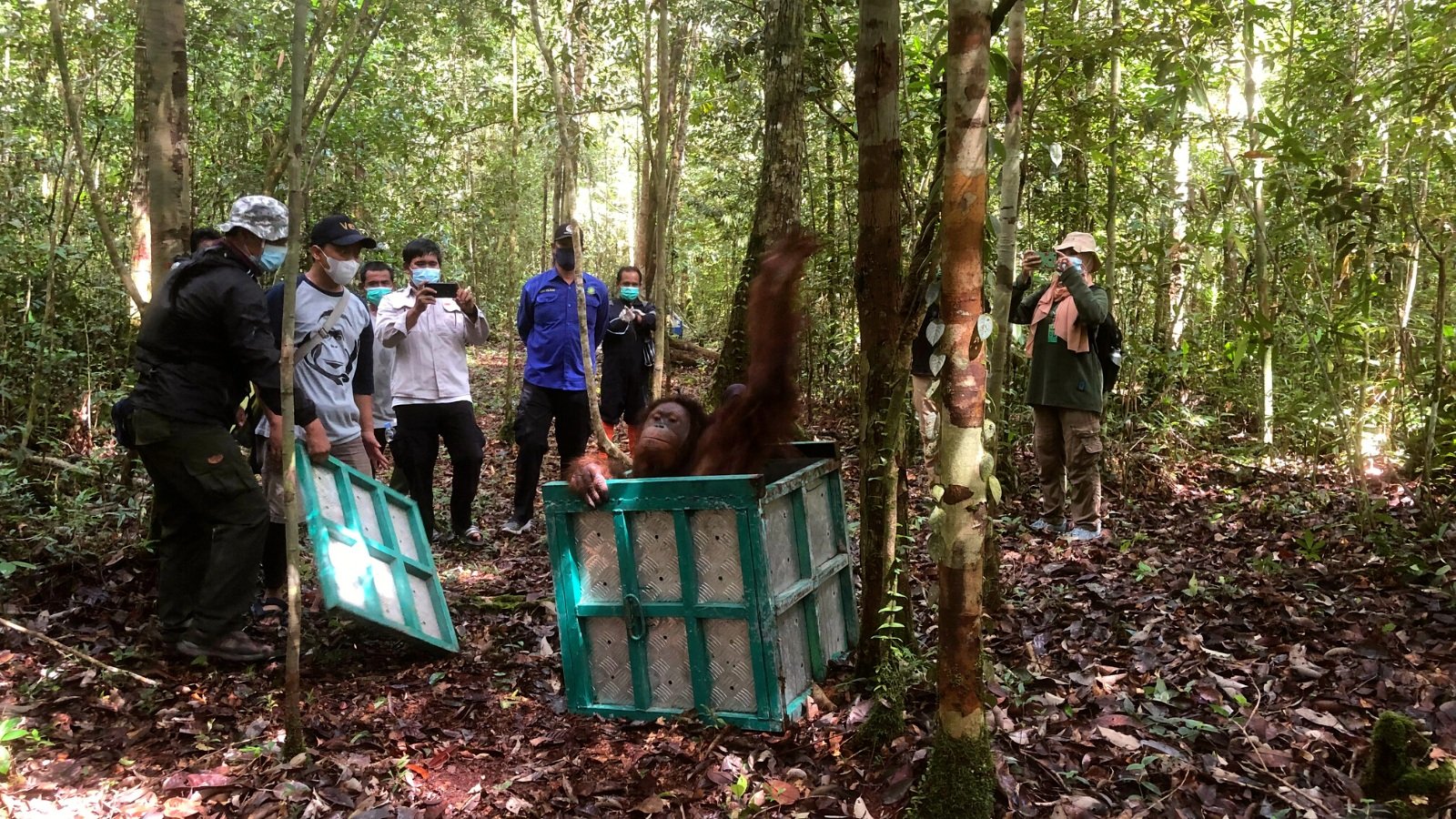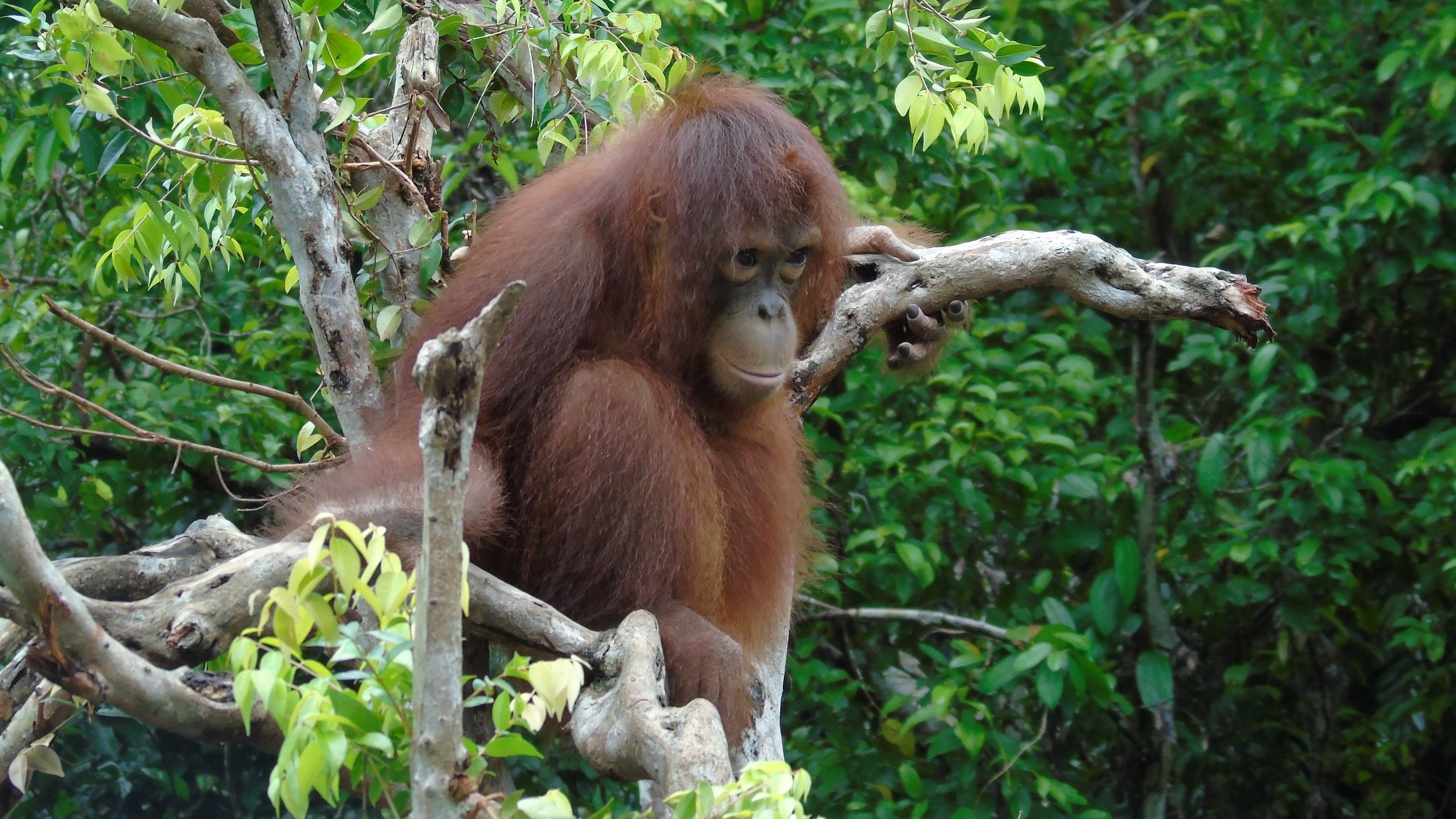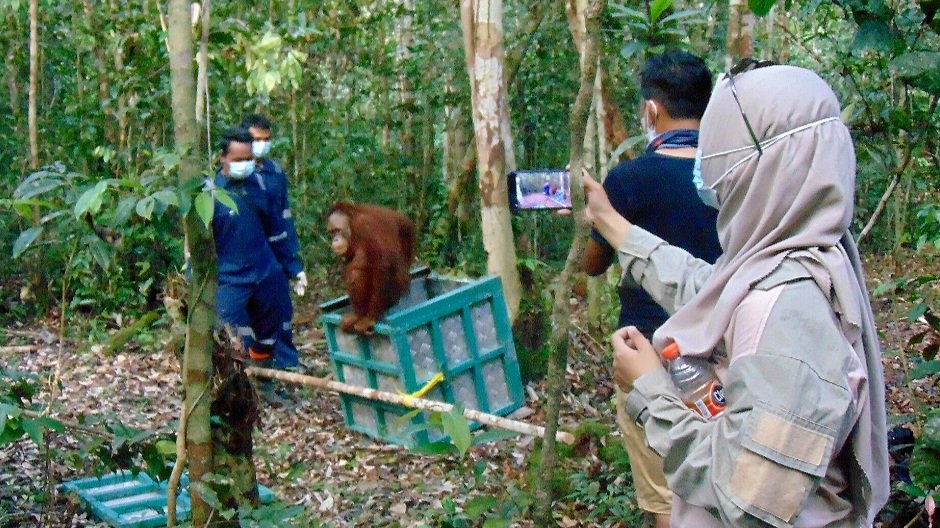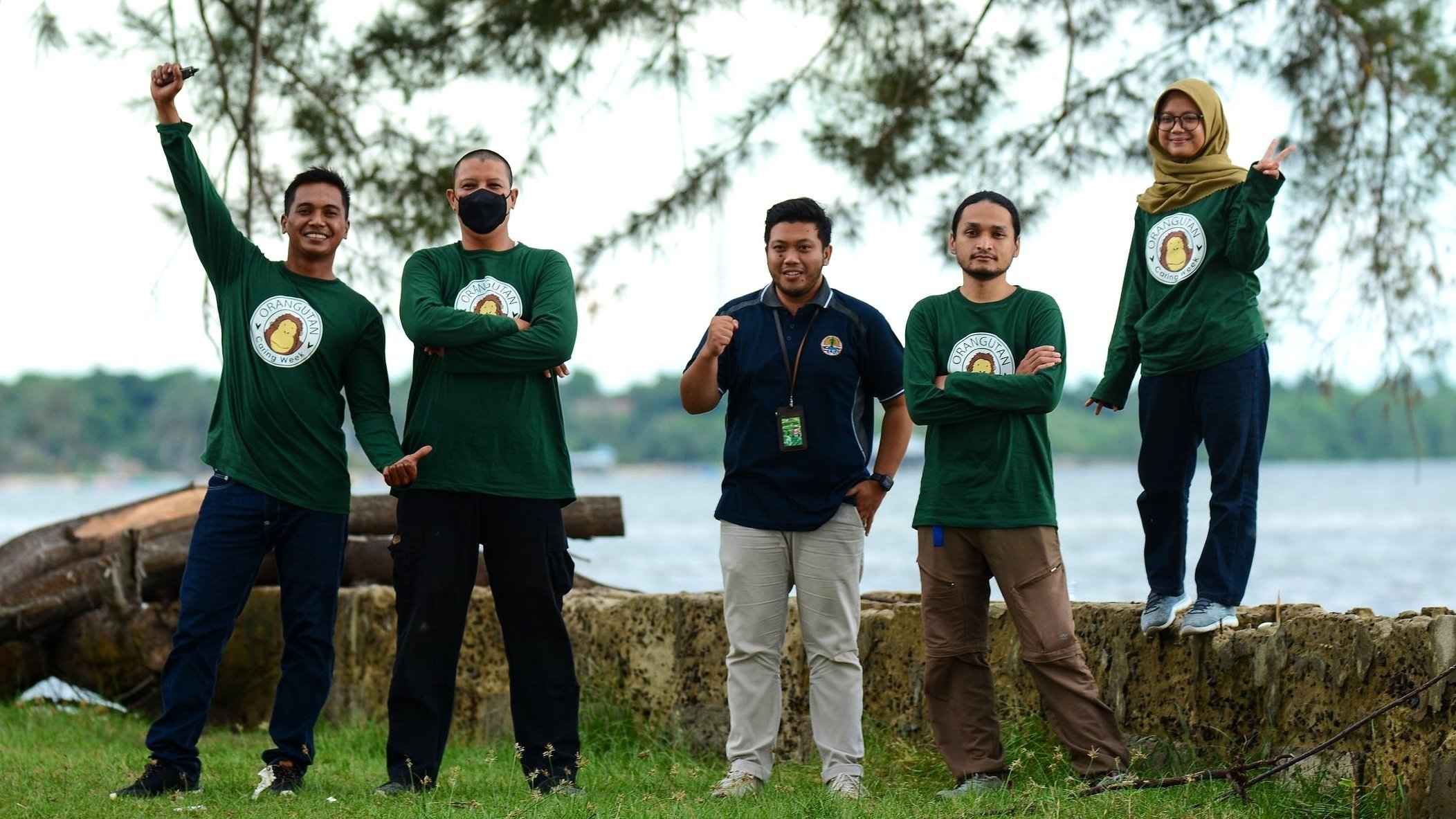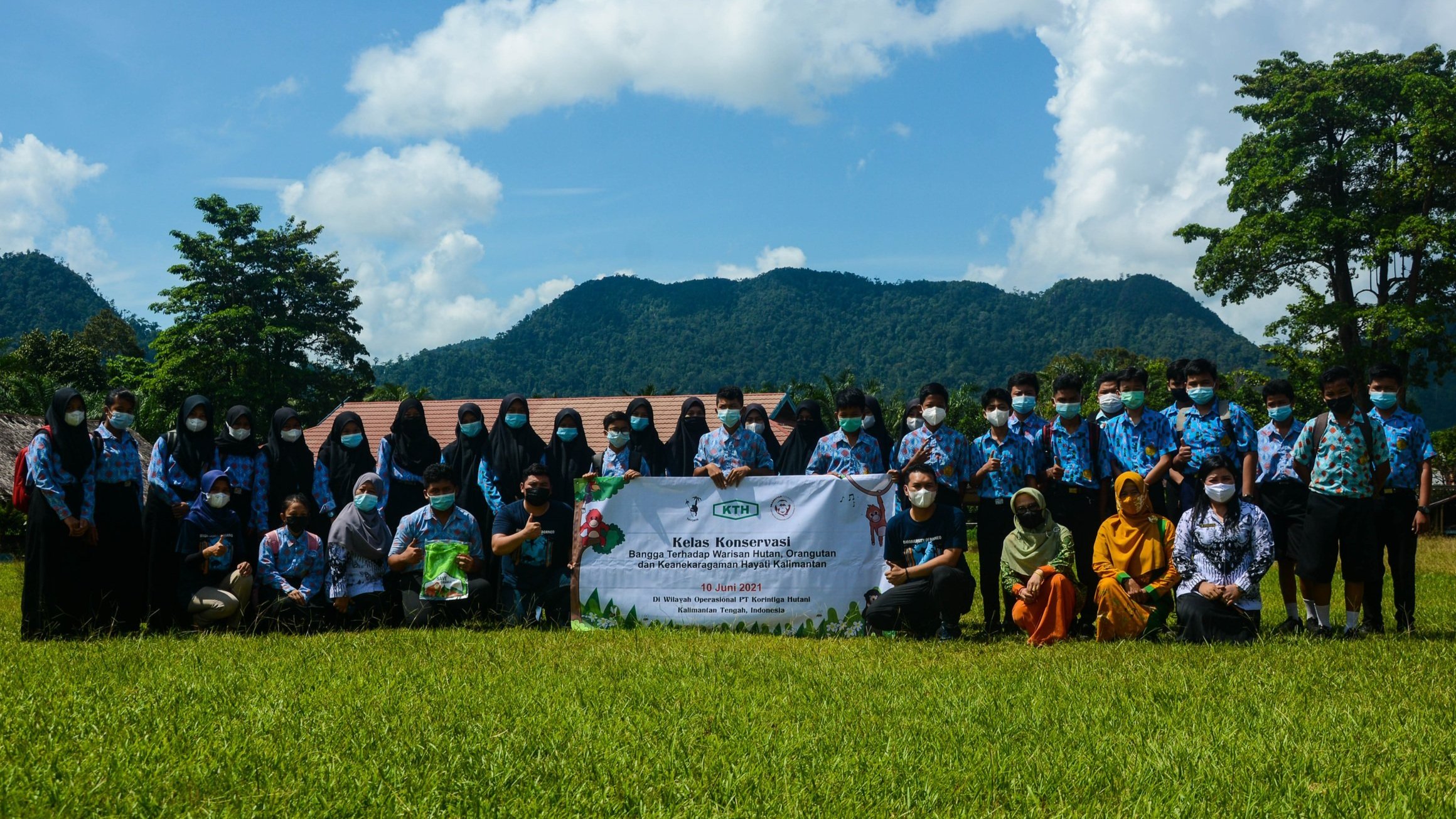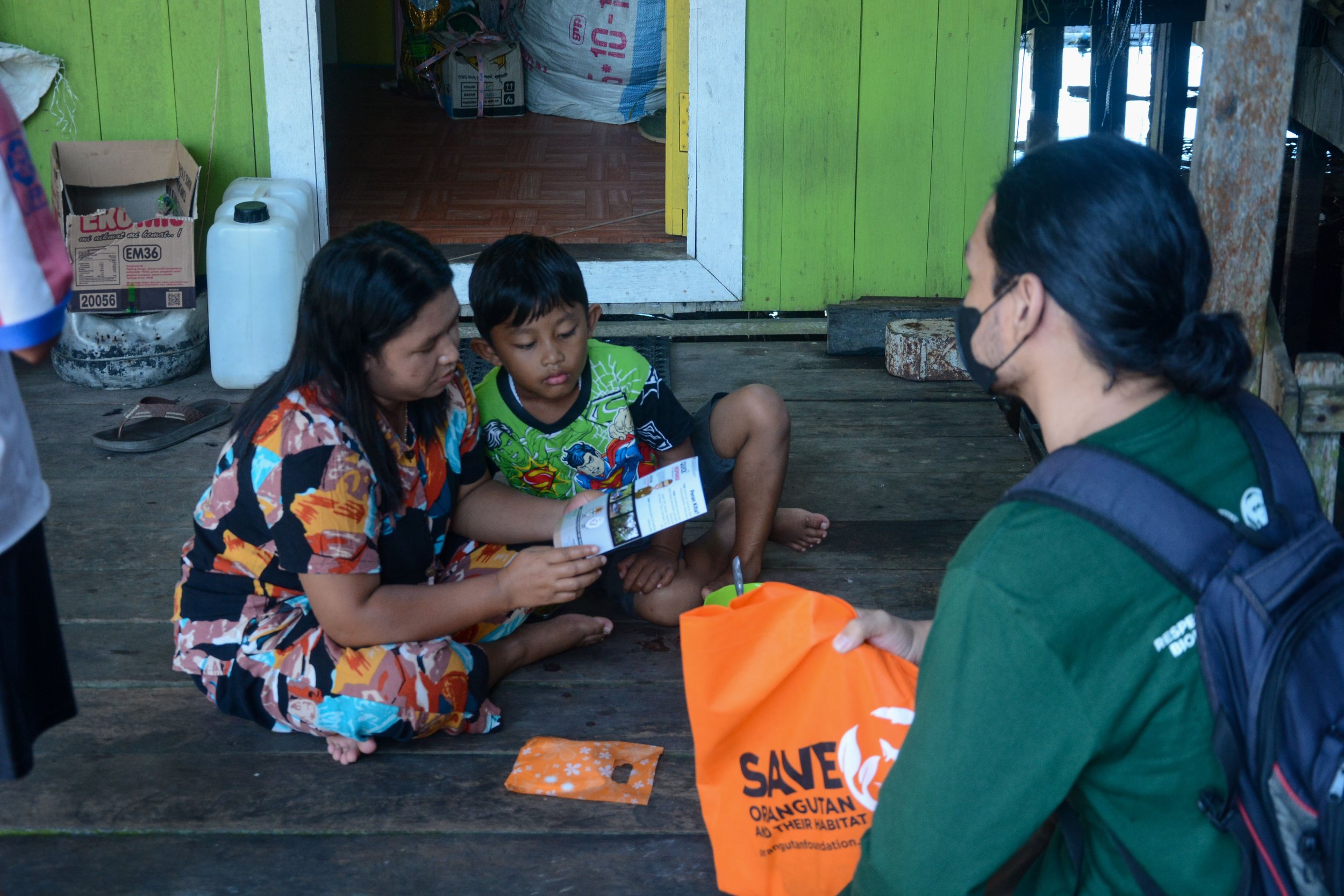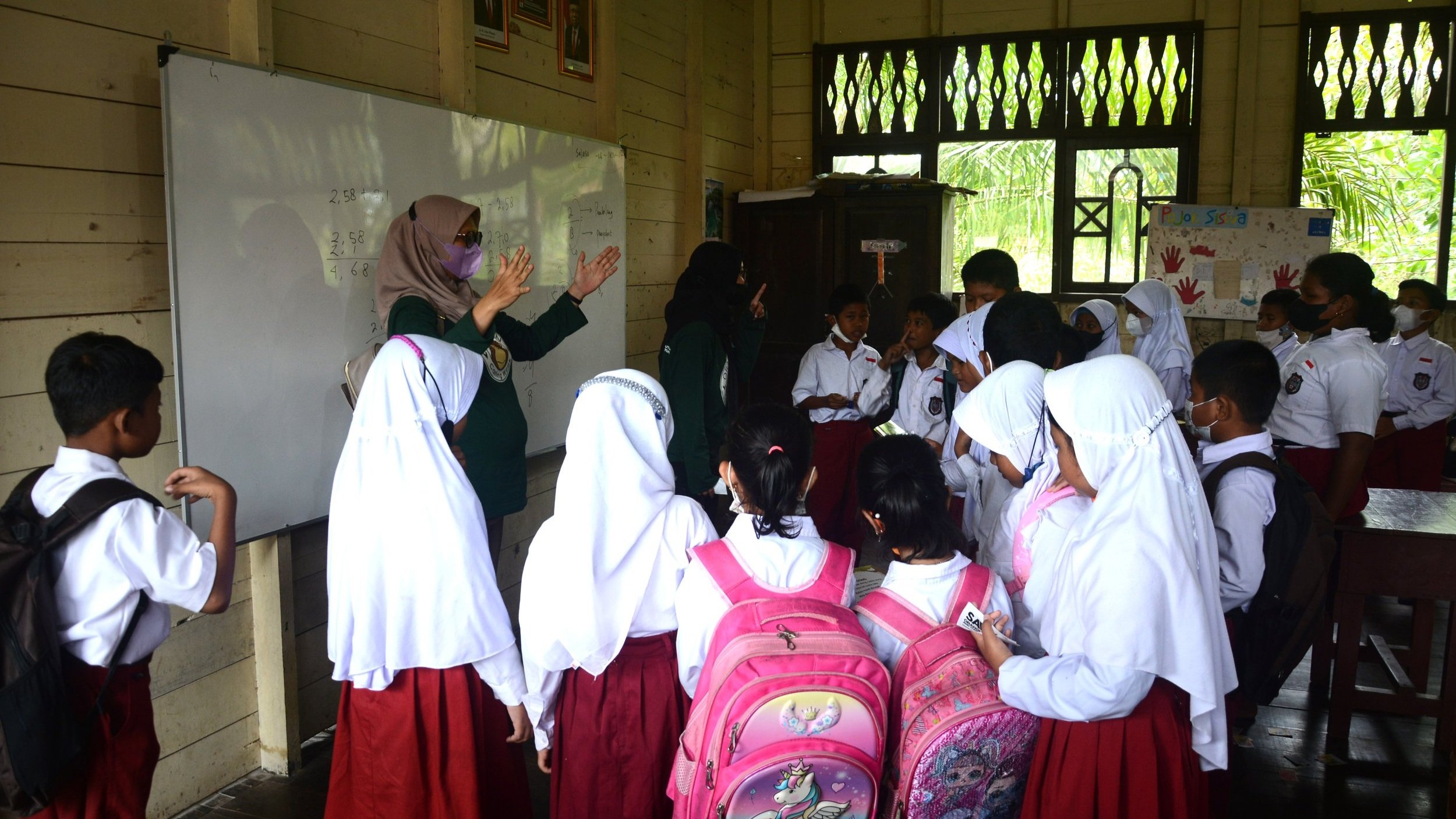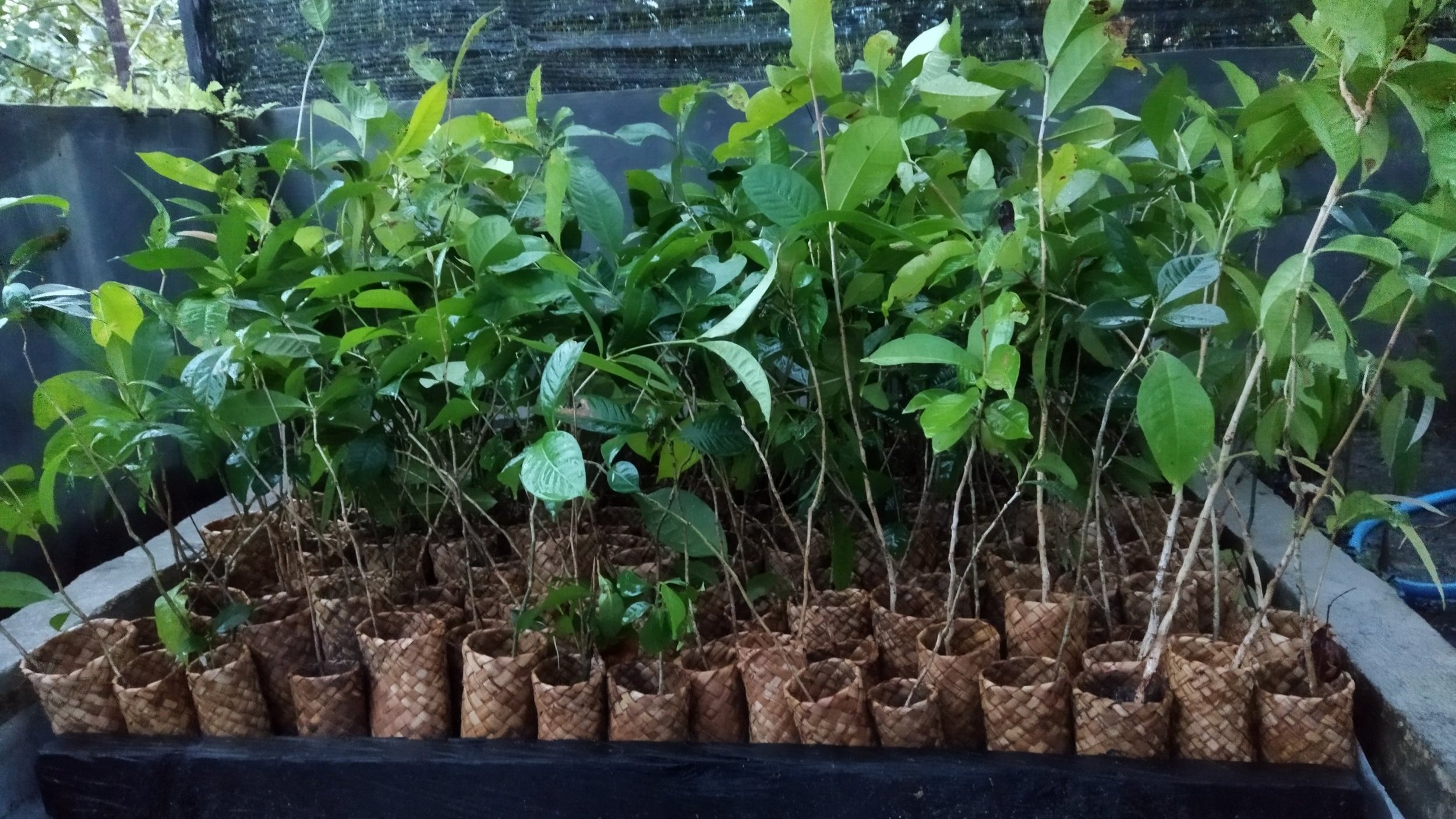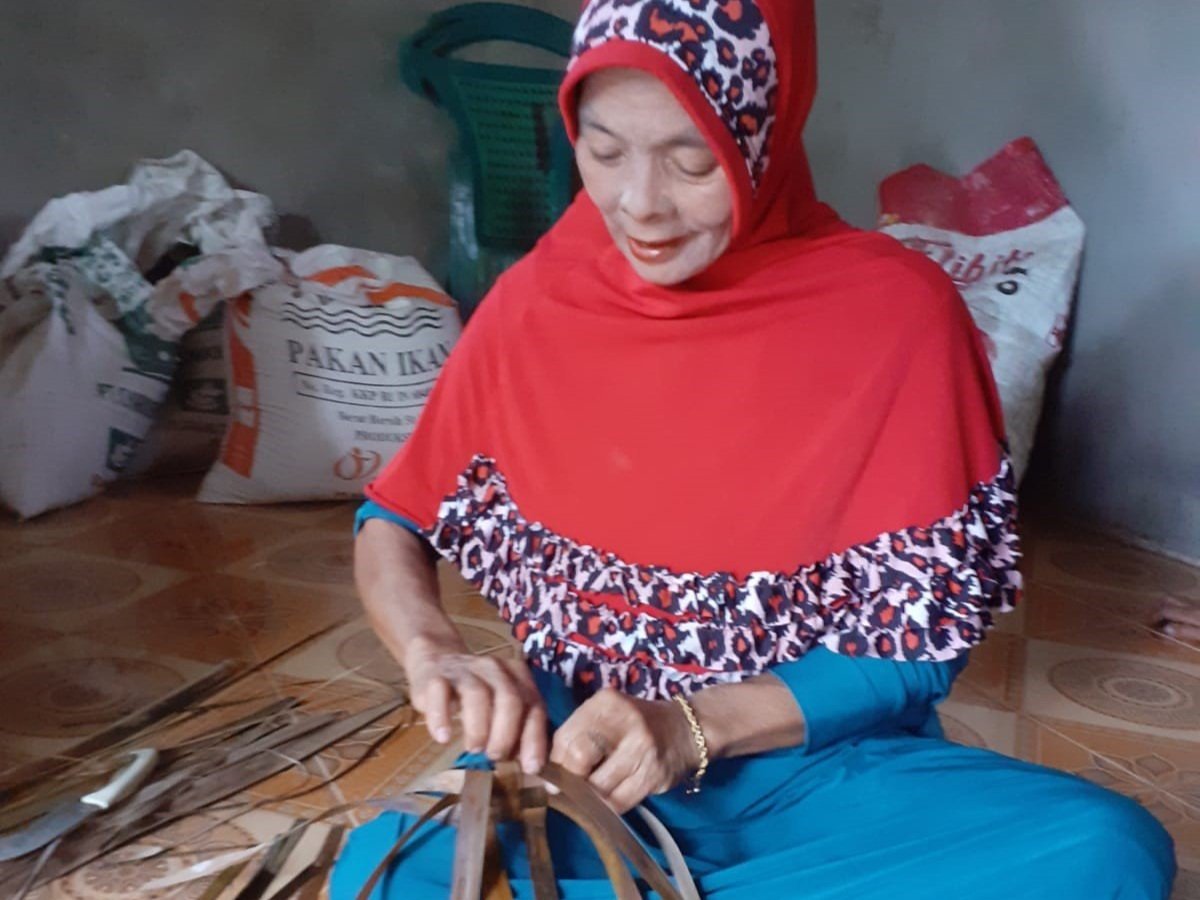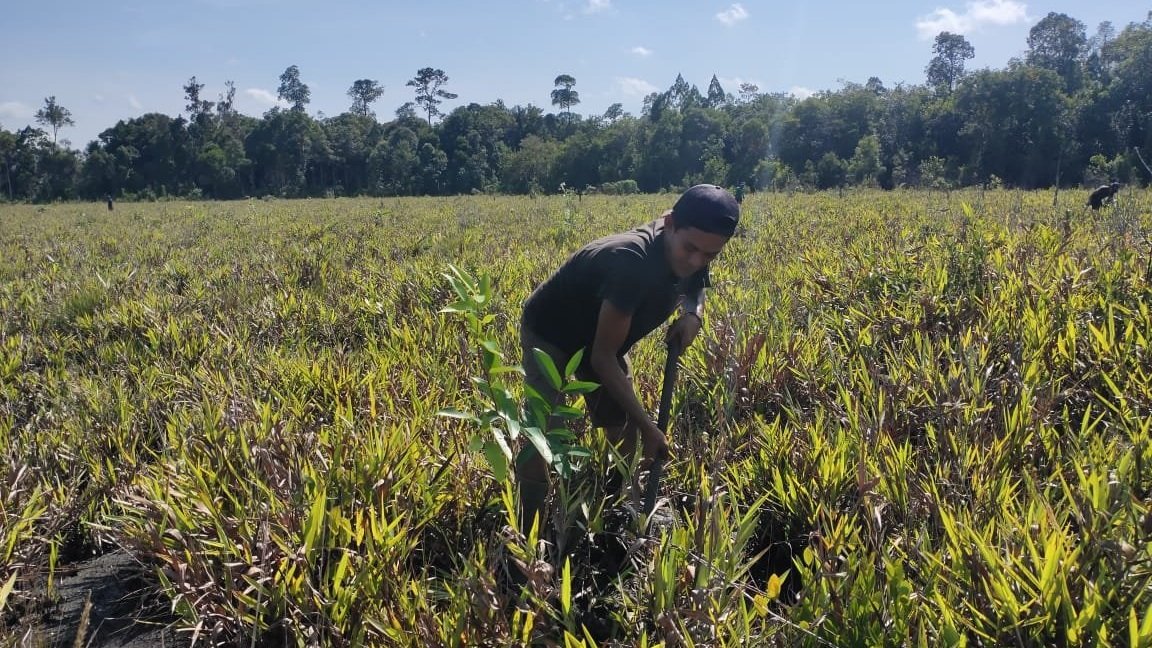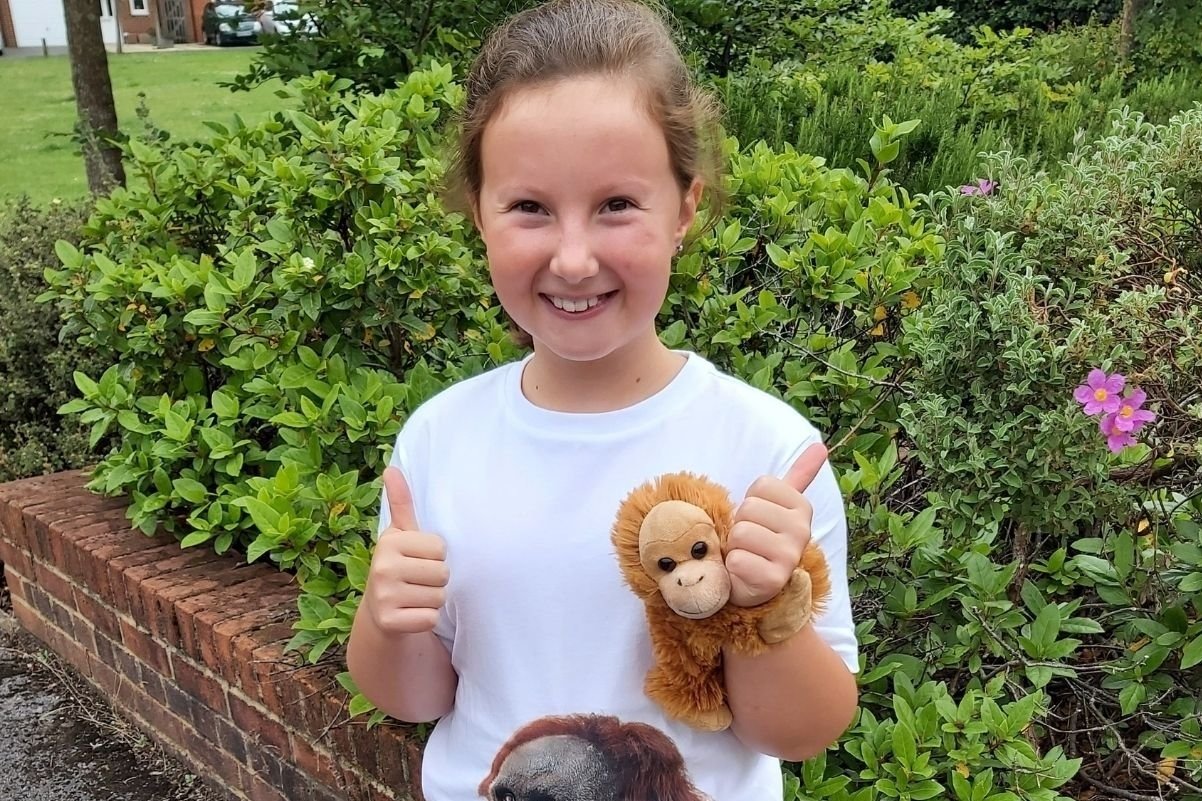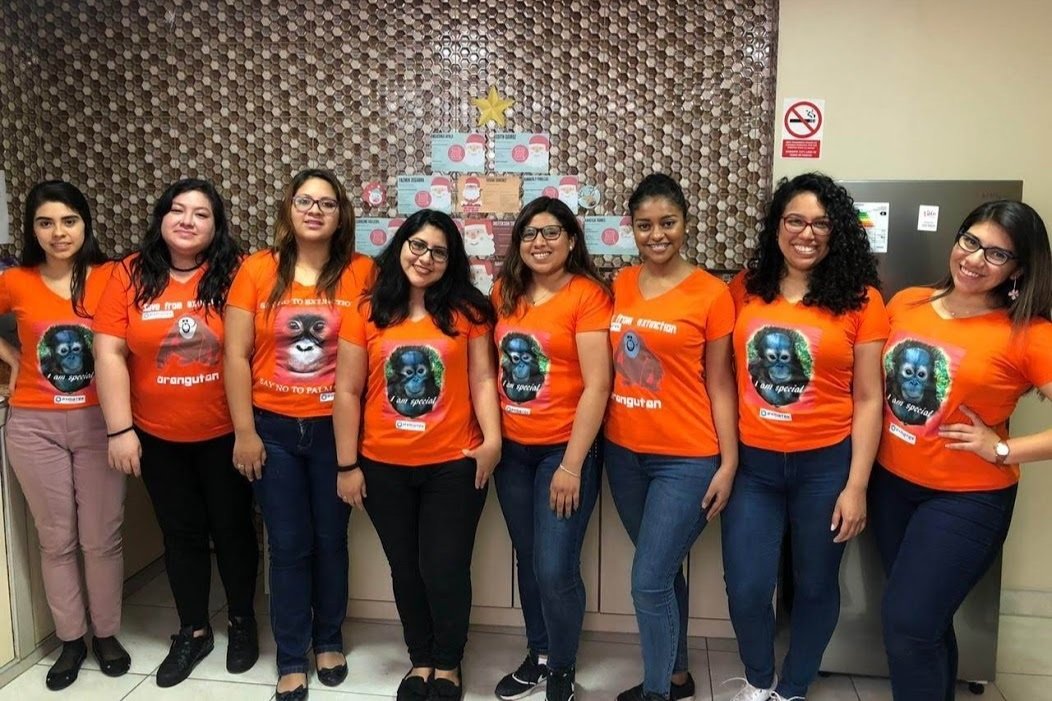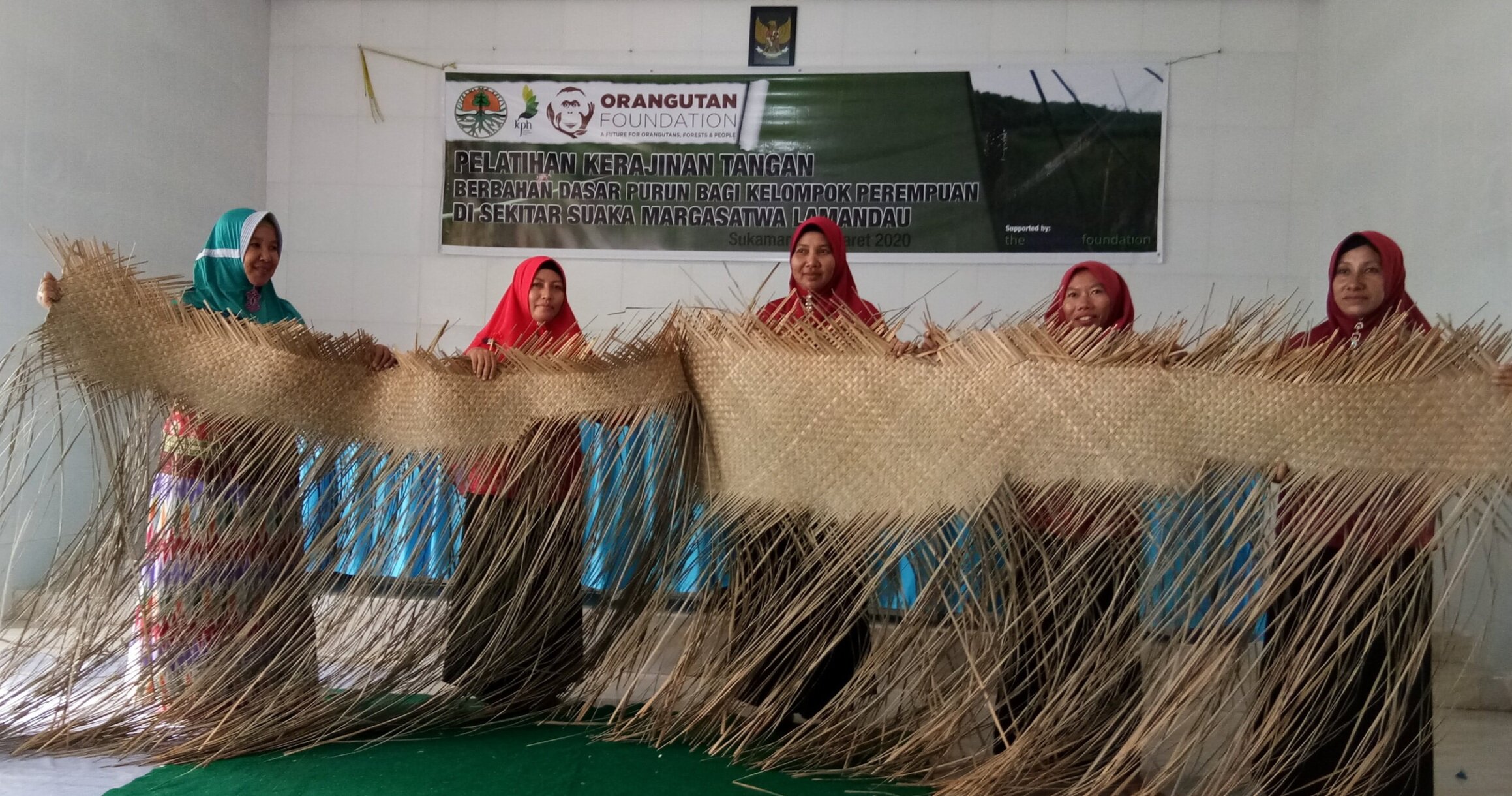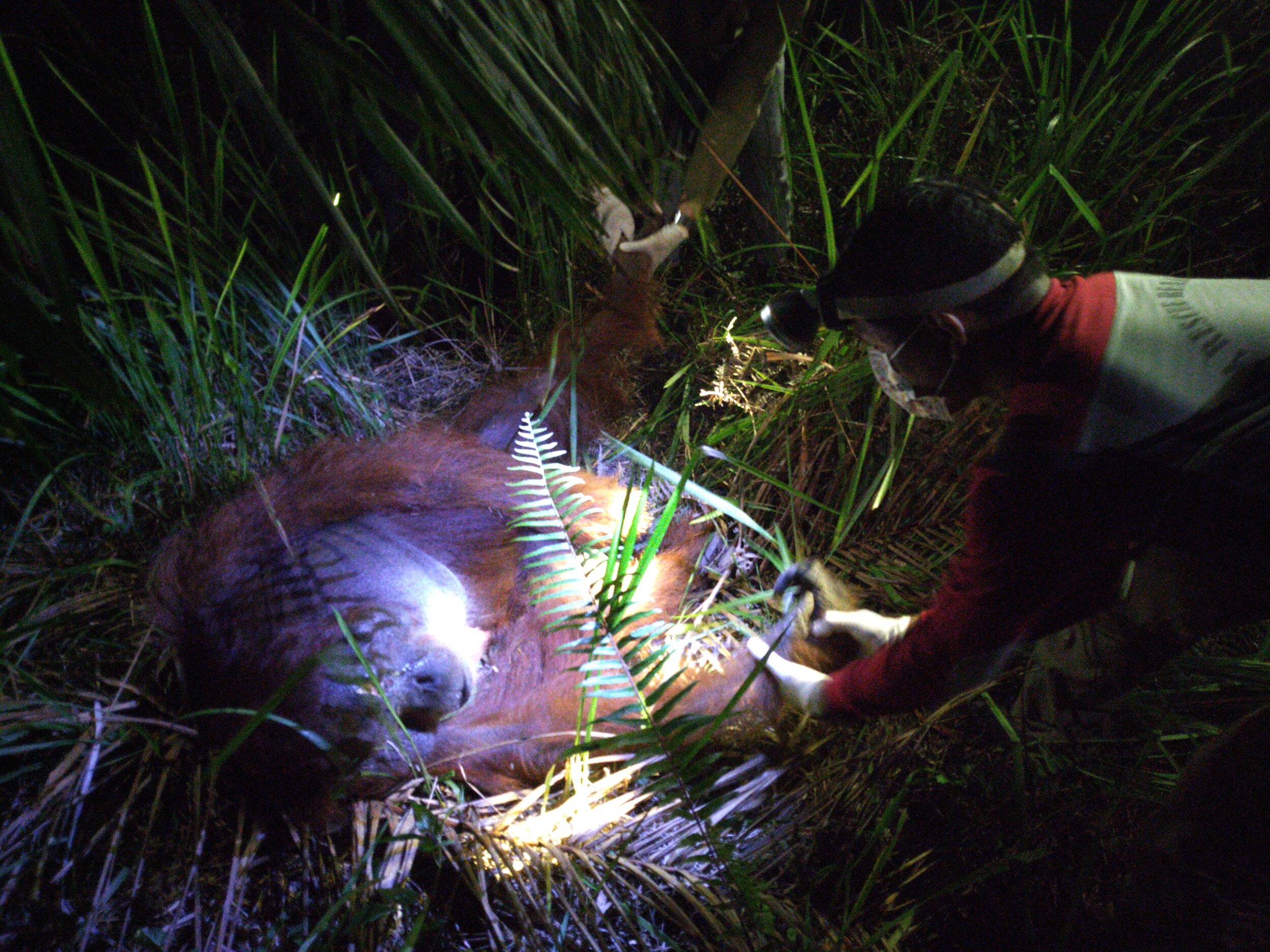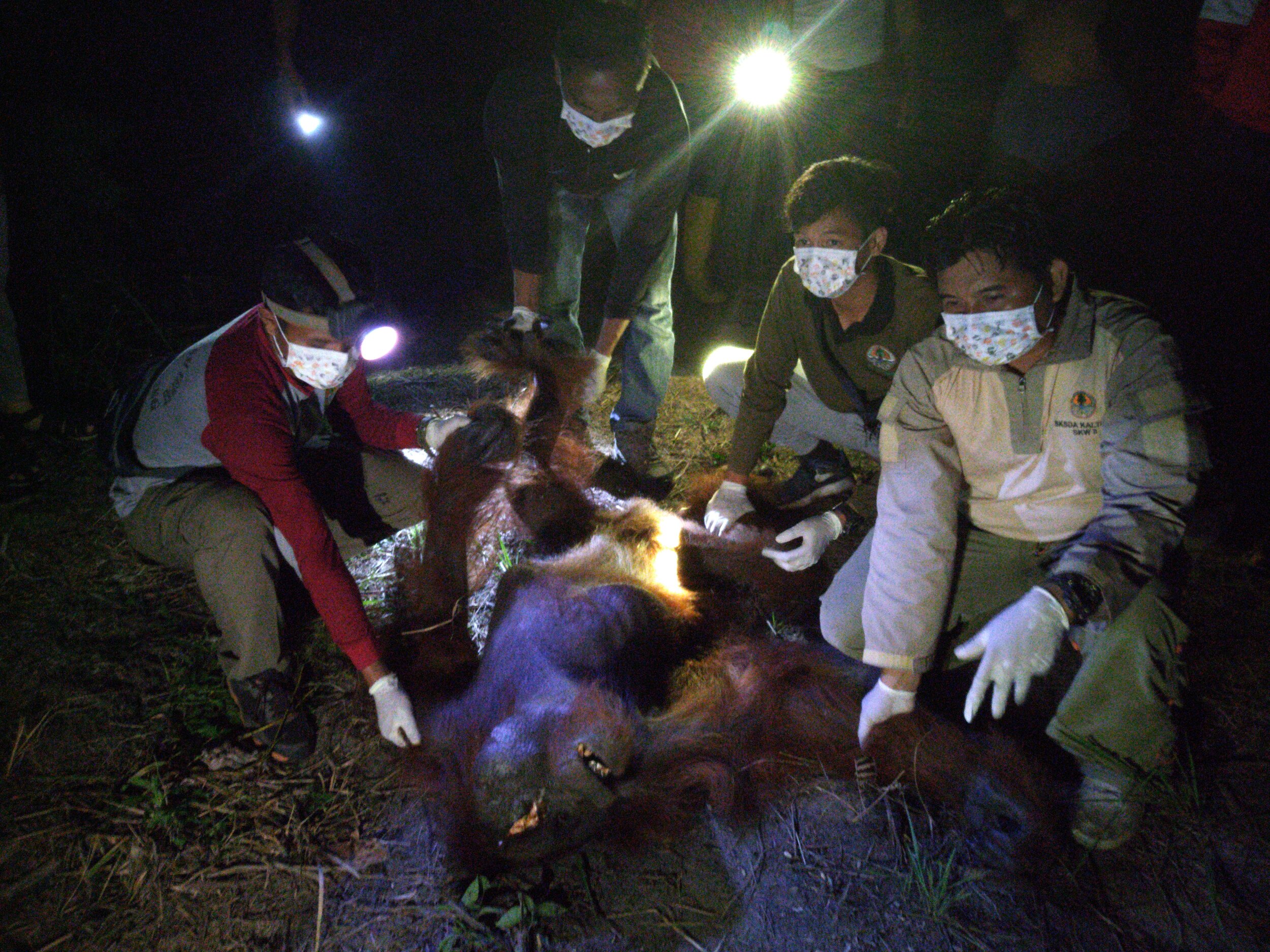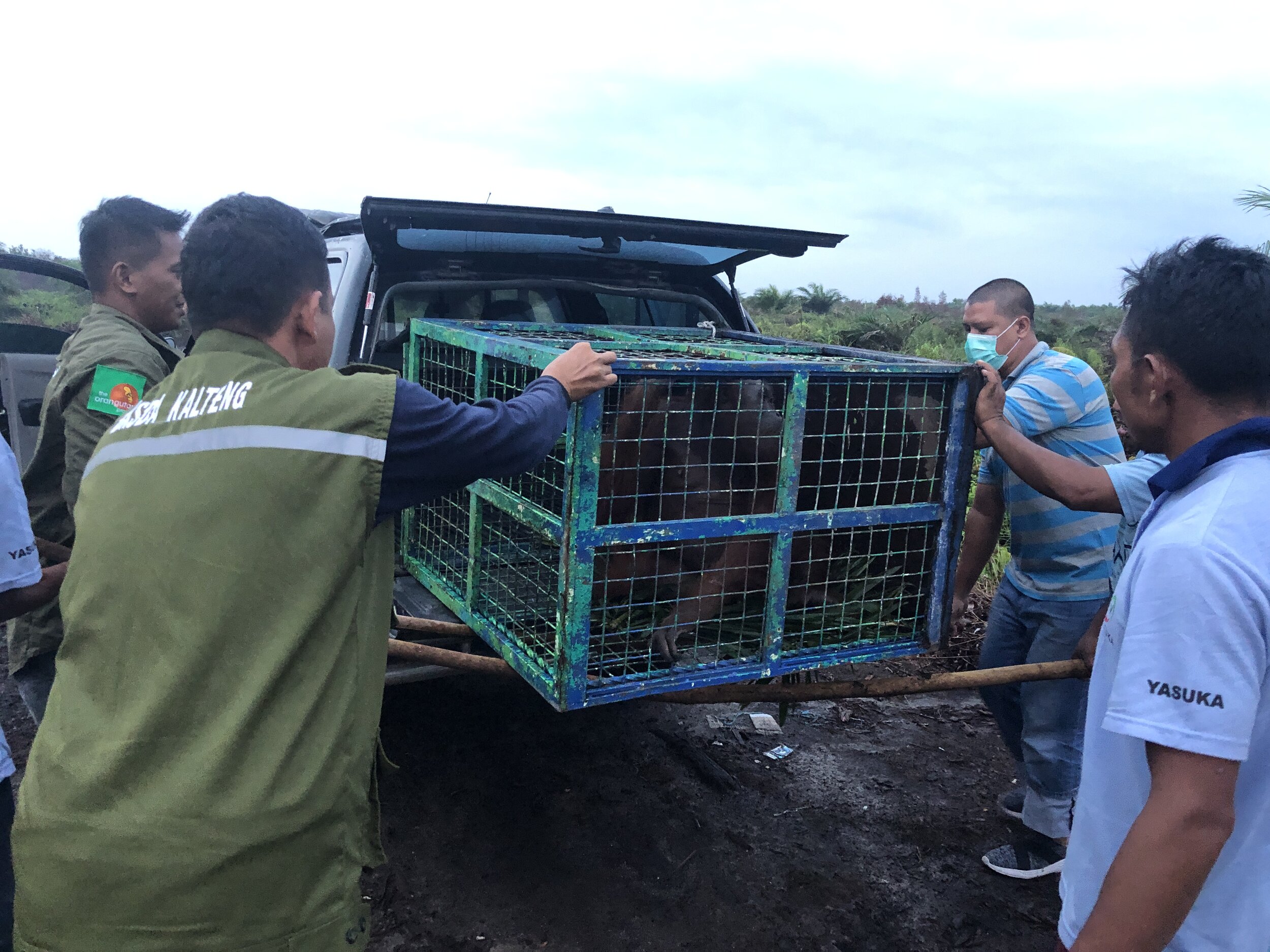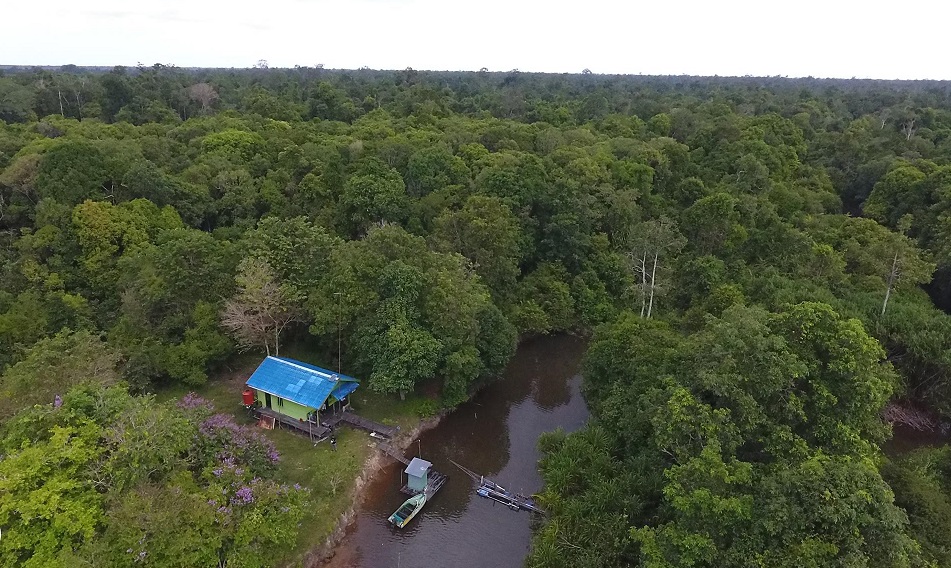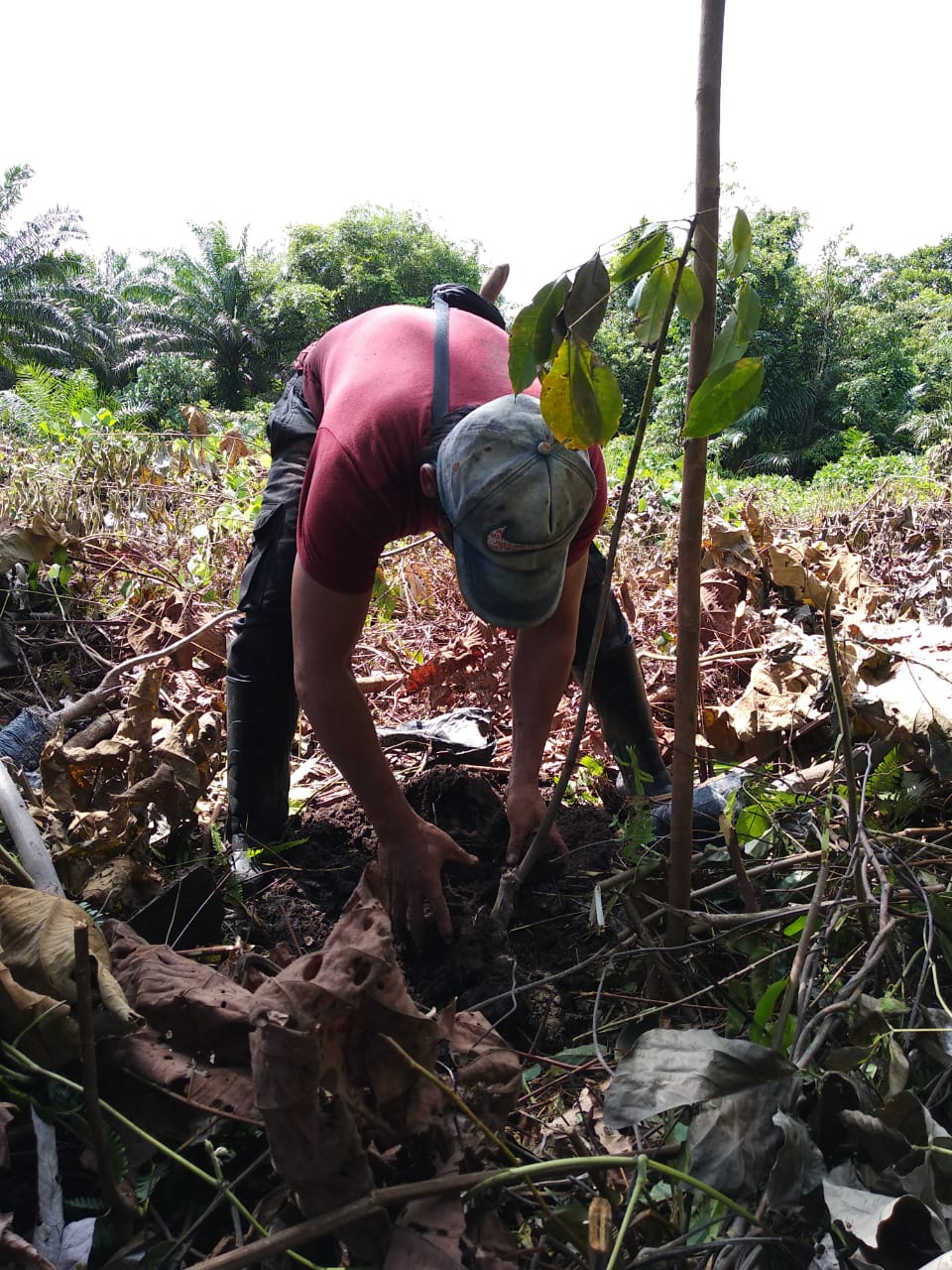Peat swamp forests support unique biodiversity not found anywhere else on earth - but less known is their critical role for our planet in mitigating climate change. With over 80% of peatlands already destroyed, we must do our part to protect those that remain… before it’s too late.
Saving the most endangered great ape - the Tapanuli orangutan
With only 800 individuals remaining in the wild, the Tapanuli orangutan is the rarest species of great ape. Their home in the mountainous forest of Batang Toru, Northern Sumatra, spans around 250,000 acres but is heavily fragmented due to habitat loss. Consequently, this means that the Tapanuli orangutan is also the most vulnerable of the great apes to become extinct.
We’re determined to provide a future for all orangutans, but as the Tapanuli’s forest is located far from our local programmes in Central Kalimantan, Indonesian Borneo, we’ve called upon a dedicated team who can help us.
Scorpion - The Wildlife Trade Monitoring Group, are a local NGO in Sumatra whose primary focus is to tackle animal exploitation by working with government and nearby communities. As their main goals match those of Orangutan Foundation, we could think of no one better suited to help us ensure a safer future for the Tapanuli orangutan, and here are three successful approaches that they use to do this:
1) Patrols. With the help of local law enforcement, patrol teams regularly visit 11 sites in the Batang Toru region which are orangutan habitats or areas of suspected illegal activity. It can be daunting prospect to explore a remote patch of rainforest which may harbour illegal loggers, miners, or wildlife traffickers, but it’s a necessary task to deter such destructive activity.
So far the team have caught illegal loggers felling trees for timber, reported man-made shelters in the forest which are likely used by hunters, and even uncovered patches of forest within nature reserves that have been cleared to make way for illegal plantations. All destructive behaviours which if left unfound, would destroy vast areas of orangutan habitat.
2) Investigations. As a result of these patrols, and by cooperating with local communities and government, the team can investigate these offenses further to thwart more habitat encroachment.
In some cases they have been able to identify names of loggers and ensure that previously used camps within protected areas have been abandoned. These surveys are ongoing, but to date have ensured that a dozen or so sites of illegal activity are no longer used.
3) Awareness. It’s paramount that we spread the word and remind local communities that their surrounding forests are essential for Tapanuli orangutans, and this has been communicated in a number of ways in the Batang Toru region.
Agriculture is the primary livelihood for many local people so instructive talks and discussions have helped encourage nearby villages to reduce the spread of their farmland into protected areas. Interestingly, the team have also incorporated the message into Friday prayers in mosques and Sunday sermons in churches to emphasise the matter and raise awareness to over 300 villagers. This is a unique approach but one that is proving to have a positive impact on the local perception of orangutans and their forests.
Despite major difficulties from the emergence of the global pandemic, the Scorpion team have worked wonders to protect the Batang Toru ecosystem. Through our partnership so far the team have helped strengthen over 15,000 hectares of strict conservation area, providing a safer forest for Tapanuli orangutans and encouraging better relations with local people for the future. From their findings it’s clear that habitat loss and encroachment will continue to be a major hurdle, but there are at least effective ways of resolving this with the right support.
2021 - A year to remember
With your support, 2021 has undoubtedly been a year to remember:
New Life. After nine months of waiting, there’s nothing more exciting for our orangutan monitoring teams than to see a female arriving at camp with an infant; and this happened seven times in Lamandau Wildlife Reserve in 2020!
Remarkably in 2021, we’ve continued to witness even more orangutan births. First came Sheila with her infant Silva, followed by Ilik with her infant Ilan, and recently we’ve spotted Camelia with her infant Tasia! When we consider that our team have documented 92 wild orangutan births in this forest between 2003 and 2021, it shows that this Reserve is clearly an optimum habitat for this species. Knowing we have increased the population of a critically endangered species by 92 has to be one of our proudest achievements.
Second Chances. When restrictions from the pandemic eased, it gave our field team the opportunity to complete the final and perhaps most rewarding part of our orangutan soft-release programme, to release orphans back into the wild where they belong.
Okto, Pegi, and Bumi were each previously kept as pets so they had many skills to learn without their mother. It’s therefore understandable for them to take some time to become fully prepared for an independent life. Together this trio had spent almost a decade under the tutelage of our staff, until this year the time had finally come for them to be released and explore the forest on their own.
Following these departures, this year we also welcomed a new face into our care when one-year-old Sinta was discovered alone and abandoned in the Reserve. In soft-release she will have the opportunity to strengthen her forest skills so that she too can be released one day!
A Flourishing Forest. We know that tropical rainforests are the most biodiverse terrestrial ecosystems on earth, but there’s so much of this rich habitat we cannot see. By strategically positioning remote camera traps and carrying out surveys in the dead of night, we can glimpse a little more into this hidden world.
This year our team at Pondok Ambung Tropical Forest Research Station have continued to monitor the health of Tanjung Puting National Park’s biodiversity by recording sightings of vulnerable species such as tarsiers, clouded leopards, sun bears, proboscis monkeys, false gharial crocodiles, and many more. If we needed reminders to why we should protect this forest, what better examples than these!
Working Remotely. You don’t get the best Wi-Fi signal in the rainforest, but technology has enabled us to communicate and engage with wider audiences from homes and offices this year. On International Day of Forests in March, our Director Ashley Leiman OBE together with Ian Redmond OBE and Dr Ian Singleton OBE hosted an enlightening live webinar to discuss the past, present, and future of orangutan conservation.
In the field our team have also embraced this new way of working. Conservation Corner for example is a section our local office where youth groups, students, researchers, and members of the conservation community would meet to exchange strategies and ideas. Now this discussion is often held online which means that it can be shared quickly and be accessible to a wider audience.
Cooperation. In June we were delighted to sign our third Memorandum of Understanding with the Indonesian Ministry of Environment & Forestry allowing Orangutan Foundation to continue our work in Central Kalimantan.
Following the tightest restrictions of the pandemic, our engagement team couldn’t wait to get back out to schools and local communities this year. Several educational events were hosted in 2021, including some wonderful activities for Orangutan Caring Week in November. Our dedicated team visited nearby villages and schools to raise awareness by handing out leaflets, books, and T-shirts. They were thrilled to see such enthusiasm on the faces of younger generations, and it was eye-opening to understand more about how animals from the forest and rivers impact the daily lives of local people. This cooperation and knowledge is essential to continue our vital work.
Future Forests. Forest fires occur each year in South East Asia. Fortunately though in 2021, we were pleased to see that the habitats we protect were not severely affected by fires, instead it was flooding that impacted many of our forest guard posts. This too is a reminder that the impacts of global warming are undeniably being felt in this part of the world.
Following the COP26 summit, our Forest Restoration team cultivated and planted around 30,000 young tree saplings this year to help reduce the impacts of climate change. Additionally, they decided to reduce our plastic waste by making the switch to biodegradable sapling bags. These bags are hand-made from pandan leaves by local villagers, providing an additional source of income and encouraging nearby communities to support their natural world.
Your Support. 2021 has been unique in many ways, but as in previous years, we have still received unwavering support from members, followers, and fundraisers this year.
Your commitment helped us reach our fundraising targets for our Green Match Fund, Christmas Challenge, and for International Orangutan Day you protected over 2,500 acres of orangutan habitat! Not to mention the sponsored bike rides, fun run’s, and bake sales which have all made a massive contribution towards the protection of critically endangered orangutans and the safeguarding of their crucial forest environment.
Thank you to everyone who has supported our ongoing conservation programmes this year and with your help we look forward to another memorable year in 2022!
Even 2020 can be an Inspiration
We didn’t expect our recap of 2020 to be quite like this.
Last year we were looking forward to celebrating the Foundation’s 30th anniversary, however life had other plans for all of us. COVID-19 impacted the lives of everyone both in the UK and in Indonesia, which meant we had to adapt. To commemorate our anniversary, we published a booklet ‘Orangutan Foundation - 30 Years of Conservation’.
Orangutans share around 97% of their DNA with humans, which means COVID-19 poses a potential threat to this critically endangered species. Fortunately however, none of the orangutans we monitor, or any of our 60 local staff have been taken ill by the virus. In fact if a small silver lining can be drawn from this difficult situation, it is that working and communicating remotely where possible has meant that everyone has learnt how to embrace the use of new technology, Zoom!
Community outreach and education is one of the fundamental cornerstones of the Foundation’s work. Therefore during lockdown, our team had to find new ways of working together remotely.
Conservation Corner, before and during the pandemic. This is a platform where local youth groups, students, researchers, and members of the conservation community can meet to exchange concepts and ideas. One online session had close to 100 people joining in, demonstrating the concern that younger members of the community have for the environment.
Local events are vital to keep raising awareness and promote habitat protection, and luckily before restrictions last year, we were able to hold a number of community activities. Including:
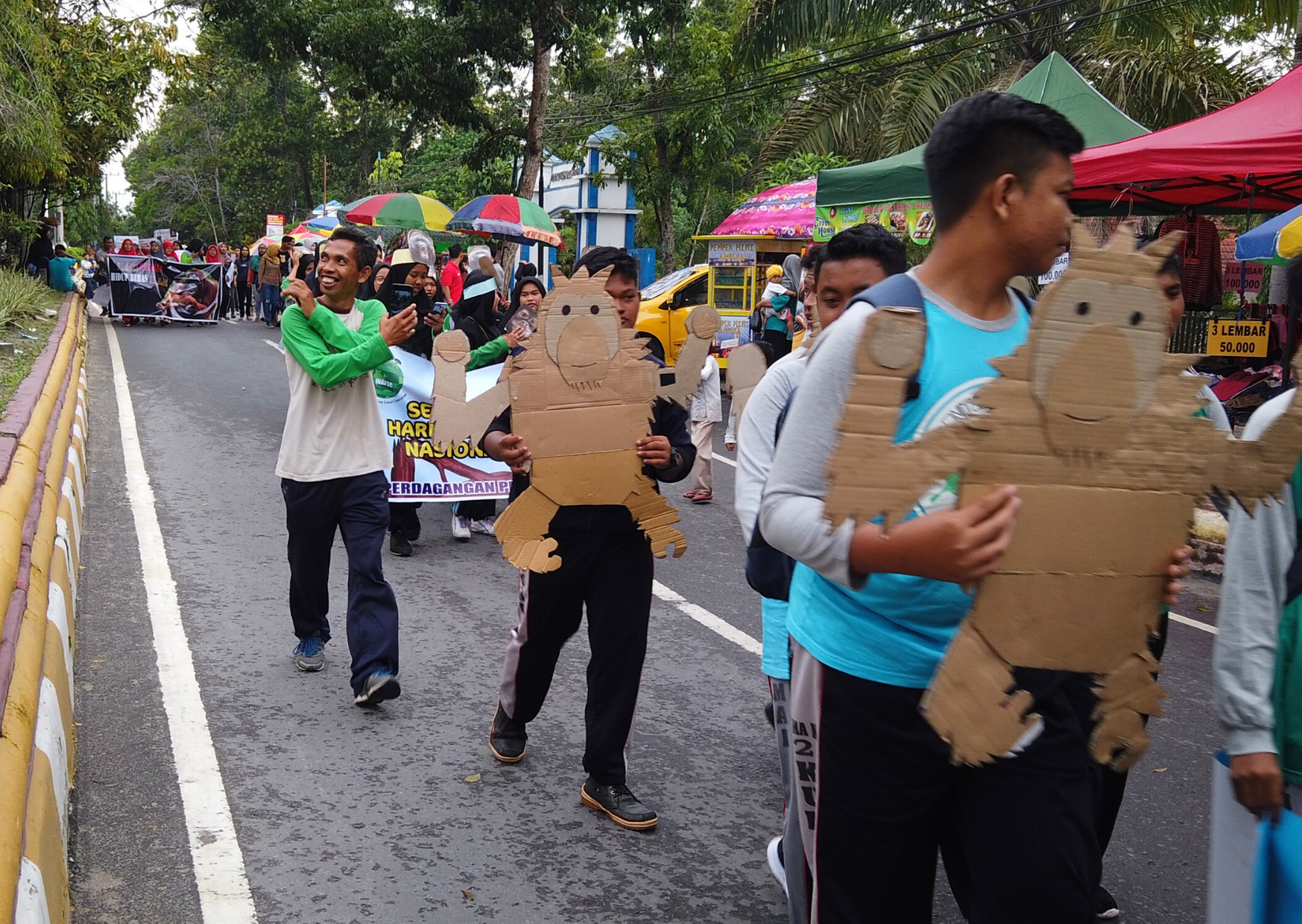
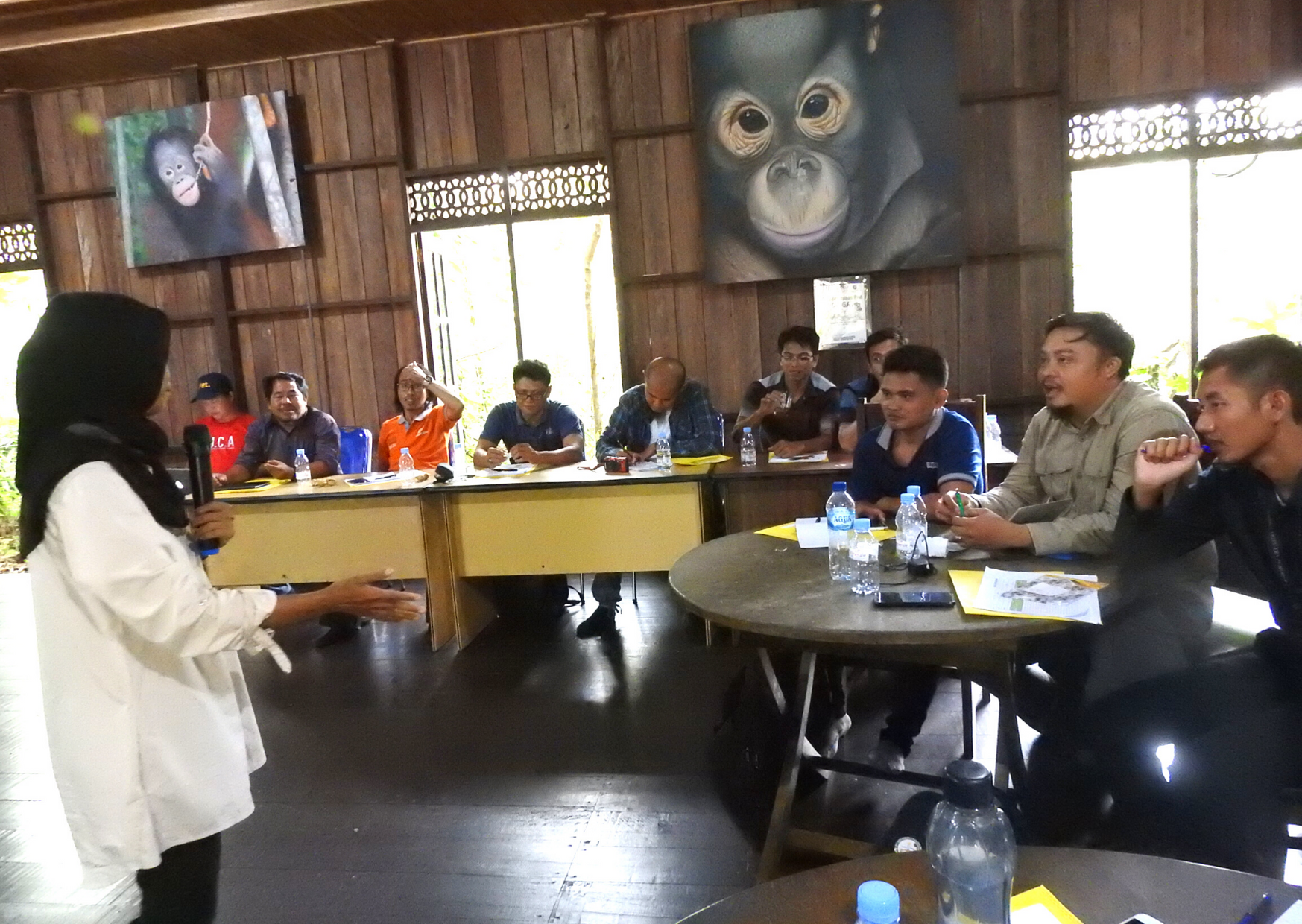


Our Forest Restoration Programme was active throughout the year. Our team planted an additional 16,500 young trees in areas which one day will bolster existing forest boundaries.
Much like us, in 2020 the forest also faced a new challenge. The rainforests of Central Kalimantan in Indonesian Borneo suffered some of the most severe flooding in recent memory, submerging large areas of habitat for much of the year. This is a stark contrast to previous years which would have been battling forest fires during the dry season. A striking reminder of how unpredictable our weather patterns have become as the impacts of climate change take hold.
Unsurprisingly, it was the orangutans that gave us the best news and most amusing stories last year. The orphaned orangutans in our soft-release programme for example continued to go from strength to strength as they develop new forest skills, with Okto in particular, impatient for an independent life in the wild.
In June, we were very excited to discover that wild orangutan Pauline had given birth in the Lamandau Wildlife Reserve. Then shortly after, our field team were surprised again when Queen showed off her infant. Two recorded births of these great apes in such a short space of time is unusual, so to have observed a remarkable seven orangutan arrivals by the end of November was truly astonishing! It’s an extremely rare occurrence to have so many recorded births in less than 6 months, but a welcome boost for the future of this critically endangered species.

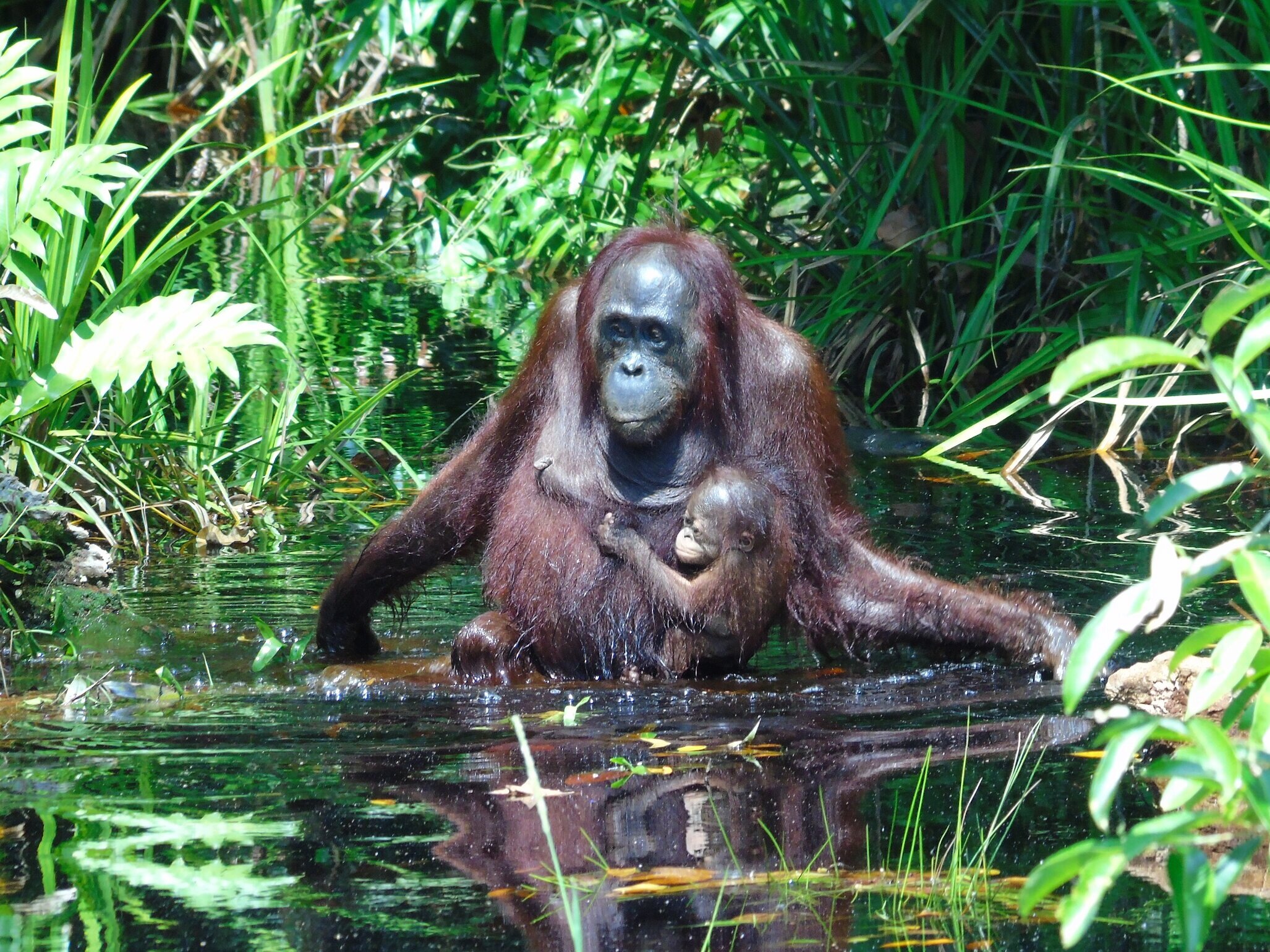
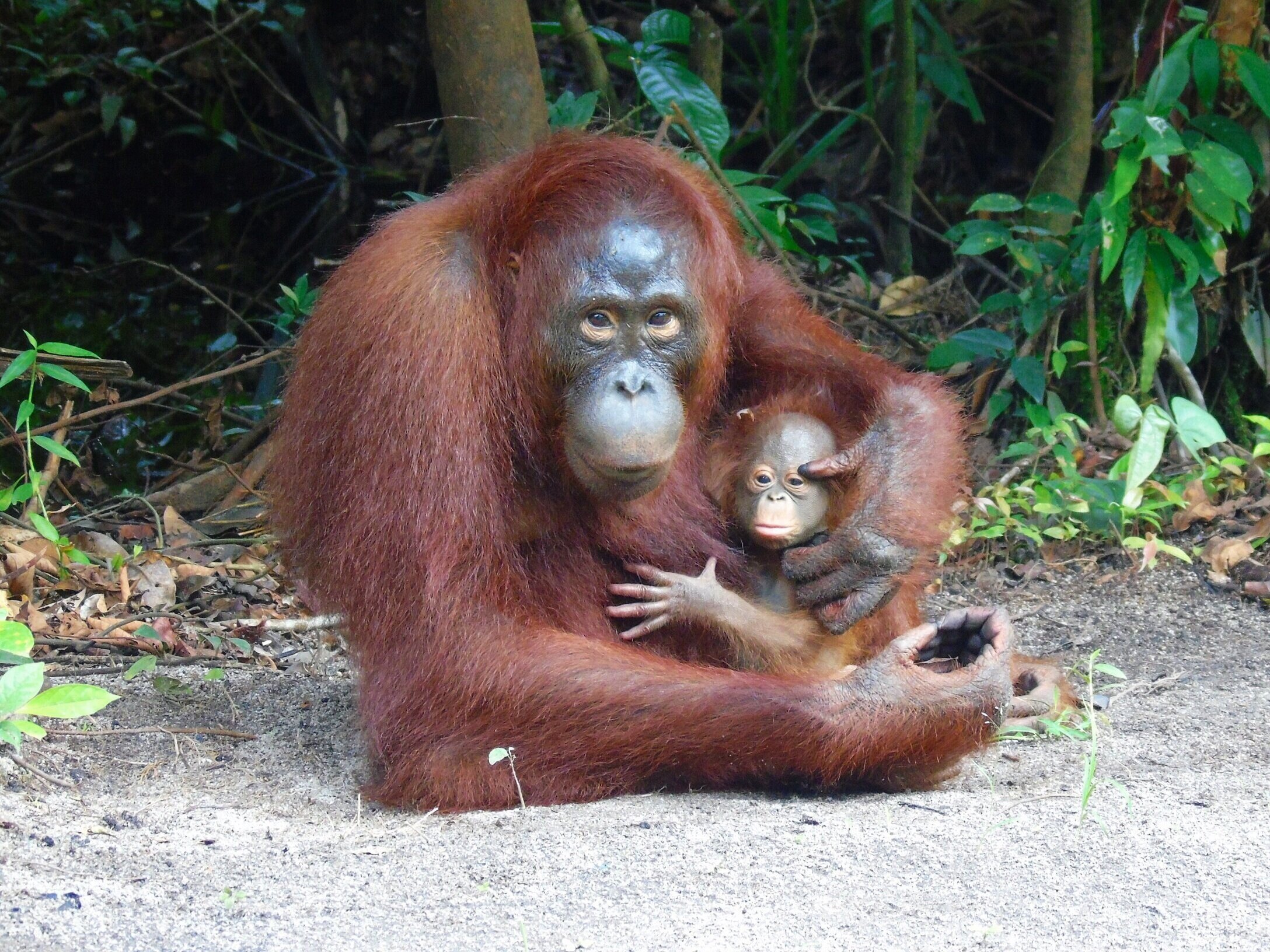
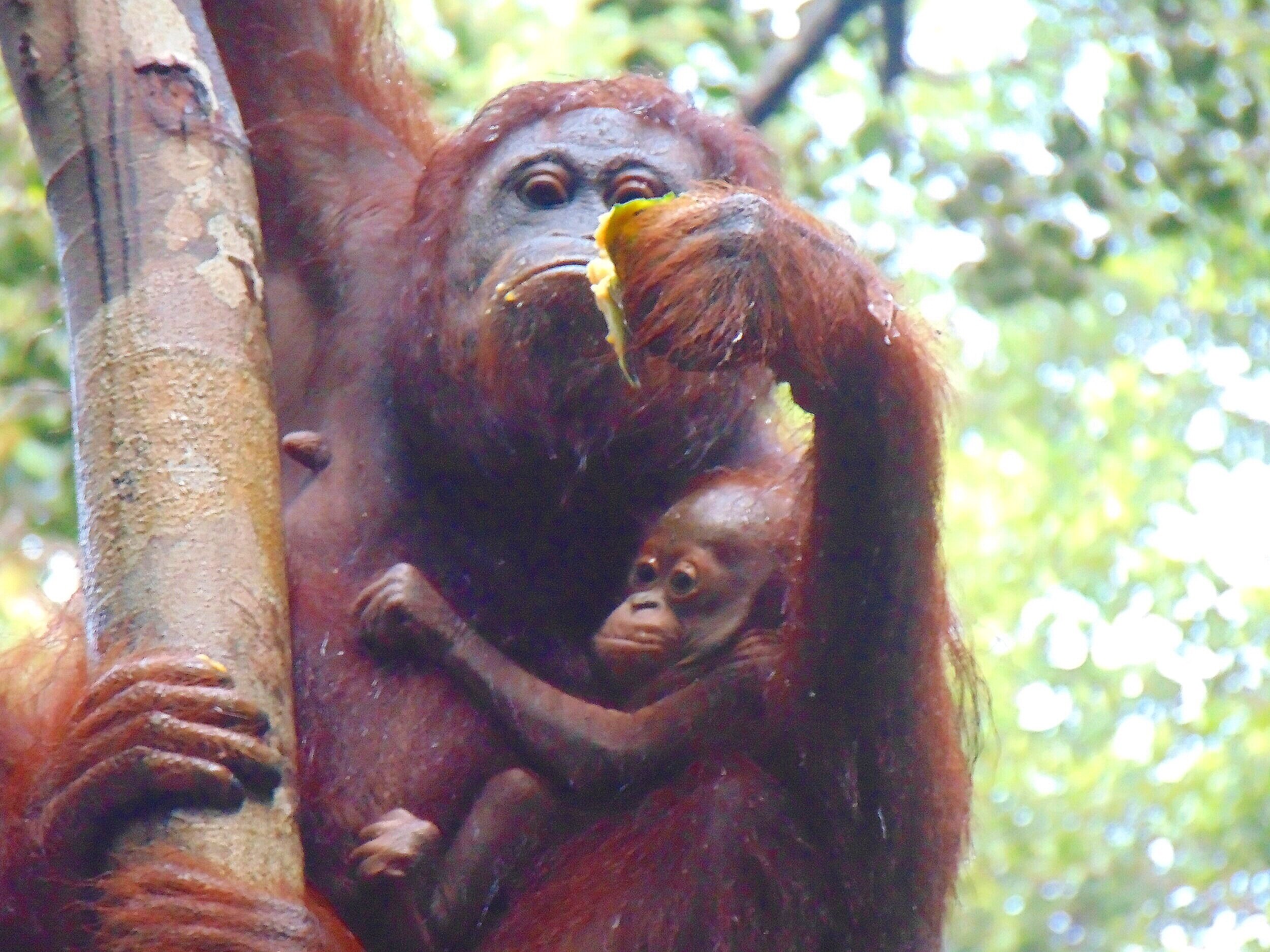
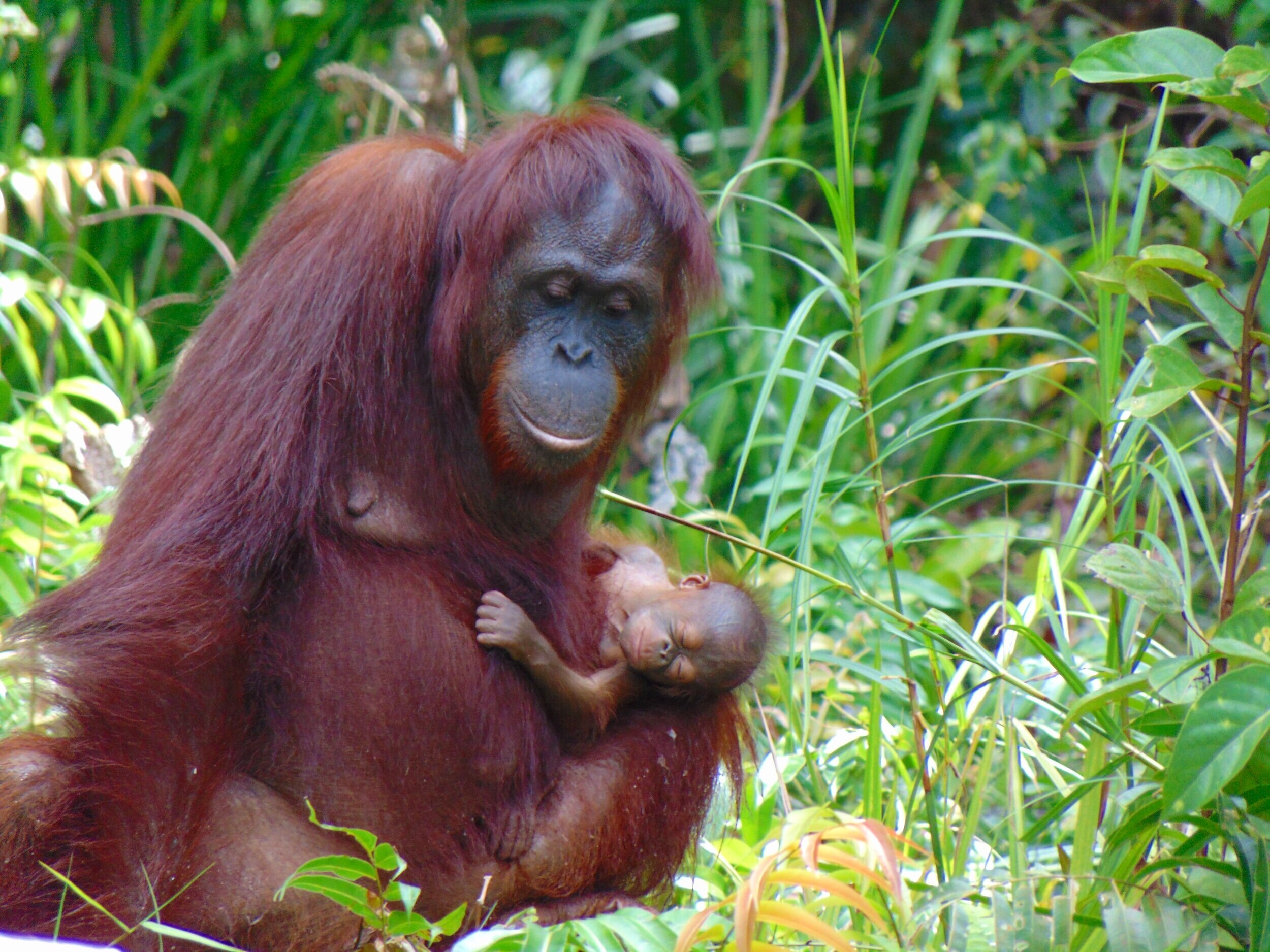

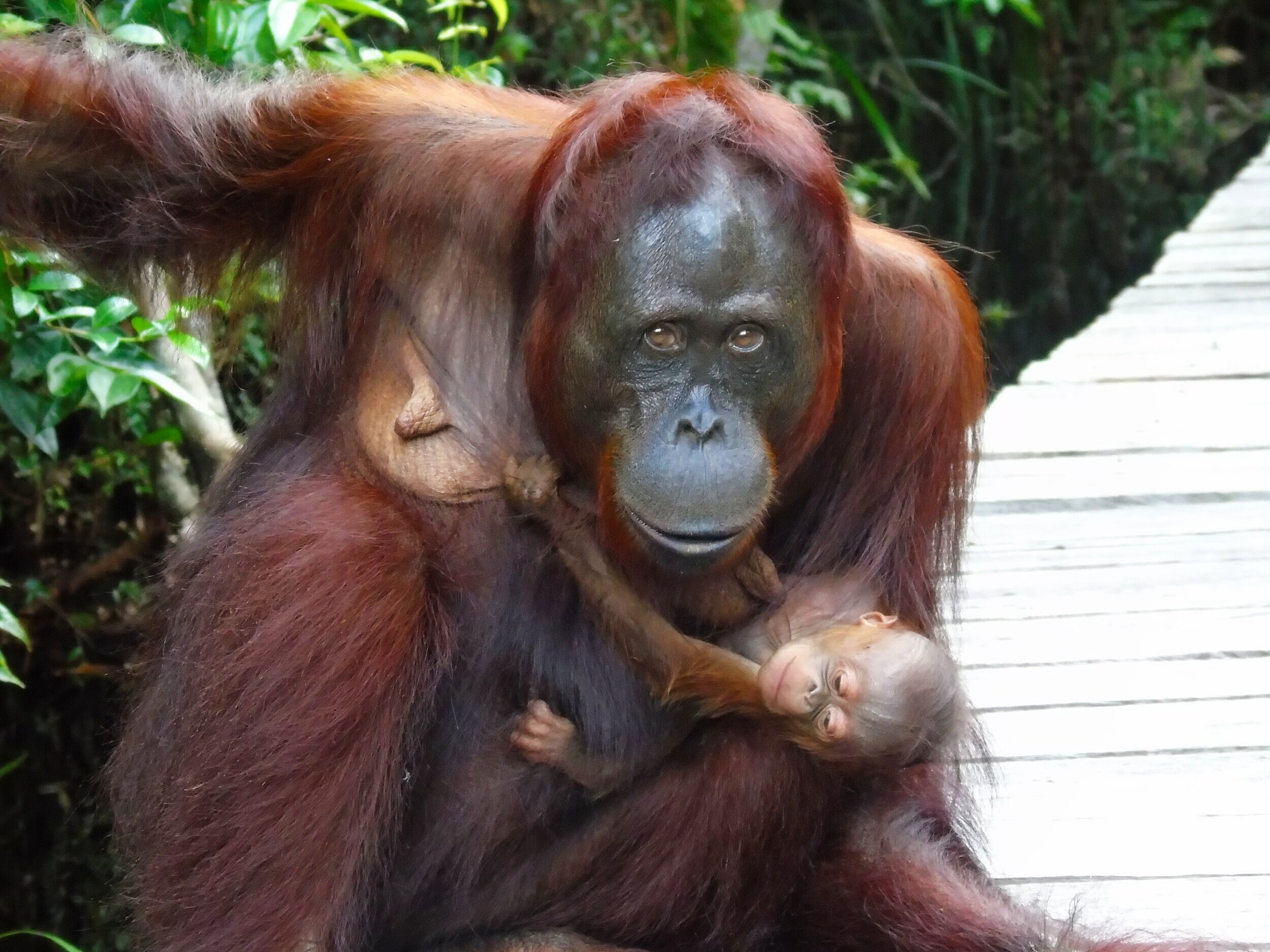
We were truly blown away by your support in 2020, in spite of restrictions. In particular for our 30th Anniversary Appeal which launched last year in collaboration with SOCP (The Sumatran Orangutan Conservation Programme), helping save all three species of orangutan.
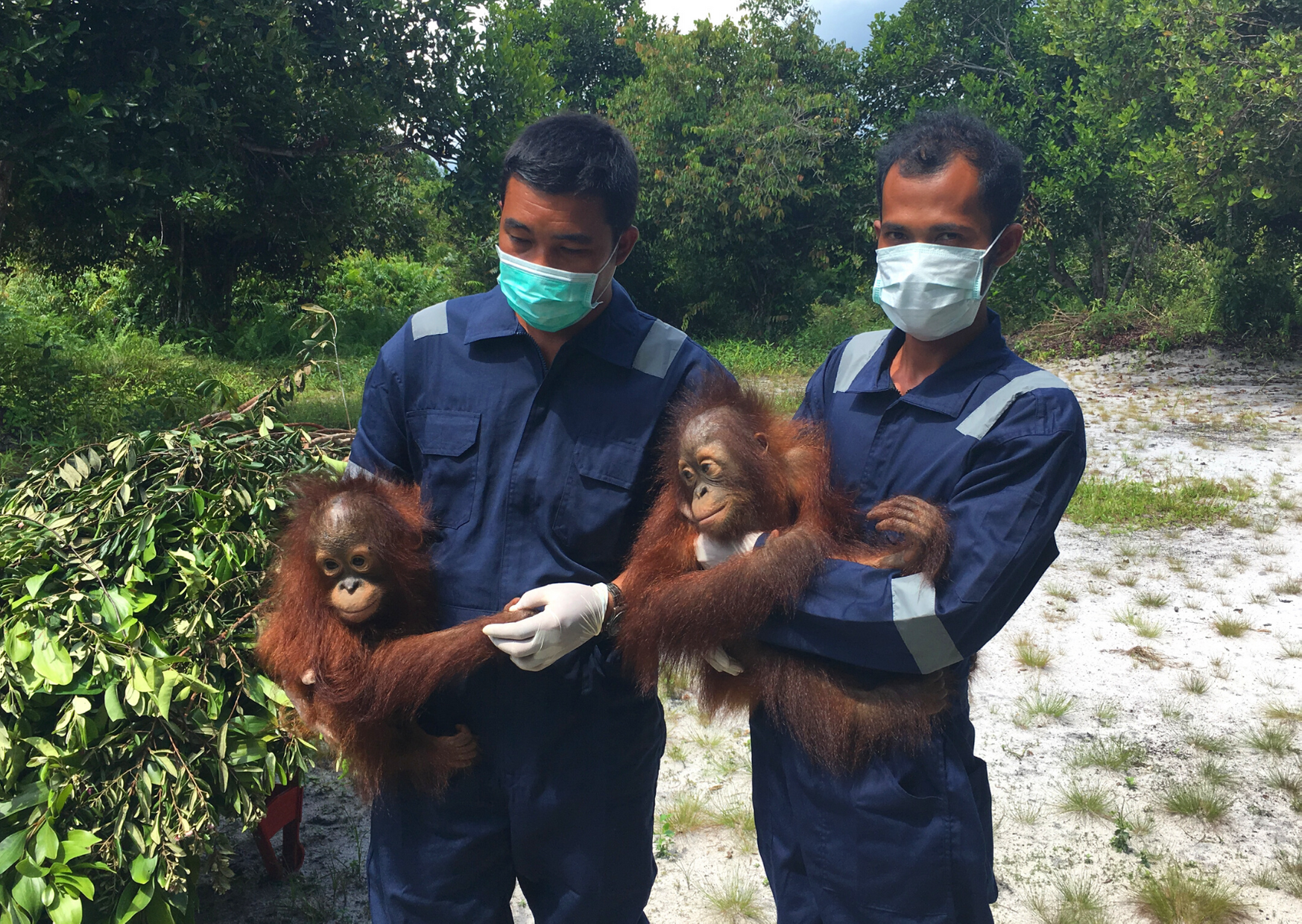
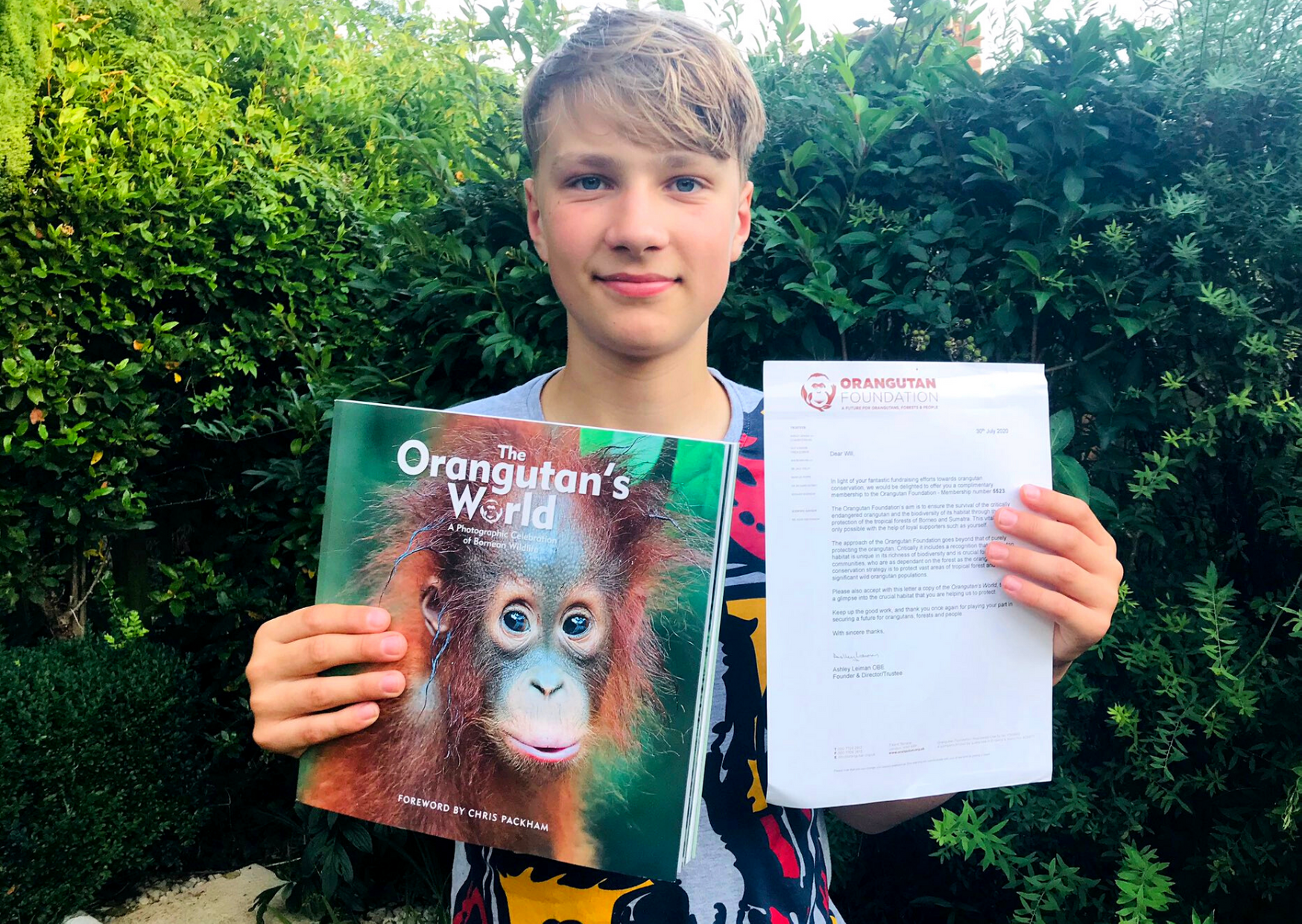
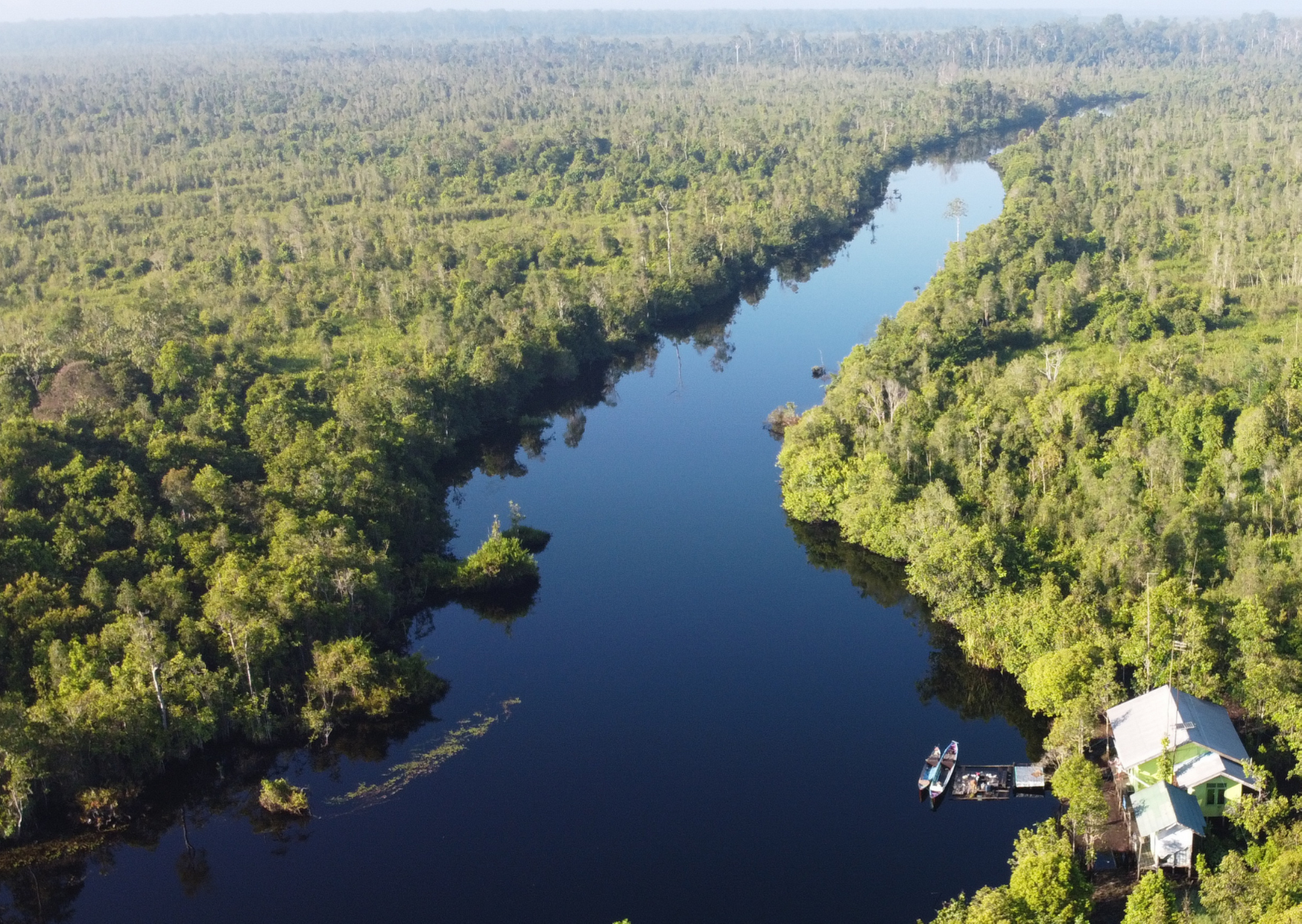

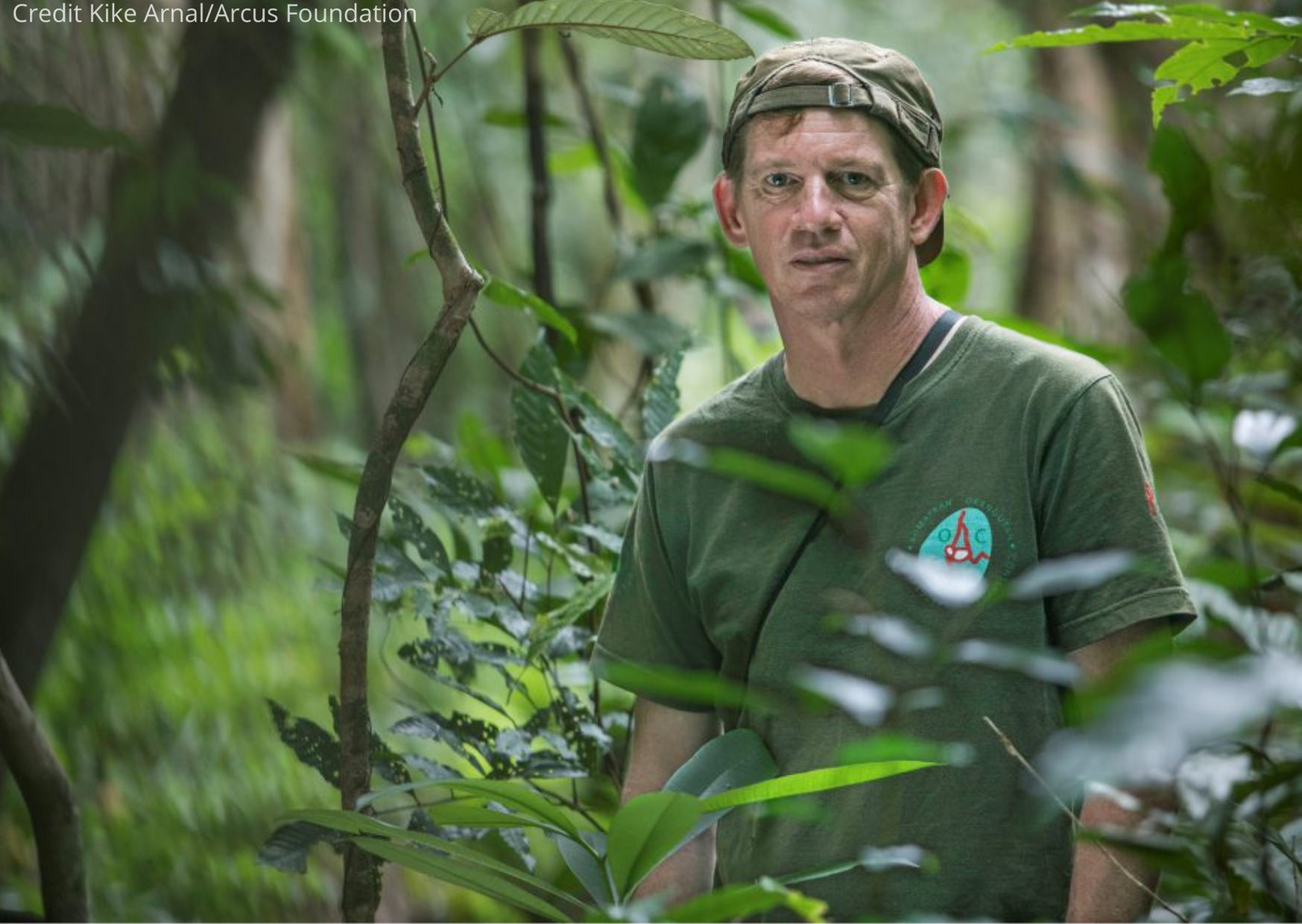
2020 will be remembered for many reasons, but perhaps more than any other year, it must be remembered for the connection we have made between the welfare of our planet and the importance of nature. By continuing to save our forests, we can mitigate the impacts of climate change.
We have been inspired and overwhelmed by the generosity we received in 2020, even through these difficult times. We sincerely appreciate the devotion of all partners, fundraisers, and supporters on Orangutan Foundation’s 30th anniversary year, and look forward to keep making a difference in the years to come.
Women working for a sustainable future
“Saving orangutans by protecting their tropical forest habitat, working with local communities and promoting research and education.” - This is part of Orangutan Foundation’s mission statement, and we work hard to provide a safe and sustainable future for Orangutans, Forests and People. It’s this final value, people, that can get overlooked, but local communities often rely on tropical forest environments as much as orangutans which is why we collaborate with them on all of our programmes.
Villagers practice sustainable farming techniques, such as processing ‘nipah’ fruit into brown sugar
It’s fitting that around the time of International Women’s Day, our team were working with a women’s farming association, local NGO Yayorin, and government officials to provide an educational workshop for harvesting non-timber products (above).
It was heartening for our team to observe 40 local people, the majority women, discussing and practicing a variety of farming techniques which may help create alternative sustainable livelihoods. As well as highlighting the need to reduce plastic waste, the workshop also provided the opportunity to raise further awareness of orangutans and the necessity to protect their forest habitats.
In the same week, our team also assisted with the coordination of a craft workshop where women from nearby villages could come together and learn new weaving skills. The group worked expertly to turn strips of an abundant plant known locally as ‘purun’ into durable mats which could be used at home or sold as an alternative household income.
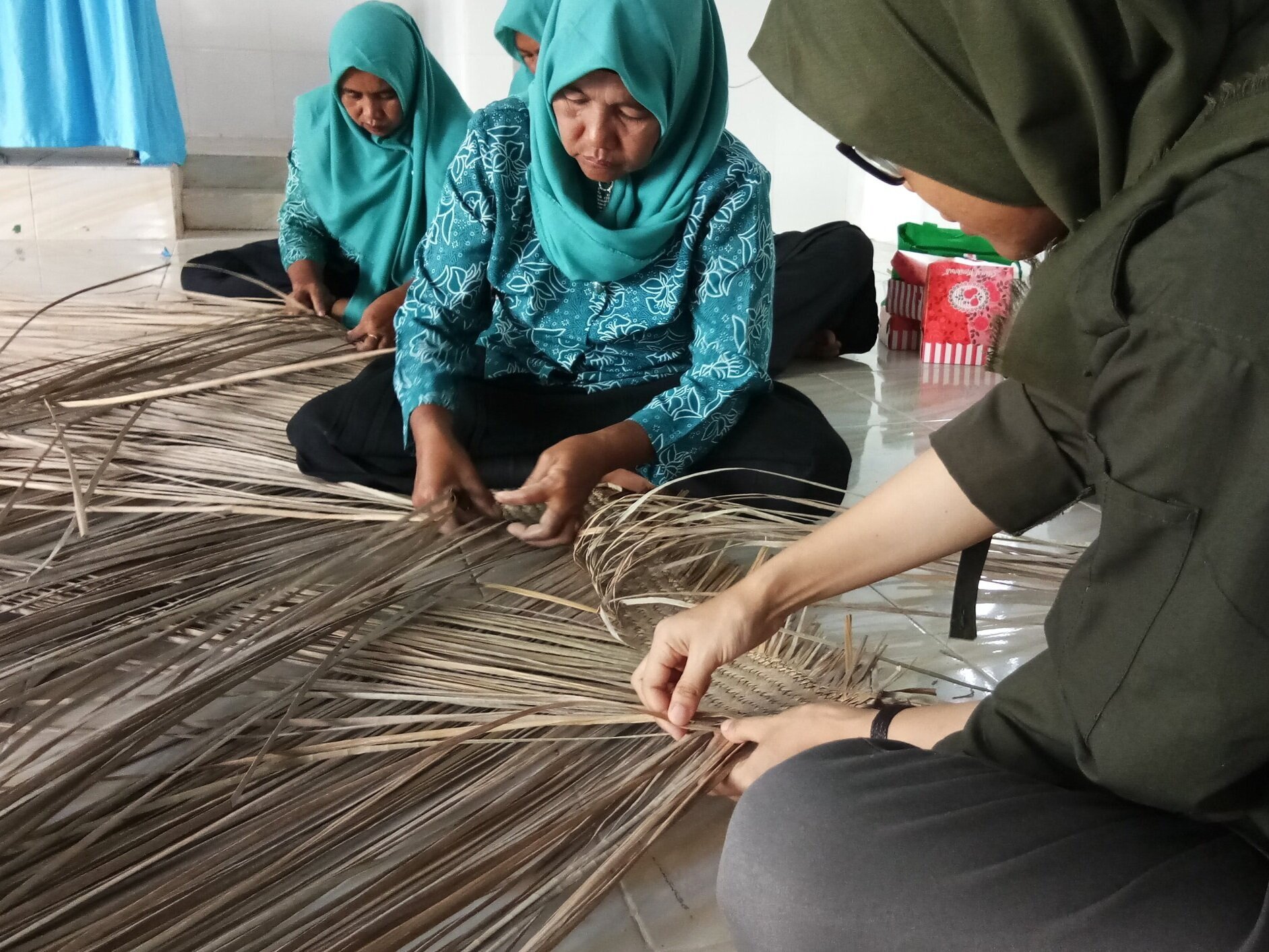


By empowering communities, especially women, to establish sustainable livelihoods; local people are not only able to generate their own natural sources of income, but are also far more likely to respect and the protect the surrounding forests and wildlife.
How we safeguard orangutans outside of protected areas
Habitat loss is the single biggest threat to orangutans and their tropical forest environment. In under 40 years it’s estimated that almost 40% of Borneo’s original forest cover has been lost due to increased plantations, forest fires, mining, and logging. 80% of orangutans live outside of protected areas which means there are thousands of orangutans at risk due to their habitat being encroached upon and lost.
At the Orangutan Foundation we help safeguard protected orangutan habitats, the Lamandau Wildlife Reserve and Tanjung Puting National Park, however the need to support orangutans outside of these safe havens remains paramount. We do this is by engaging with local government, private sector and communities to share knowledge about orangutans and emphasise the importance of preserving their tropical forest habitats. The Foundation holds a number of workshops and training sessions for the survival of orangutans outside of protected areas. These have included:
Biodiveristy and Socio-Economic Survey Training
There’s nothing more important than field practice. This week in collaboration with the Arcus Foundation and local NGO Yayorin, we held technical training sessions to help local people monitor orangutan populations within oil-palm concessions, logging concessions, and community lands. During the two-day course, participants practiced GPS, socio-economic assessments, and learnt survey techniques for vegetation, orangutans and other species. Using these techniques can help improve our understanding of populations and demographics in regions which are more threatened by habitat loss.
Human-Wildlife Conflict Mitigation Workshops
The aim of these workshops is to find ways in which local communities can co-exist safely with wildlife species whilst still maintaining a sustainable livelihood. With the help of partners TOP, we hope improved knowledge about orangutans and their forest habitats will help landowners avoid human-wildlife conflict, and lead to fewer rescues and translocations of orangutans in plantations and community lands.
Fire Prevention Workshops
Fires are a continuous threat during each dry season. The Foundation takes seriously the importance of outreach to all relevant stakeholders on the dangers of starting fires which destroy orangutan and wildlife habitat.
Fire-Fighting Training
The Foundation together with the government agencies, hold fire-fighting training throughout the year. Here groups are taught fire prevention and fire-fighting techniques, using GPS to help record outbreaks of fire so that they can be extinguished more rapidly.
By engaging with local stakeholders in sustainable land management decisions, we are giving a future for orangutans outside of protected conservation areas.
Donate to the Orangutan Foundation today to help us continue this vital work.
Looking back to 2019, and forward to 2020
As we commemorate our 30th anniversary in 2020, the Orangutan Foundation reflects on our work in 2019 and thank all of our supporters for helping us give a future to orangutans, forests and people.
In early 2019, we launched our Sponsor an acre appeal to support the Orangutan Foundation’s Habitat Protection Programme. This programme provided training in SMART technology to monitor orangutan habitat to the 25 local people we employ at our 10 forest guard posts in the Lamandau Wildlife Reserve and Tanjung Puting National Park, Indonesian Borneo. This area covers over 500,000 acres of diverse tropical forest, home to around 5,000 orangutans.
As a result of continuing forest surveillance, in 2019 our teams recorded fewer instances of illegal activity and habitat encroachment in comparison to previous years. This is an encouraging sign for the protection of orangutan habitat, demonstrating that guard posts are an effective deterrent to illegal logging, mining and farming.
The Orangutan Foundation welcomed local participation in a number of educational workshops and events last year. Highlights included, a three-day Conservation Fun Camp, inviting university students to study at Pondok Ambung Tropical Forest Research Station, and celebrating Primate Awareness Day with local people. In addition to these community events, we also awarded three local research grants to conservationists of the future.
Our Habitat Restoration Programme continued to grow in 2019 with over 20,000 saplings planted in areas of degraded forest habitat. These saplings of fire-resistant species have been grown in purpose-built nurseries and will help establish a healthy forest habitat in the coming years. In line with our 30th anniversary, we hope to plant another 30,000 young trees in 2020, bringing the total to 100,000 since 2015.
A group of 12 dedicated volunteers embarked on a three-week trip to Indonesian Borneo last summer through Orangutan Foundation’s Volunteer Programme. In spite of ‘no skills necessary’, alongside our team they managed to totally renovate an important government building within the Lamandau Wildlife Reserve, and had the opportunity to observe wild orangutans and other wildlife in the forest.
A combination of particularly dry conditions, illegal hunting and slash-and-burn farming techniques, meant that in 2019 our teams were involved in fighting the highest number of fires since 2015. Without the presence of our trained firefighting staff working with government officials, larger areas of the Lamandau Wildlife Reserve and Tanjung Puting National Park would have succumbed to further burning and habitat loss. We also installed six large wells positioned at strategic locations surrounding critical forest habitat which will be invaluable to fight fires.
The increased number of fires last year may also have contributed to the number of orangutan rescues our team performed. From mid-August to late November alone, our rescue team worked alongside local government officials BKSDA to rescue more orangutans than in the previous couple of years. In total, nine orangutans were translocated to the safety of the protected Lamandau Wildlife Reserve.
Our orangutan soft-release programme continued to care for orphaned infant orangutans at five release sites within the Lamandau Wildlife Reserve. Last year, our team were thrilled to release Shifa into the wild who was rescued as a two-year-old pet in 2016. Shifa excelled at learning essential forest skills, and like orphaned orangutan Panglima who had been rescued in March 2019, was released for an independent life in the wild in June. Pegi, rescued from life as a pet is our most recent newcomer and continues to acquire new skills day by day at her new forest home at Camp Buluh.
In 2019 we welcomed a two new additions to the forest. Seen above, orangutan mother Mores gave birth to baby Marsha at Camp JL in July, followed by Amina who was spotted at Camp Rasak with newborn Albie. Having recorded over 80 orangutan births since 2003, we’ve established a new population of orangutans within the Lamandau Wildlife Reserve and our teams look forward to welcoming more newborns in 2020.
Looking to the future, we prepare ourselves for another busy year in 2020, marking our 30th anniversary. All of our UK and Indonesian staff thank you for your support in helping to provide a future for orangutans, forests and people.
Wild orangutan rescued with severe injuries
On Saturday 30th November, our field team received an all too familiar report. Government officials BKSDA had alerted the team that an orangutan had been found with possible injuries by residents in an area adjacent to an oil palm plantation in Central Kalimantan, Indonesian Borneo.
Arriving at 9pm later that evening following a long journey to the reported site, our rescue team were met by the sound of dogs barking in the distance. They were alerted to the location of the great ape by one of these dogs who was owned by a local employee of the nearby oil palm plantation.
The orangutan is found on the ground before being sedated
On first sight of the orangutan, it was upsetting for our team to see that it was in a great deal of distress. Unlike the majority of orangutan rescues, it was unusual to see that this individual was not in a tree but instead on the ground.
Identified as a male orangutan, who when approached could only move a short distance along the ground due to his very weak state. After spotting multiple injuries on his body, our vet Dr Dimas and the team wasted no time in sedating the male and transporting him to a safer location where he could be examined thoroughly.
Dr Dimas prepares medication for the male orangutan
Weighting around 75kg and at an estimated 25 years of age. The most horrifying of his injuries was a large laceration to his left eye- an injury which will have blinded him.
Once sedated, rescue teams can begin examining the male
Clearly the orangutan had been shot in the past as multiple rifle pellets were found embedded in the skin; in both cheeks, the hip, and in the back of the neck. Sadly a further two larger pellets were also discovered in his left elbow which could have fractured or broken the bones in his arm on impact. Vitamin and antibiotic injections were administered to help fight infection
The orangutan receives a thorough medical examination
The poor condition of the orangutan’s wounds indicted that his injuries may have been made just a few days beforehand. It’s distressing to see that after all this time, incidents of human-wildlife conflict continue to occur.
In collaboration with BKSDA government officials, our team will continue to closely monitor the progress of this unfortunate male at a facility where he can receive essential medical attention. It’s disheartening for the team to witness this individual in such a horrifying condition.
Mother and baby orangutan rescued and reunited
Following on from the 6 individuals who have been rescued and translocated since mid-July, Orangutan Foundation staff in Central Kalimantan, Indonesian Borneo were alerted to yet another emergency earlier this month.
Reports from BKSDA government officials suggested that an orangutan had been found by a group of villagers who had discovered the great ape when it ventured into an area of community plantations- quite possibly searching for food as a result of the remnant fires that have blotted the region in recent weeks.
On arrival, our team were able to observe that the orangutan was a female who had already been independently captured by the local people and put inside a transport crate. Explaining that this action should only be conducted by trained personnel, Orangutan Foundation staff then began their journey back to base with the orangutan in toe. However as our team were to soon find out, this was not the end to this orangutan’s story.
Shortly after the rescue our team received a worrying piece of news. It transpired that during the capture of the female orangutan, she had also been separated from a young infant that local residents wished to keep as a pet. Fortunately however, Orangutan Foundation and BKSDA officials were again on hand to rescue the orangutan baby from the community and reunite it with its mother.
Our vet was very pleased to see both orangutans in good health following medical examinations and observe the infant immediately feeding once reunited the mother. The 16-year-old female who had been given the name Kina, appeared to be very active as she breastfed Kino, her 2-month-old son.
Kina is anesthetised and undoes her medical examination
A few days after their initial rescue, our team were so relieved to see Kina and Kino immediately take to their new forest at the Lamandau Wildlife Reserve as they quickly climbed out of their transport cage into the trees. It’s always an uplifting experience for us to release orangutans back into the wild where they belong, and then for them to behave as if they’d never left.
On the other hand however, it is a concern that today we are still seeing orangutans in need of rescue, and perhaps more worryingly that some local communities remain keen on keeping these great apes as pets.
Kina and Kino race out of their transport crate into the protected Lamandau Wildlife Reserve
Fires burn as the dry season continues
As the UK Summer fades into Autumn, in Indonesia, the dry season is still in full swing. Dry conditions have created an environment that enables fires to spread quickly across the land, and as reported extensively in the media, recent fires across South East Asia have contributed to a blanket of haze that currently hovers over much of the subcontinent.
These fires are often the result of traditional farming methods. Towards the end of a dry season, farmers in this part of the world will routinely use a slash and burn agricultural technique to clear their land and provide better conditions for crop regeneration. Local communities may also use this method in order to create clearings so that they can hunt for deer or wild boar, however in particularly dry years, these fires can burn out of control for prolonged periods of time and contribute to the levels of haze that have been reported in recent weeks.
The Lamandau Wildlife Reserve in Indonesian Borneo is an area of forest protected by Orangutan Foundation, but it’s western region has been subject to fires during this dry spell which can creep into the reserve. Our field teams and guard post staff have worked with locals officials on occasion into the night to battle the flames and stop the spreading. They continue to be on high alert for any potential fires before the much-needed rains come, but we are indebted to their efforts in protecting this vital wildlife refuge.
Fortunately this reserve and the significant orangutan population in it’s interior are under protection from skilled government and Orangutan Foundation staff who are trained and equipped to prevent outbreaks of fire, however their operations would not be possible without ongoing support. To become a Guardian of the Lamandau and help protect this ecologically rich environment all year round, please support our work by exploring the link below.
How guard posts play a crucial role in orangutan conservation
At the Orangutan Foundation, two main areas of orangutan forest habitat where we work are Tanjung Puting National Park and the Lamandau Wildlife Reserve in Indonesian Borneo. Together they cover over half a million acres of forest- almost twice the size of Hong Kong. It’s therefore essential that the Foundation’s guard post teams are skilled and well trained to monitor the forest and waterways within this vast area.
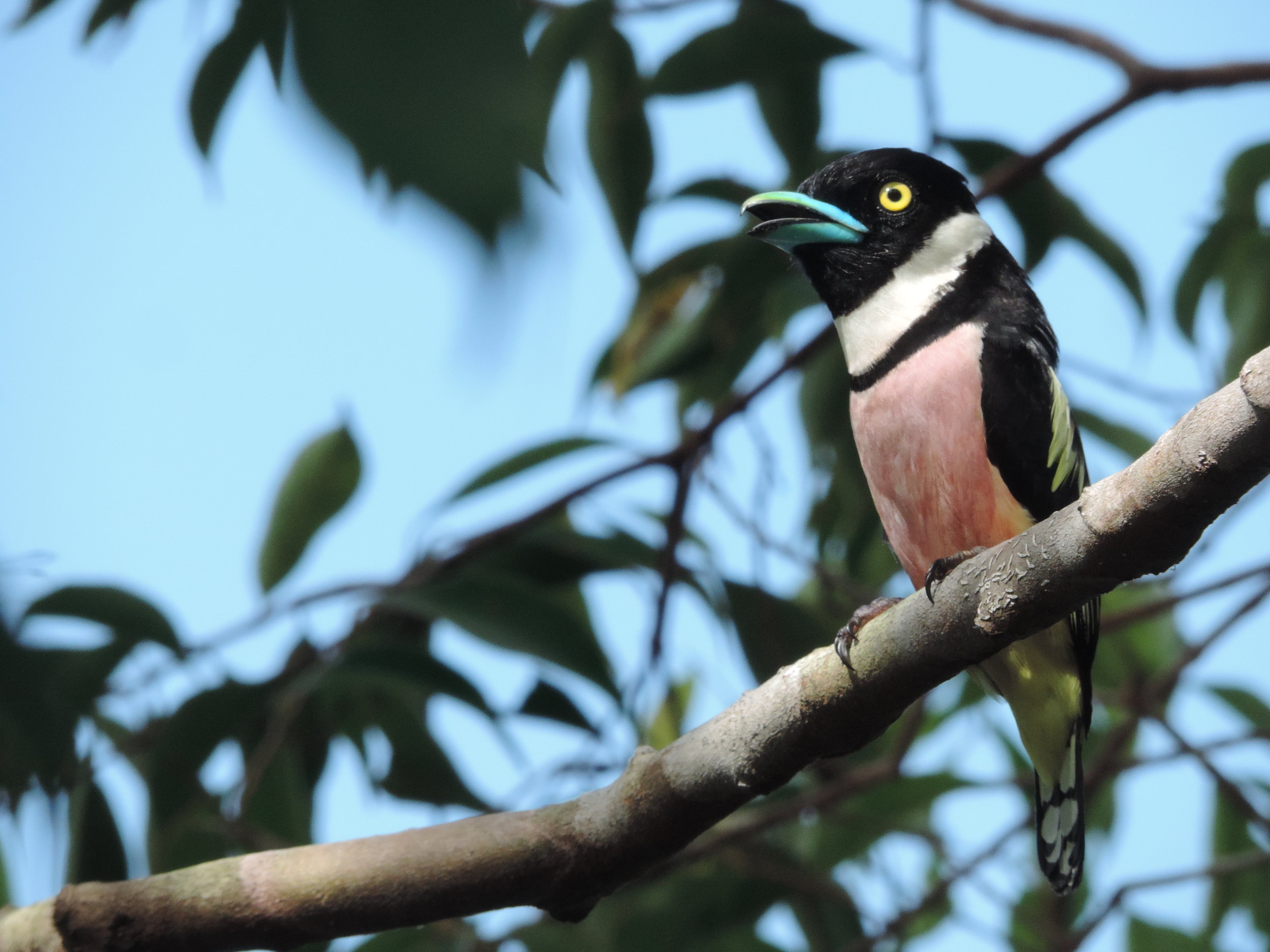
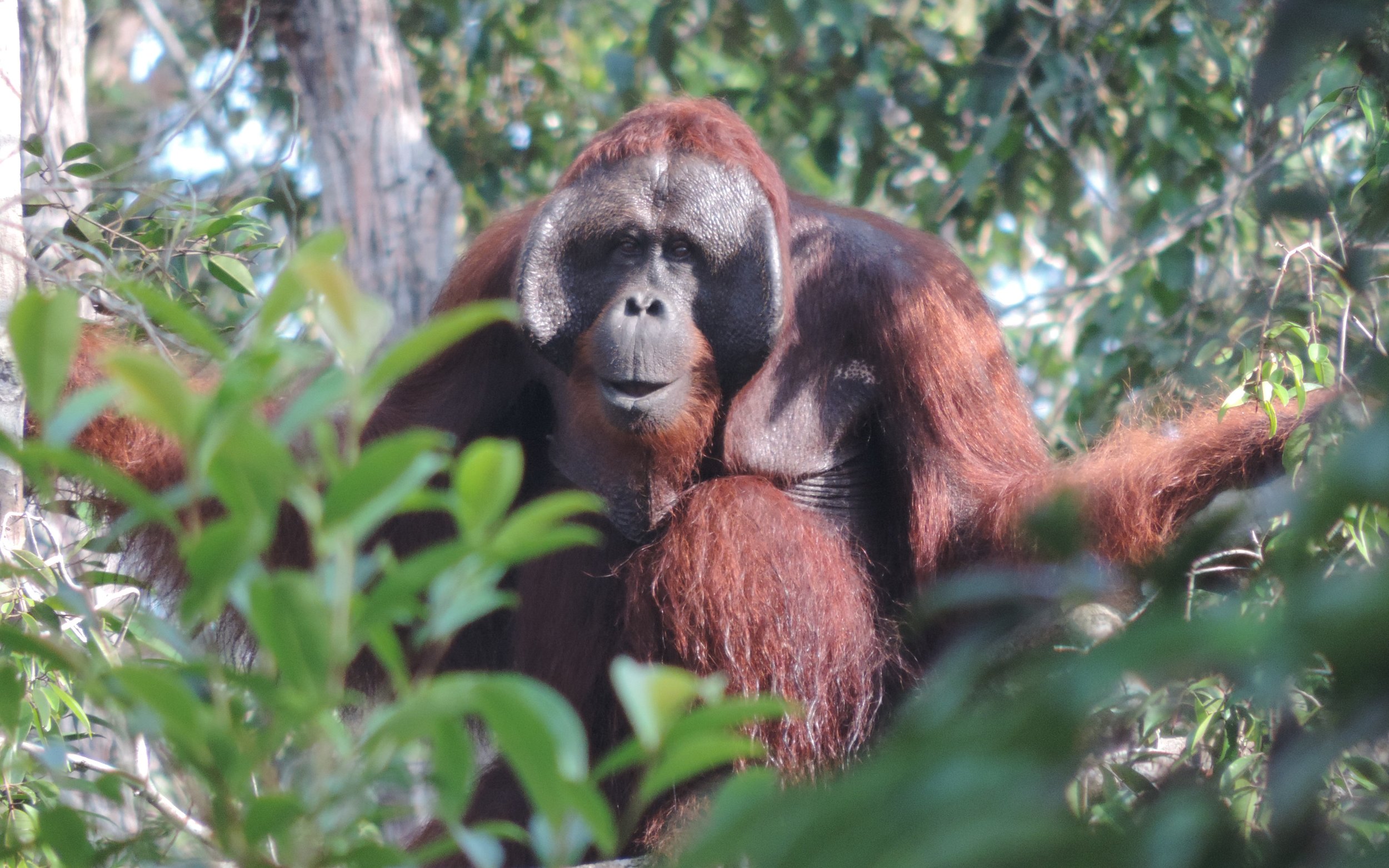
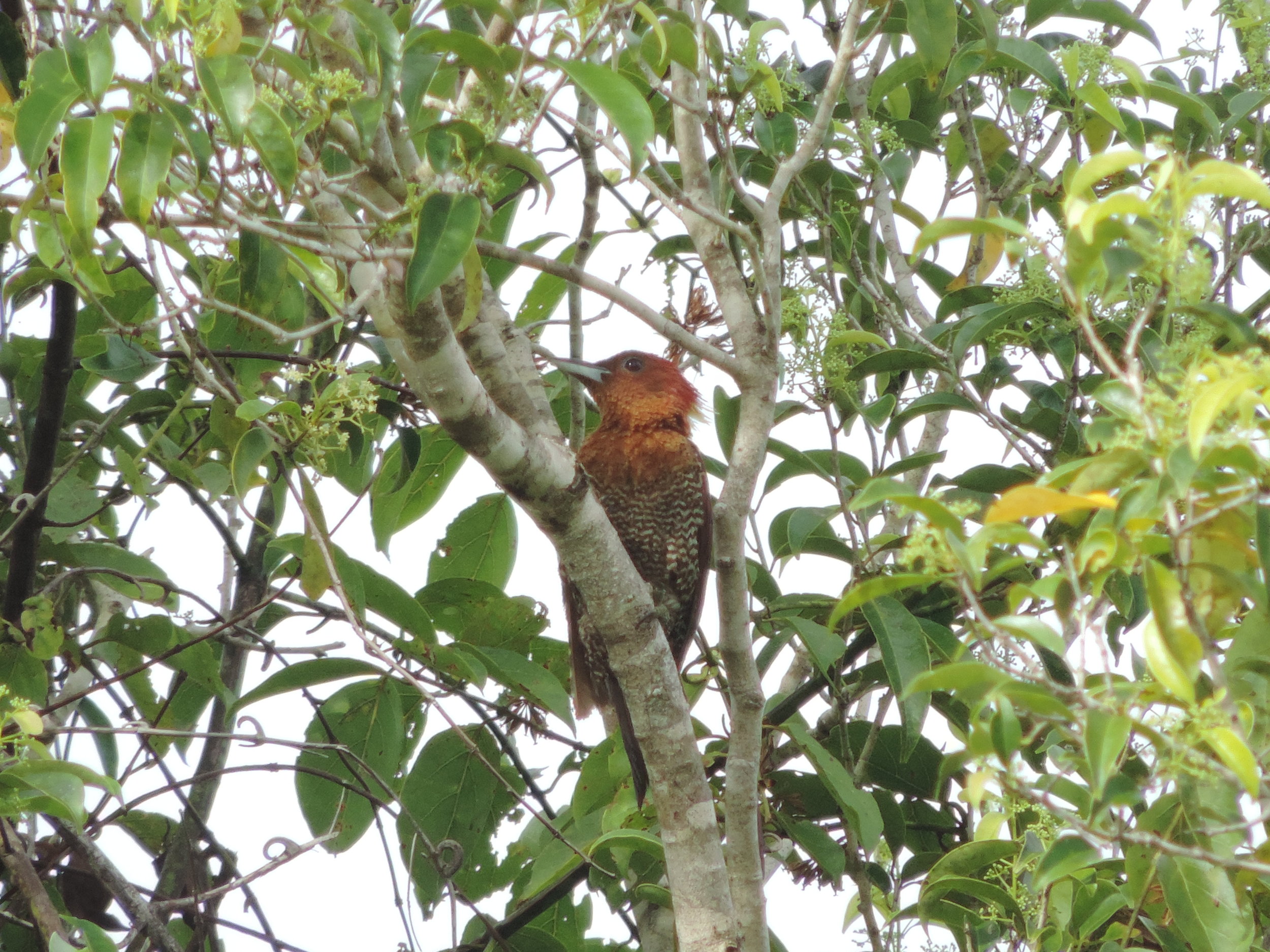
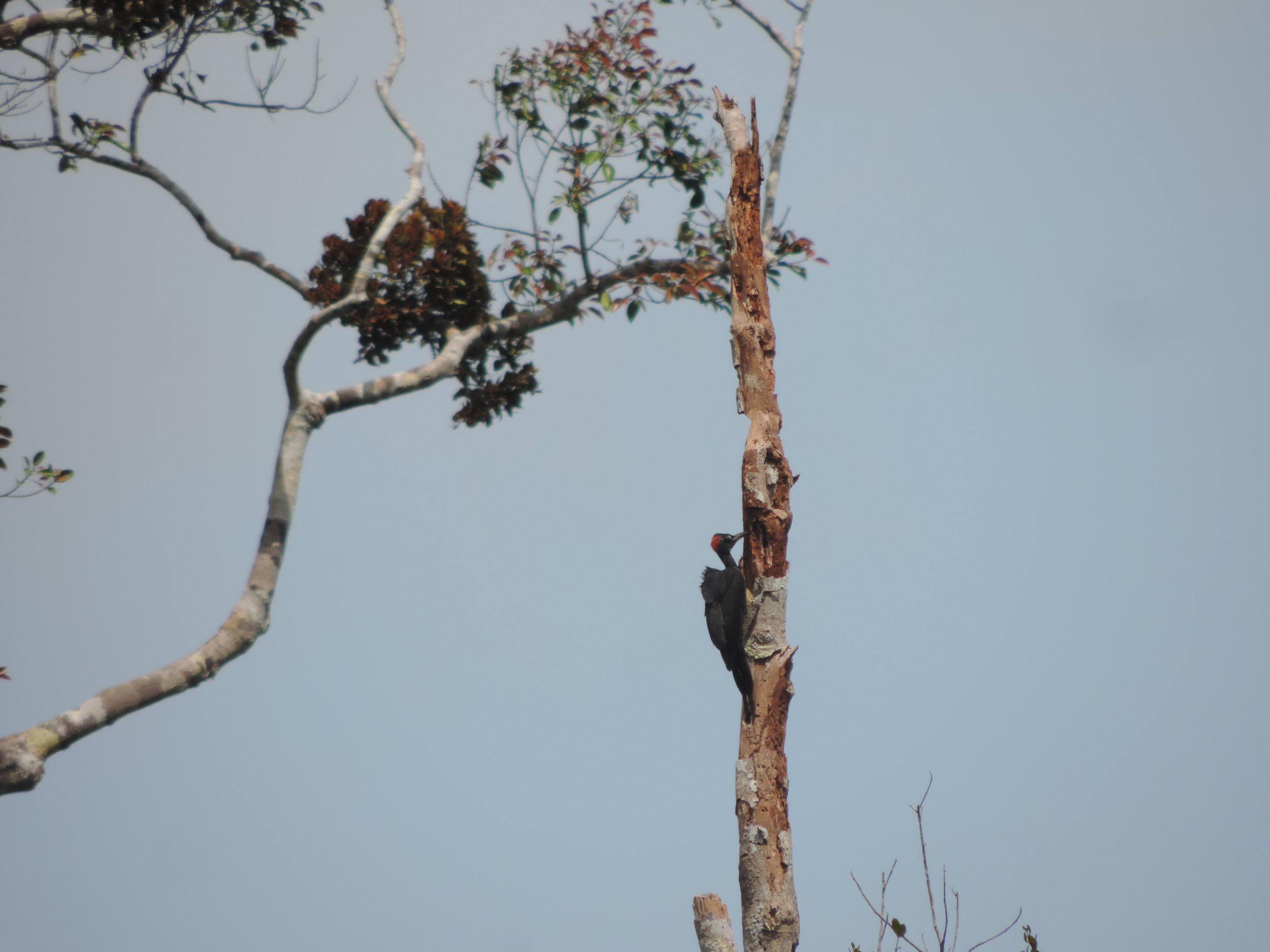
During regular patrols, the team record wildlife sightings like these recent images from Tanjung Puting National Park.
Habitat loss is the largest threat to orangutan populations today; for example, it is predicted that by 2080, between 70-80% of prime orangutan habitat will be lost in Borneo alone if current trends continue. The role of guard posts as a deterrent therefore is vital to ensure intruders do not encroach or enter these parks illegally, damaging or degrading the environment which is essential for orangutans and other wildlife.
Fire fighting is another important role in the field that make these outpost sites so vital. Each one is prepared with fire fighting equipment, and the Foundation works closely with training and supporting the team to be vigilant in spotting forest fires and then safely extinguishing them with as little damage to the habitat as possible. These fires are a potential threat year on year, in 2015 for example an area the size of Wales was lost to forest fires alone in Indonesia, so to have our team patrolling these sites is of paramount importance to orangutan protection and the surrounding area.
We are incredibly grateful to have such a skilled and hardworking team here at the Orangutan Foundation, but they still require support. Find out how you can help from as little as £2.
Partnerships for Protection
Most people’s idea of orangutan conservation would evoke a picture of a life in the wild, tracking these charismatic apes through the forest, rescuing and releasing them into a sunlit canopy. While this is one element, the reality of our work is a much bigger picture.
Release of orangutan back into the wild
Orangutan conservation must address the complex issues affecting the wider landscape and habitat, and this involves an in-depth understanding of land management and negotiation with government, communities, and private sector stakeholders. It sometimes feels far from the animals in the forest, but it’s fundamental to their future survival.
This week, Orangutan Foundation and the Central Kalimantan Wildlife Department (BKSDA) held a workshop on Management of Wildlife in Protected Forest and Production Forest Areas and a Forum on Orangutans and Oil-Palm Plantations. There were more than 30 participants from parties including the Directorate of Biodiversity Conservation (KKH), Ditjend KSDAE-Ministry of LHK, Central Kalimantan Orangutan Forum (Forkah), Central Kalimantan Forest Service, Orangutan Foundation (OF-UK Indonesia), Korindo Group, Wilmar Group, and Central Kalimantan BKSDA.
Workshop participants including Directorate of Biodiversity Conservation (KKH), Ditjend KSDAE-Ministry of LHK, Central Kalimantan Orangutan Forum (Forkah), Central Kalimantan Forest Service, Orangutan Foundation (OF-UK Indonesia), Korindo Group, Wilmar Group, and Central Kalimantan BKSDA.
Forum on Orangutan and Oil-Palm Plantations
The big issue for the Bornean Orangutan species is that 80% of the population are extremely vulnerable, as they live in forest habitats with no active protection (i.e. not inside a national park or wildlife reserve).
Active habitat protection: Orangutan Foundation guard post monitoring the Lamandau Wildlife Reserve, Central Kalimantan Indonesian Borneo
These forests, which have been shrinking dramatically over the last few decades, and the animals that live there, are at risk as most of them are in active ‘concessions’ – areas where access to the land has been granted for some form of industrial use. There are many different legal designations, including natural timber concessions, industrial timber plantations and areas of forest still remaining inside oil-palm concessions, as well as forests on community lands. There are also areas of ‘Hutan Lindung’, Protection Forest, a special designation where the forest provides a wider ecosystem service to protect soils and water catchment. Proper management of these forests is crucial to mitigate conflicts between humans and wildlife and to reduce the number of isolated orangutans that end up needing to be rescued.
At the end of the two days, all of the participants agreed to sign a joint commitment to implementing Best Management Practices focused on the protection of orangutans and wildlife in Production Forests and Protection Forests, as well as in oil-palm plantations. This is a vital step forward in securing the survival of the Bornean orangutan; and for this we are very grateful for the continued support from all our members and donors and in particular, to the Arcus Foundation. The next step is to ensure these commitments made on paper translate to commitments on the ground.
Wild Bornean female and infant orangutan. By Ian Wood
Young orangutan rescued
Yesterday, we rescued a young orangutan, aged approximately 5-years-old. Sadly, the mother was absent, we don’t know what happened to her but most likely she has died, mother orangutans would not readily abandon their offspring.
Tranquillised orangutan, named Panglima
The Wildlife Rescue Unit (WRU) team was made up of the Central Kalimantan Wildlife Department (BKSDA) and Orangutan Foundation. The Wildlife Department had received reports about an orangutan seen in a community orchard. The rescue team drove 45 minutes from the town of Pangkalan Bun to the reported location in the Pangkalan Lima area, South Arut District.
Orangutan nest high up in the tree
When the team arrived they saw two nests in one tree, but there was no sign of an orangutan. After a while the team decided to return to Pangkalan Bun. In the afternoon, the team received another report about the orangutan and so they returned. This time they saw a young orangutan very high up in the trees. The team decided to follow the orangutan until it nested in hope they could get a clear shot with the dart gun. Unfortunately they couldn’t and because it was getting dark and unsafe they decided to return very early the next morning, when hopefully the orangutan would still be in his nest.
Preparing the dart gun to tranquillise the young orangutan
Climbing up the tree to rescue the sedated wild orangutan.
The next morning, in the torrential rain, the rescue team arrived at the nest location at 4.30am. The orangutan was found above a nest, not far from where they had left him. The dart gun was prepared so that the orangutan could be tranquillised. They managed to get a clear shot and the orangutan fell into its nest. One of the rescue team climbed a 10-meter tall tree and managed to carry the orangutan down.
The Orangutan Foundation vet immediately conducted an examination and the orangutan was male, weighing approximately 15kg and was estimated at around 5-years-old. Our vet, Dr. Dimas Yufrizar, took blood samples for laboratory tests and gave injections of multivitamins and antibiotics.
The orangutan has been named Panglima (relating to the rescue location) - giving orangutans names helps the field staff with post-release monitoring and communications.
Tranquillised orangutan being examined by Orangutan Foundation vet
Panglima was transported to the Pangkalan Bun BKSDA SKW II office where he is being kept temporarily in a holding cage. Hendra Gunawan, Orangutan Foundation Program Manager said BKSDA have requested that the orangutan be translocated to the Lamandau Wildlife Reserve, a protected area. Before release, Hendra said Panglima will be isolated until his blood tests return and then habituated for three months. His condition will be monitored by the Orangutan Foundation vet and field staff.
The rescue team are confident that Panglima’s release into the reserve will be successful and that he will go on to live a wild and safe life in the Lamandau Wildlife Reserve.
Support our work and join Orangutan Foundation today.
Improving livelihoods of communities living in and close to orangutan habitat
We are working with villages on the border of the Lamandau Wildlife Reserve (Indonesian Borneo) to improve livelihoods and local forest sustainability. In this area, fire is used to cleared land and to hunt wild pig and deer. Forests have been cleared to mine for minerals or to grow oil palm. We see the damage this does to forests, the vanishing habitat of orangutans and other critically endangered species.
Measuring out and survey of agroforestry demonstration plot (oil-palm plantation in the background).
As demand for land increases it is imperative to adopt sustainable livelihoods that don’t require forests to be cleared. Agroforestry has been practised traditionally in Indonesia for many centuries and it can improve farmer’s livelihoods and improve land, which is already degraded. It is a farming system that combines planting trees with agricultural crops to increase profits, both economically and environmentally.
Discussions with land owners and Sukamara KPHP about planting sengon plants in community-owned gardens
The villages we work with have voluntarily offered one hectare (roughly the size of a football pitch) of their land to be used as a demonstration plot and Orangutan Foundation are assisting with the preparation and planting of seedlings and will help to monitor their progress.
Farmers nurturing sengon seedlings for planting out.
Two of the species being grown are rubber trees (Hevea brasiliensis) used for harvesting latex and sengon or albazia (Falcataria moluccana) which is used for local timber products (firewood, matchsticks, construction materials). They are fast growing species and so can be harvested in a relatively short time and they are adaptable to varying climate conditions.
Transporting compost to plant out seedlings
Planting out of sengon seedlings
Planting rubber in the demonstraion plot
Orangutan Foundation celebrating International Orangutan Day in Central Kalimantan
International Orangutan Day (19th August) aims to increase global awareness about orangutans and their tropical forest habitat. This weekend, Orangutan Foundation, in Central Kalimantan, orangutan capital of the world, have a festival of activities arranged for hundreds of people. Members of the youth groups, Kalteng Indonesian Conservation Cadre Communication Forum (FK3I) and the Student Nature Lovers, throughout Kowaringin Barat Regency will join in. We’ll be celebrating orangutans and conservation with overnight camping and art activities. Five local kindergartens are taking part in a colouring contest. We’ve also organised a car-free day in the town of Pangkalan Bun to highlight this global day celebrating orangutans. Ensuring awareness is achieved here, means that a real difference can be made.
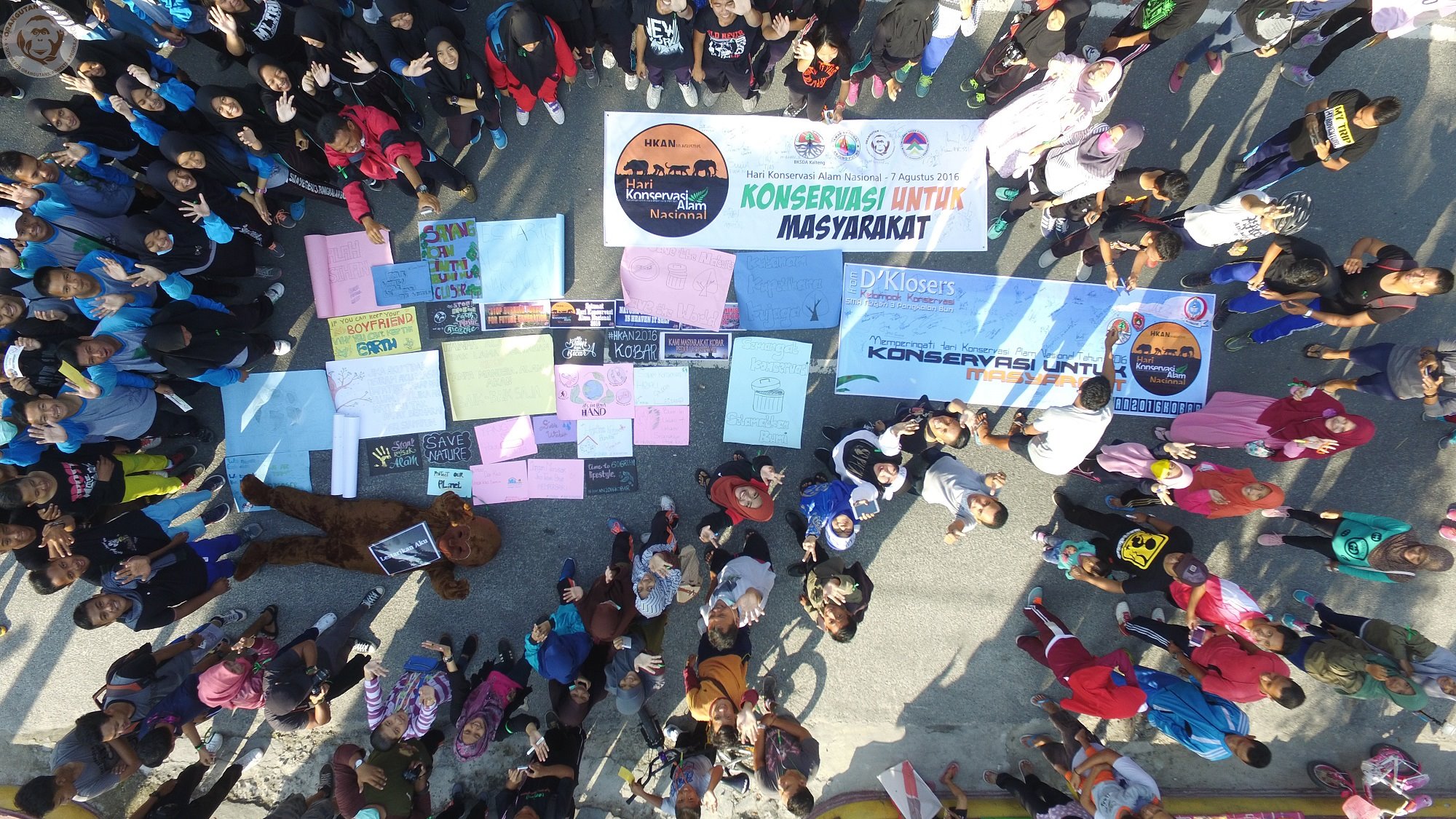
The overall aim is to increase community awareness about the environment and the presence of wild orangutans in the surrounding forests. Leaflets will be distributed informing people how to avoid human-orangutan conflicts.
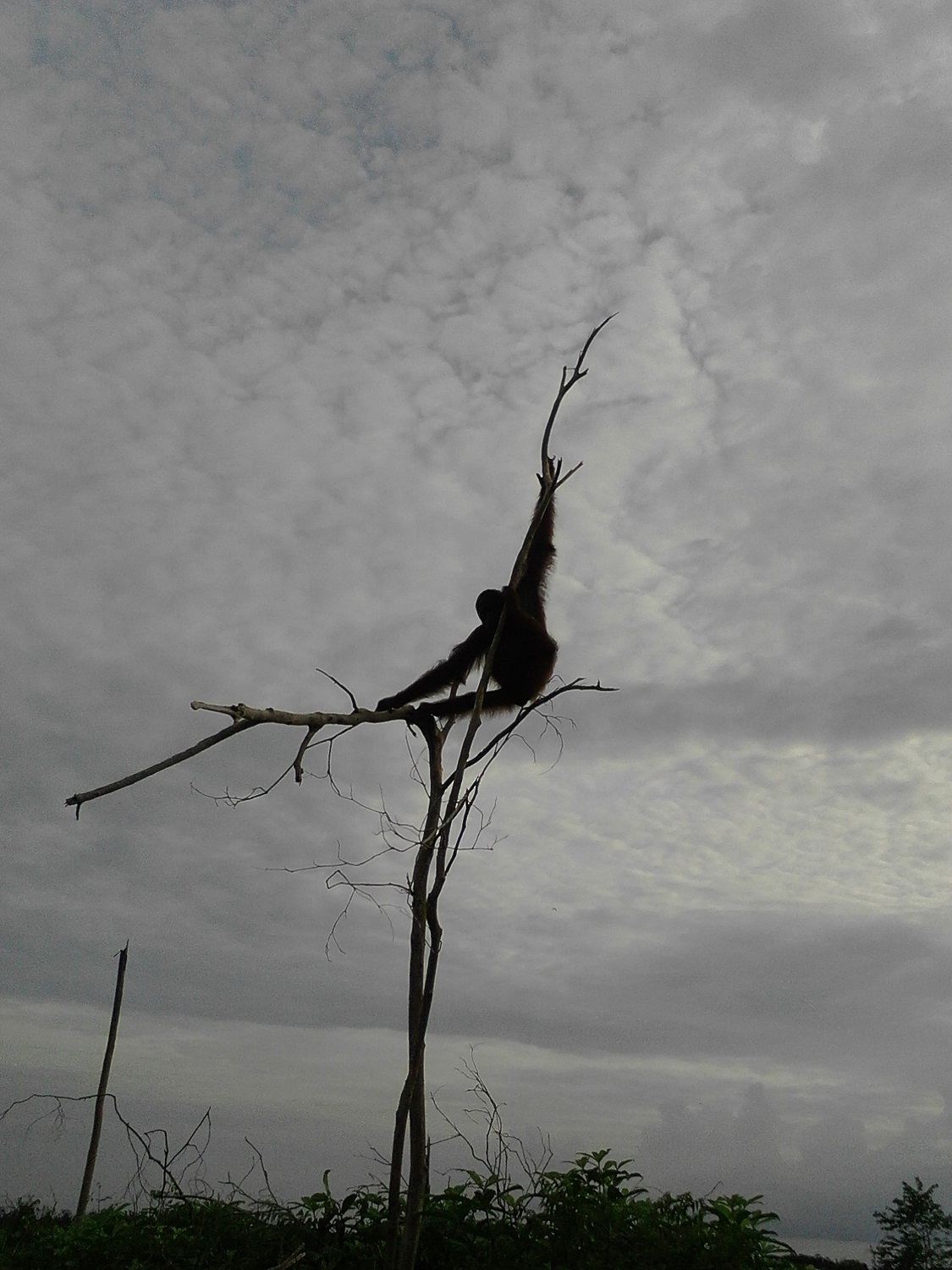
This action is needed more now, than ever before.
Watch this space for news and images of how the festivities went.
Protecting orangutan habitat
We only send out appeals when there is a real need for help – and right now, we urgently need funds to strengthen the protection of the Lamandau Wildlife Reserve, habitat of the critically endangered orangutan. In January and February, our forest patrol staff detected and tackled fires, deliberately lit to clear land, next to the reserve. They prevented the fires from spreading and saved thousands of acres of peat swamp forest from going up in smoke. In March, we met with the provincial government to push for those responsible for starting the fires, to be held to account.
The Lamandau Wildlife Reserve totals 158,144 acres of tropical forest. The Foundation's staff put themselves at risk as they battled to protect the forests, home to a population of 500 orangutans. Half of these were reintroduced or translocated by the Orangutan Foundation and given a second chance of survival in the wild. We must make sure they are safe.
It costs a quarter of a million pounds a year to protect the reserve and the wildlife. A significant commitment for a small charity, but a relatively small amount considering the invaluable riches and services the forests contain and provide.
The Orangutan Foundation runs and staffs eight guard posts in and around Lamandau to deter and prevent access to the forests. Our staff, all committed local Indonesian conservationists, patrol on foot or by boat. We use conservation drones and GIS to map and document illegal activities.
The map below shows the guard posts (red triangle on blue).
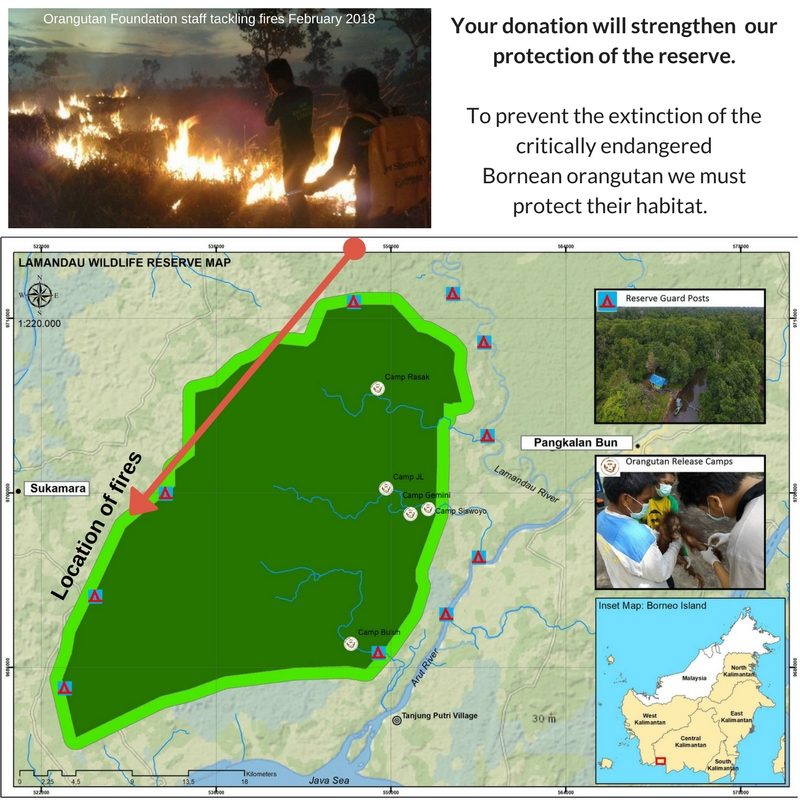
In 2017, we stopped illegal mining inside the reserve and since the beginning of 2018, our forest patrols have detected and stopped two cases of illegal logging.
Yet, despite years of investment in successful community awareness, there remain a small few who want to exploit the forest for their own interests. As pressure for land increases our fight to protect standing forest, to stop it being logged or converted to oil palm, will only become more difficult. Protecting Lamandau is an ongoing commitment: we cannot temporarily close a guard post due to insufficient funds, in the hope that we might start up again next year. If we stop protecting the reserve, we know that we will lose it: the forest and its precious wildlife could be gone in an instant.
Bangkal is one of the orangutans at risk. Originally released into the neighbouring Tanjung Puting National Park, Bangkal was severely injured in 2000 when illegal loggers attacked him with boiling-hot oil. Following a long period of recovery, he was released into Lamandau, at Camp Gemini, one of our five release camps in the reserve. Bangkal, now strong, healthy and independent, has since become the dominant male.Aan, an adult female, was shot and permanently blinded in an oil-palm plantation. Foundation staff moved Aan to the Lamandau Reserve, where she now lives with round-the-clock monitoring by our staff and vet.
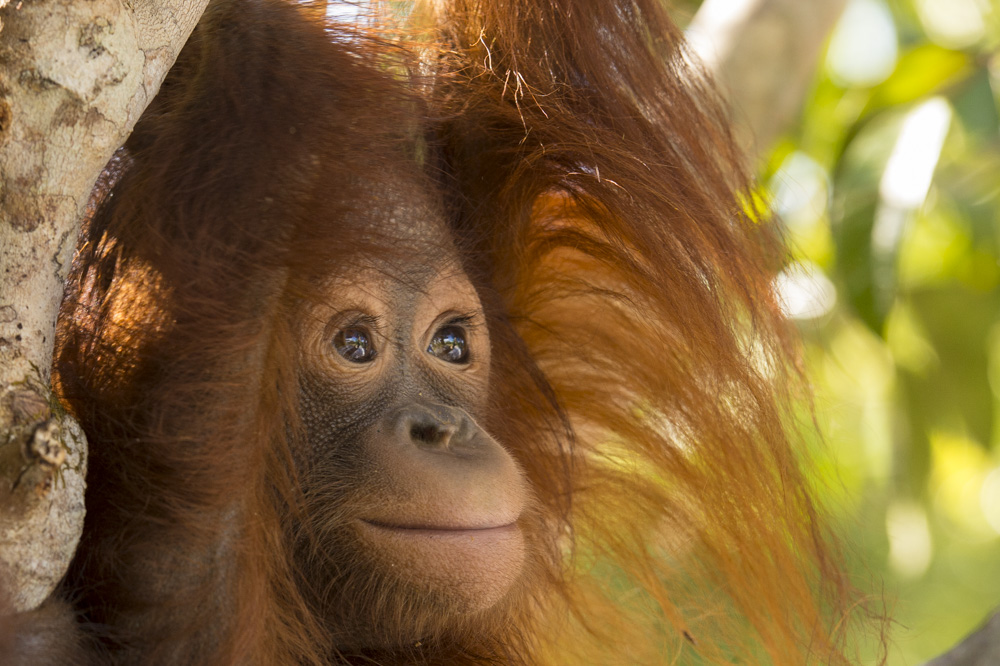
We also care for ten orphaned infant orangutans at our release camps - plus many dozens of reintroduced and translocated adults that are thriving in the wild under our protection. We owe it to these orangutans to keep their forest home safe.
Please DONATE SECURELY THROUGH OUR WEBSITE, by calling 020 7724 2912, or by sending a cheque payable to ‘Orangutan Foundation’ to Orangutan Foundation, 7 Kent Terrace, London, NW1 4RP. If you are unable to donate immediately but want to make funding pledge, whether through fundraising or a delayed donation, please contact us to discuss options – we will work with you however we can.
Sponsor the protection of Lamandau Wildlife Reserve
- £15 protects 10 acres of forest for one year
- £37.50 protects 25 acres of forest for one year
- £75 protects 50 acres of forest for one year
- £150 protects 100 acres of forest for one year
We must act today to secure the future for orangutans, forests and people.
With sincere thanks,
Ashley Leiman OBE
Founder & Director/Trustee
![]()
The future of conservation is in our hands
The survival of the critically endangered orangutan and its forest habitat lies in the hands of Indonesia's youth. Their opinions, decisions and actions will determine its future existence in the wild. This is why awareness and capacity building is vital to the long-term conservation of this threatened great ape.
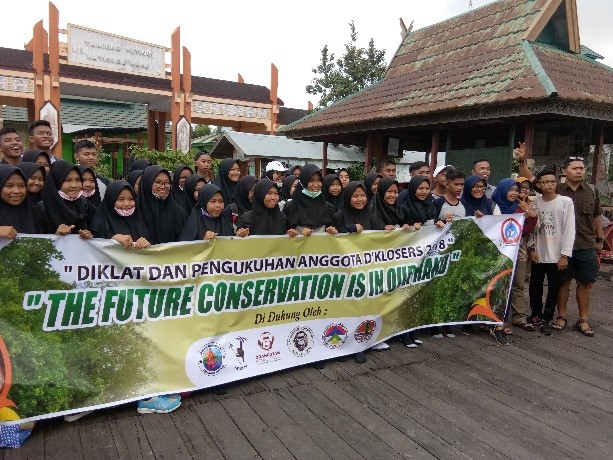
This month the Orangutan Foundation, and other local organisations, delivered a series of lessons to senior school, SMAN 3 Pangkalan Bun (Central Kalimantan, Indonesian Borneo). Our Research Manager, Arie, talked about the importance of research and our work at Pondok Ambung Research Station in Tanjung Puting National Park. The Orangutan Foundation's Forest Patrols Manager, Jakir, led an inspiring session about photojournalism.
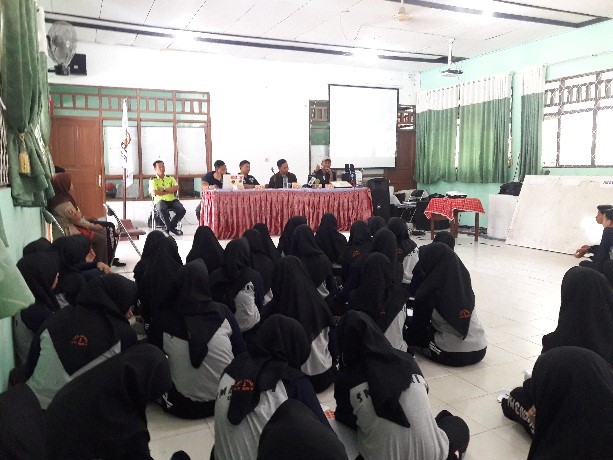
Why is Pondok Ambung Research Station important?
Every few months our staff move camera traps to a different location within the research study site. Just some of the wildlife documented so far includes clouded leopards, sun bears, muntjac, crested fireback (forest pheasant), mouse deer, tree mouse, frogs and pig tailed macaques.
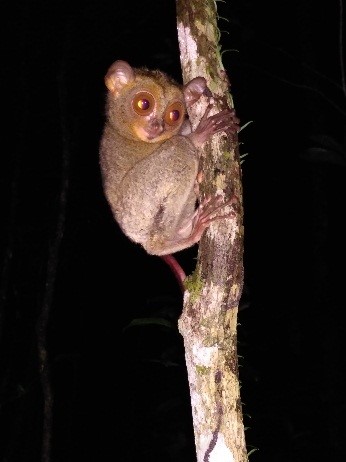
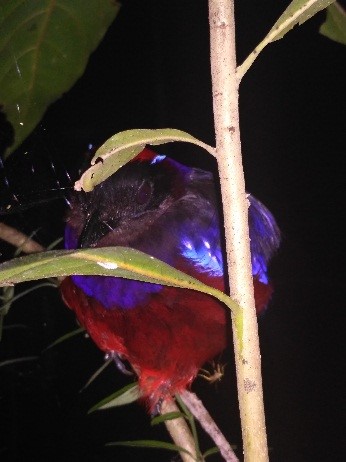
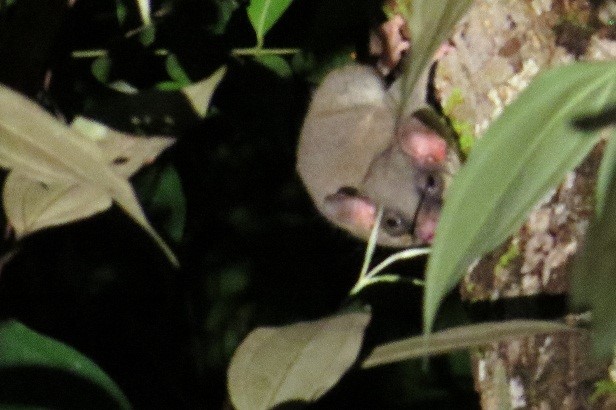
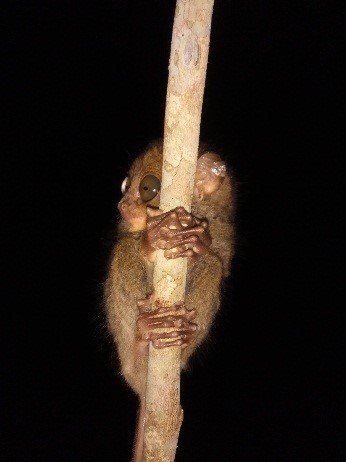
They also monitor tree phenology, recording which species of tree are in flower or fruiting and which consumer species are feeding from them and how often.
Our research station was renovated by last year’s volunteer team and is now much better equipped to hosted visitors. In January, 65 students visited. The students participated in wildlife observations, learnt field skills, watched and discussed a wildlife trade documentary and planted 500 tree seedlings, at Pondok Ambung’s forest restoration site.
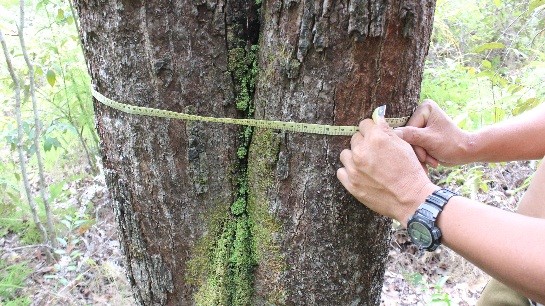
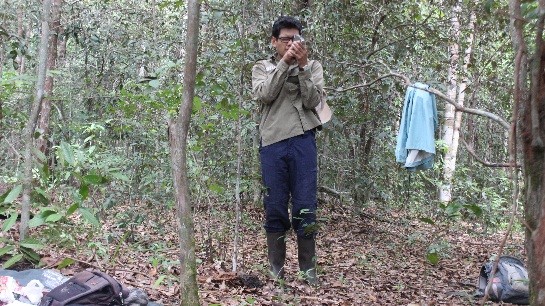
The success of the event was due to the collaborative efforts of Orangutan Foundation staff and other organisations including; Bagas the Traffic / IUCN Redlist Ambassador for Kalimantan; Fajar from OFI, the FNPF, BTNTP and FK3I. The event was supported by the National Park’s tour operators and guides who provided a free klotok (longboat) as did FNPF.
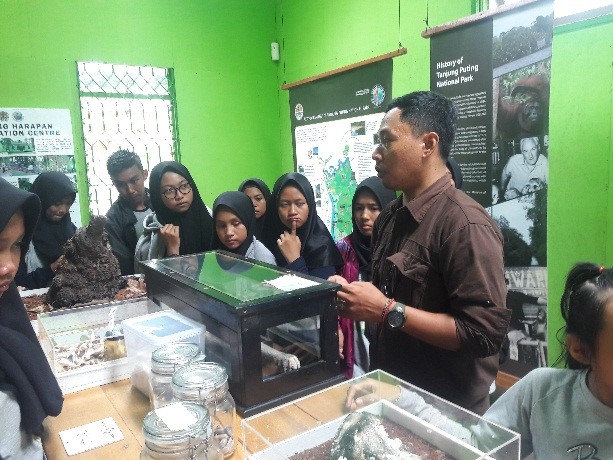
Please donate to support our work - it is needed to secure a future for oranguans, forests and people. DONATE HERE
Vet's first orangutan rescue
The Orangutan Foundation is delighted to welcome Dimas Yuzrifar as its new vet, replacing Dr Steven, who has now returned to Bali. Being "thrown in at the deep end" is certainly how the first week has been for Dr Dimas! Last weekend we received reports of a wild orangutan in village forest. This was passed onto the government agency for wildlife, BKSDA SKW II Pangkalan Bun.
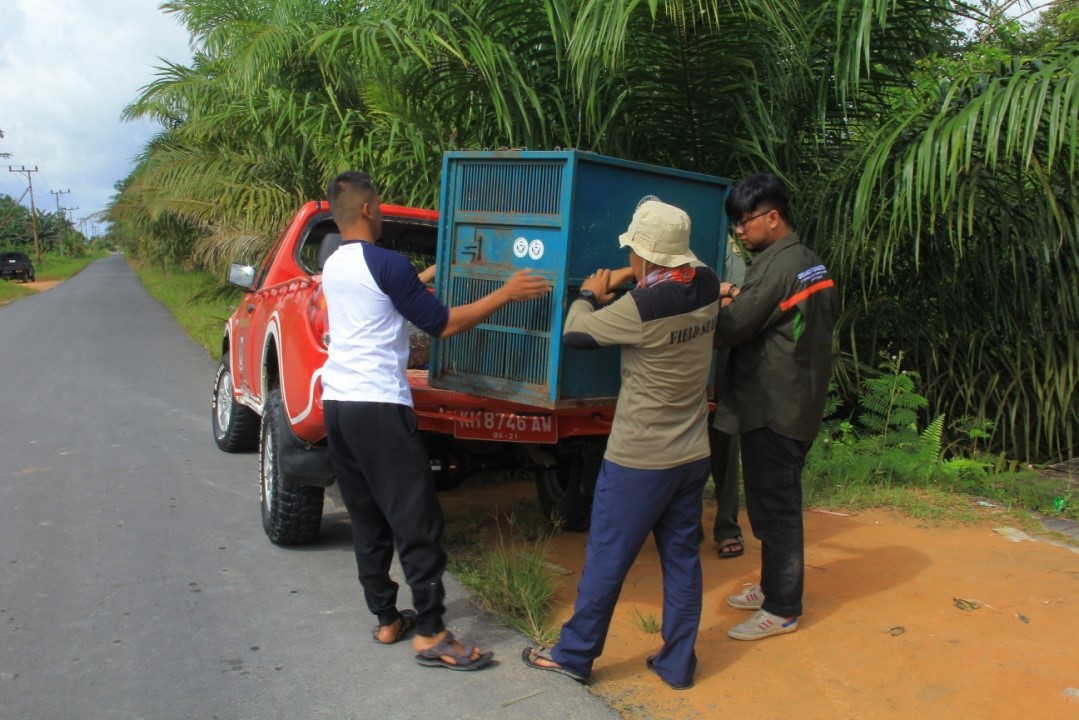
The orangutan was found close to oil palm, banana and rubber plantations owned by local residents. The villagers feared the orangutan would damage their crops and so BKSDA decided, in this case, to capture and move (translocate) the orangutan, to avoid any conflict arising. Dr Dimas managed to anesthetize the orangutan. After being caught the orangutan was identified as female with an estimated weight of around 25 kg. The next day after checking the orangutan was well and active she was released into the safety of the protected Lamandau Willdife Reserve.
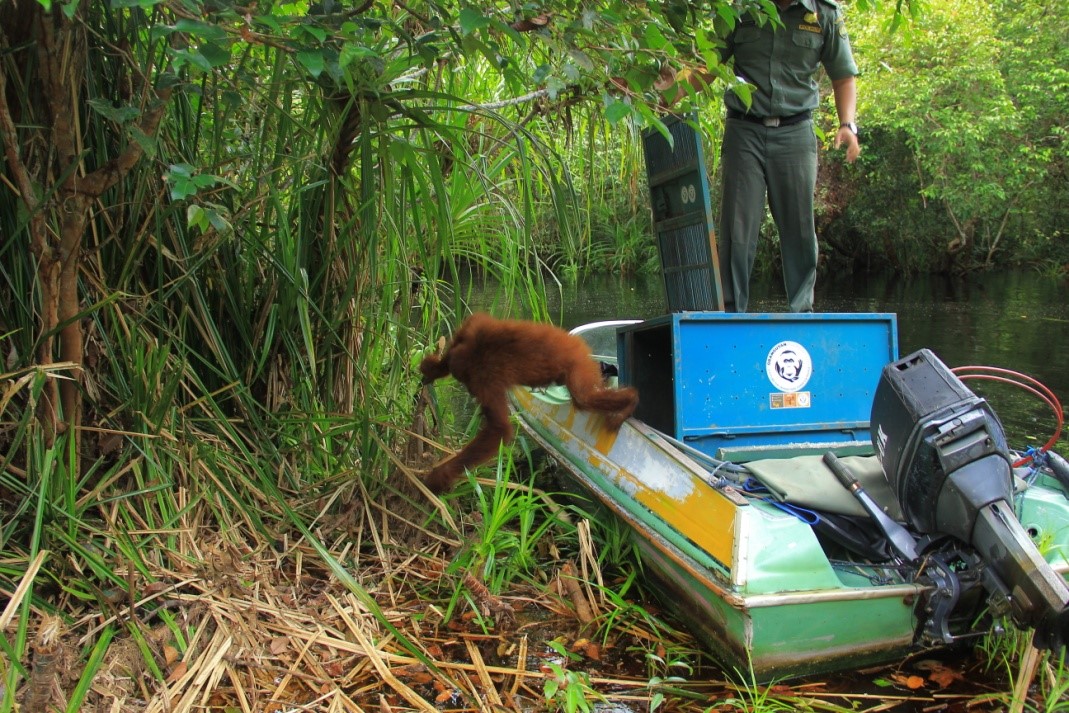
Watch this clip to see how quickly the orangutan leaves the transport cage and disappears into the forest.
After the busy weekend with the translocation, Dr Dimas also spent time meeting and checking up on the young orangutans in our release camps. Here's a clip of young Satria playing in his night-time enclosure.
Wonder what the next week will have in store?
Thank you for supporting our work.
Donate to help us keep the Lamandau Wildlife Reserve and its precious orangutans and wildlife protected. Click here to donate - thank you.
An interview with Jakir - Patrol Manager, Orangutan Foundation
To finish off Orangutan Awareness Week, our final blog post is about Jakir, who oversees the protection of the Lamandau Wildlife Reserve and its precious inhabitants. He has been in this role for 10 years. Jakir is also a talented photographer and many of his images have been included in our new photobook, The Orangutan's World. Our committed Indonesian staff are the bedrock of all we do. Please donate to support our vital work, keeping forests standing and orangutans in the wild.
Jakir, Patrol Manager Orangutan Foundation
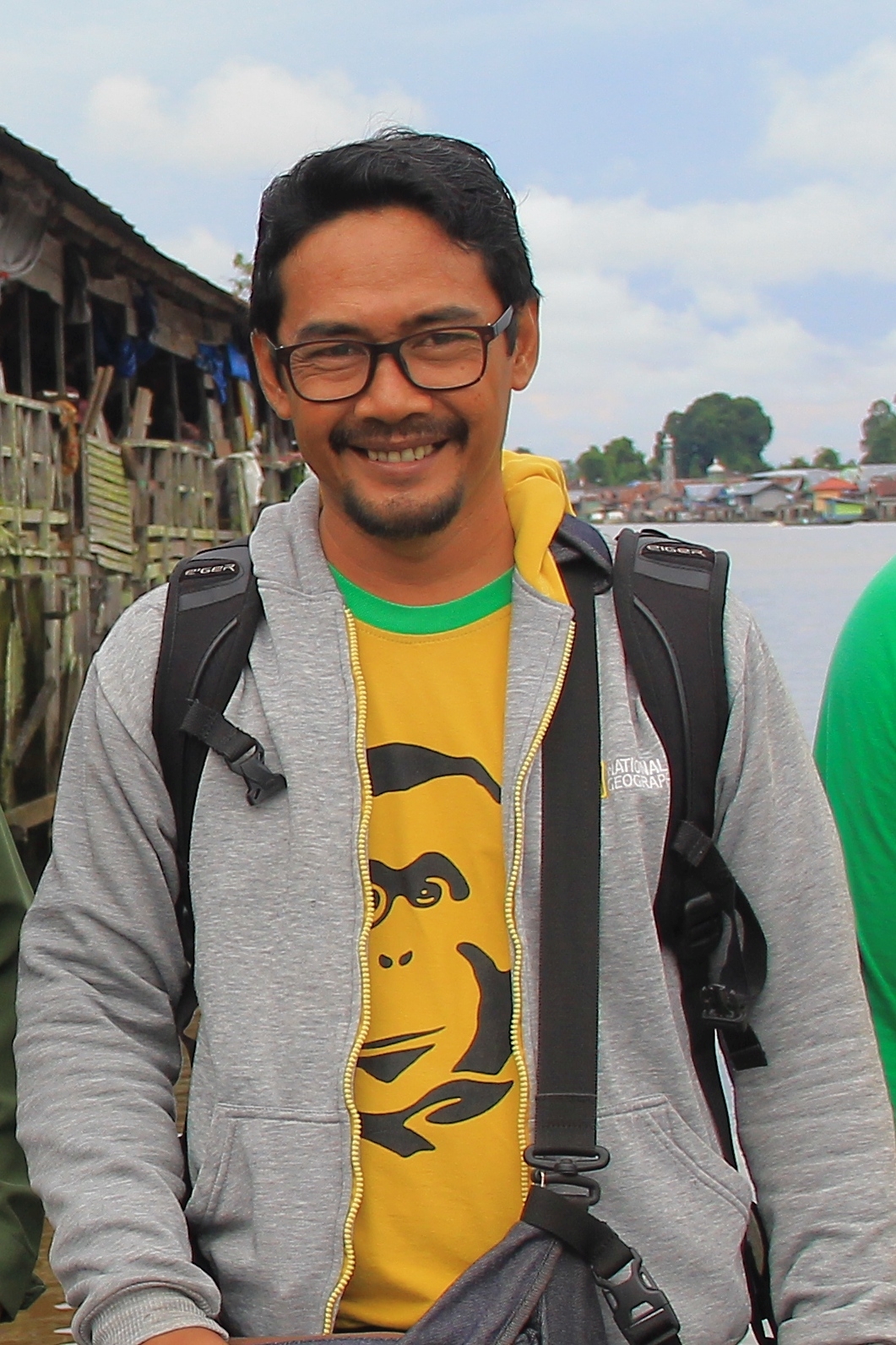
My role as Patrol Manager is to supervise the 12 staff who occupy our eight guard posts, ensuring that they are well maintained and operated, so that the wildlife reserves are protected from illegal activities, such as logging, mining, hunting and fishing.
It’s a very important role and I most of all I love the interaction with the local community in the field. Sometimes ignorance is the reason for illegal activities, and we tell people what we are doing so they also understand why we are protecting the forest.
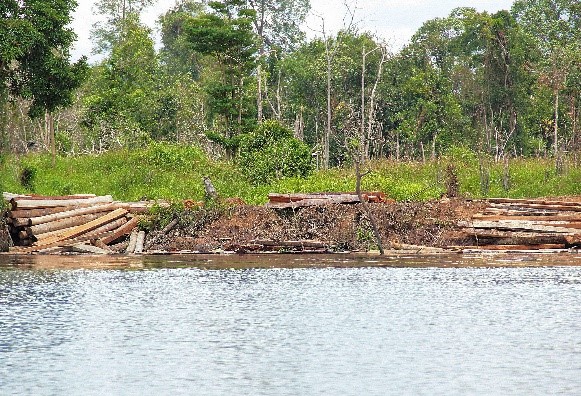
But the biggest challenge is facing people who deliberately do illegal activities. We have faced threats and bribes, but some people who were previously involved in illegal forestry now give us information on illegal activities they encounter.
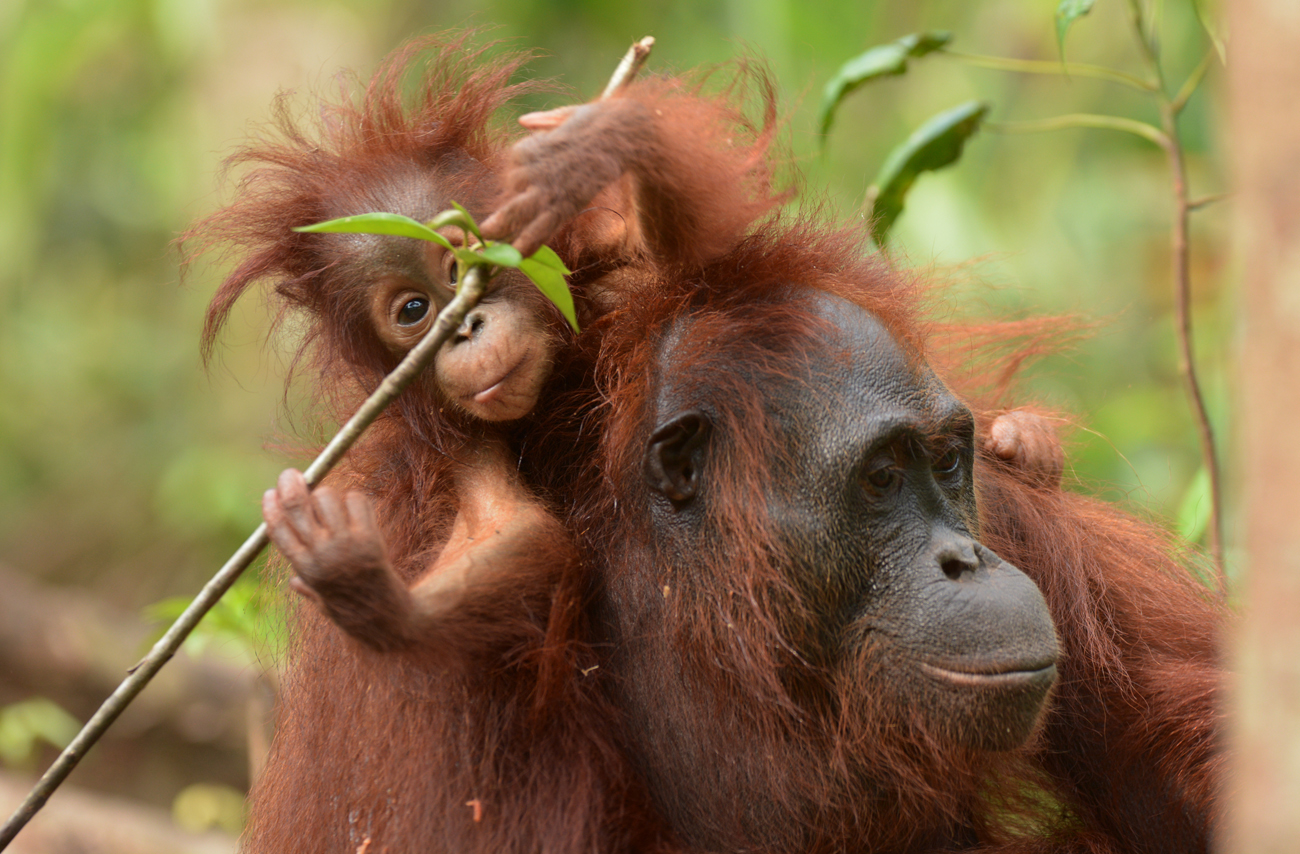
It’s very special to see some of the animals that we have saved roaming free in the forest in Lamandau.

When I first met Ashley, the Director of the Orangutan Foundation, I didn’t understand why she talked so much about protecting the forest and sacrificed so much of her own time for this. But a long time afterwards I saw some villages submerged by flooding and I realised why protecting the forest is so important.
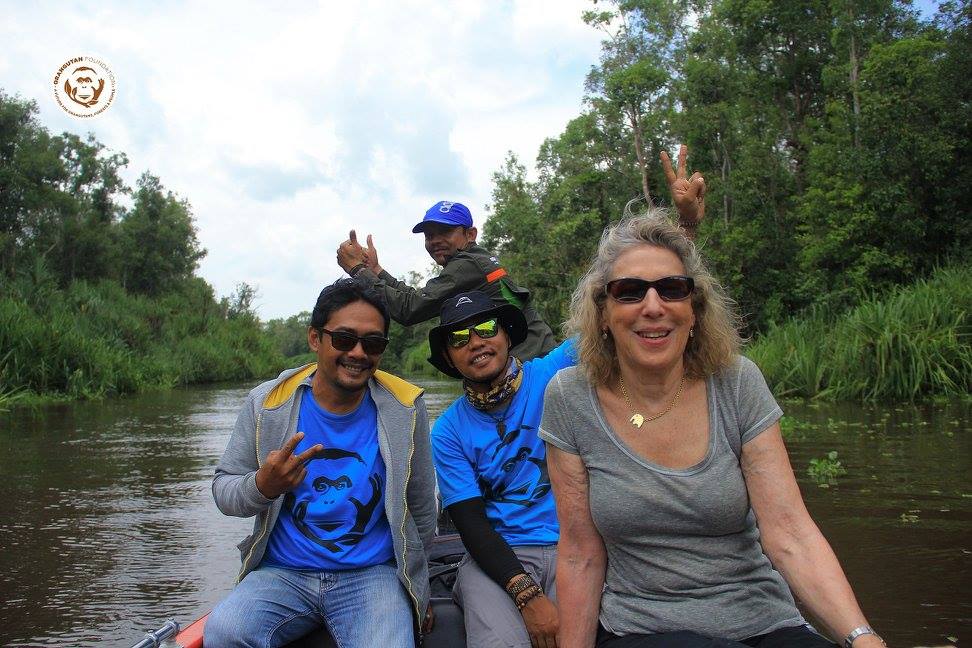
My hope is that the forest will always be alive and awake, so that my grandchildren can see and feel the coolness of this forest.
Written by Anna Levin, this interview was featured in our latest member's newsletter, Red Ape, Autumn 2017.
By donating £16.50 a month you can become a Guardian of the Lamandau Wildlife Reserve and support the protection of over 150,000 acres of tropical forest habitat. Click here to find out more.
Freedom in the wild
If you want something done, ask a busy person. This expression is especially true for Orangutan Foundation Director, Ashley Leiman OBE, who has just returned from a field visit to our programmes in Central Kalimantan, Indonesian Borneo. One of the highlights was a tree planting ceremony to celebrate the planting out of over 22,000 seedlings in degraded forest habitat in the Lamandau Wildlife Reserve. The most memorable day though involved the return to the wild of seven different species. Captured from the wild and kept as pets, these animals had been confiscated by the Wildlife Department of Central Kalimantan (BKSDA Kalteng). The day was also a chance for Ashley to meet Bapak Adib Gunawan, the new Head of Wildlife for Central Kalimantan, who was overseeing the releases.
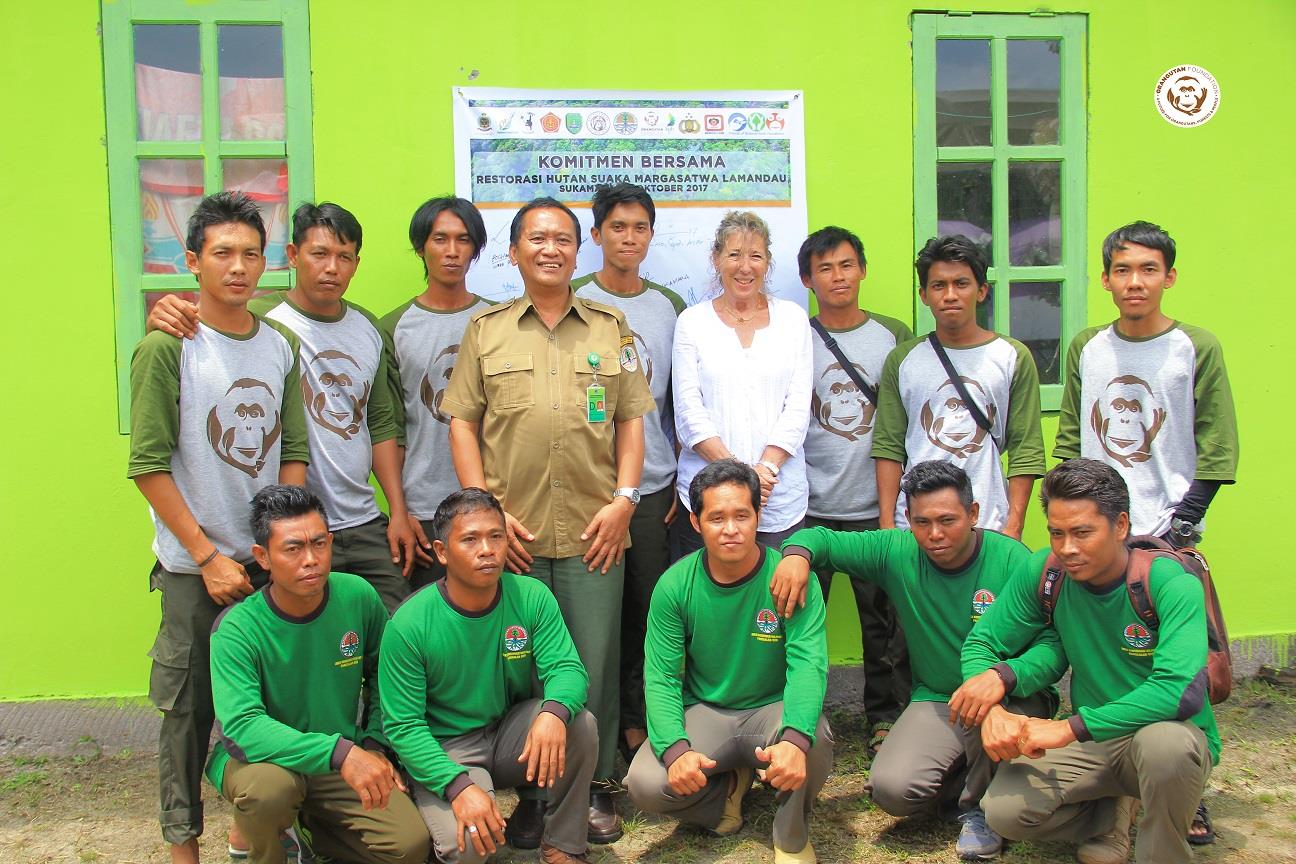
The animals due for release included two changeable hawk eagles, a hornbill, a pangolin, a slow loris, two reticulated pythons, a sun bear and a young orangutan.
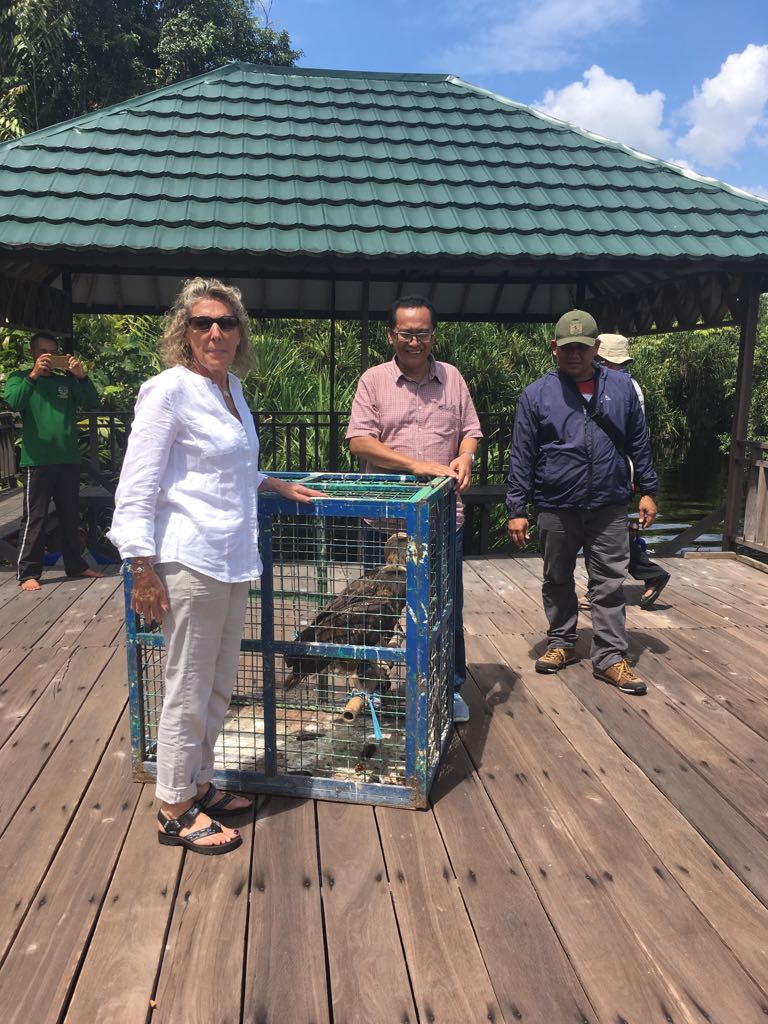
The orangutan, a handsome young male of around one-and-a-half years old, had been kept as a pet in a nearby town. He was named Adib, after the new Head of Wildlife, and has joined our Soft-Release Programme at Camp JL, in the Lamandau Wildlife Reserve, where he’ll learn the skills to survive in the forests.
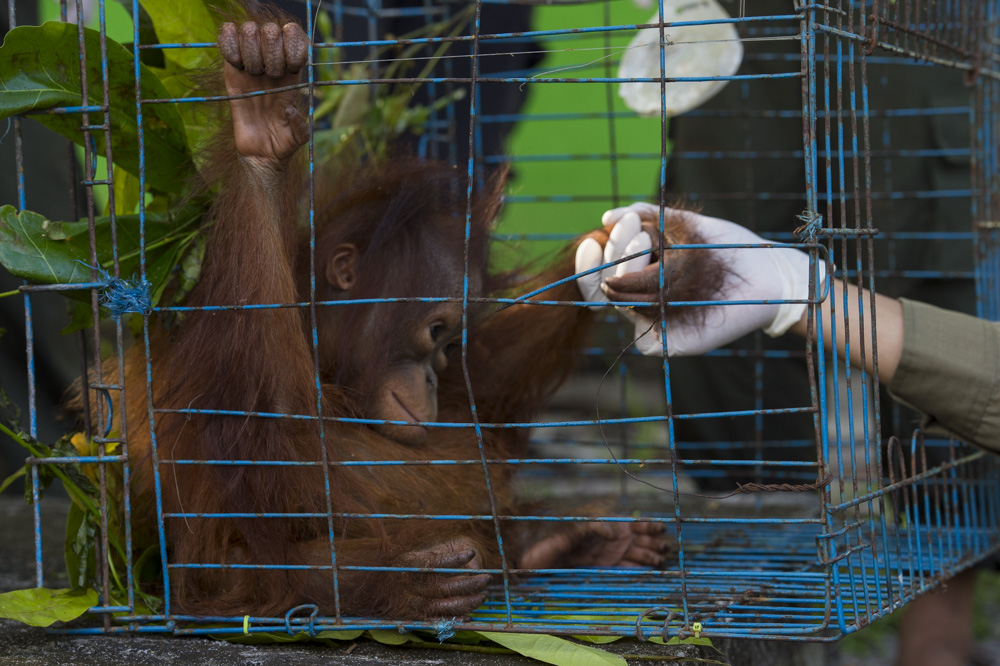

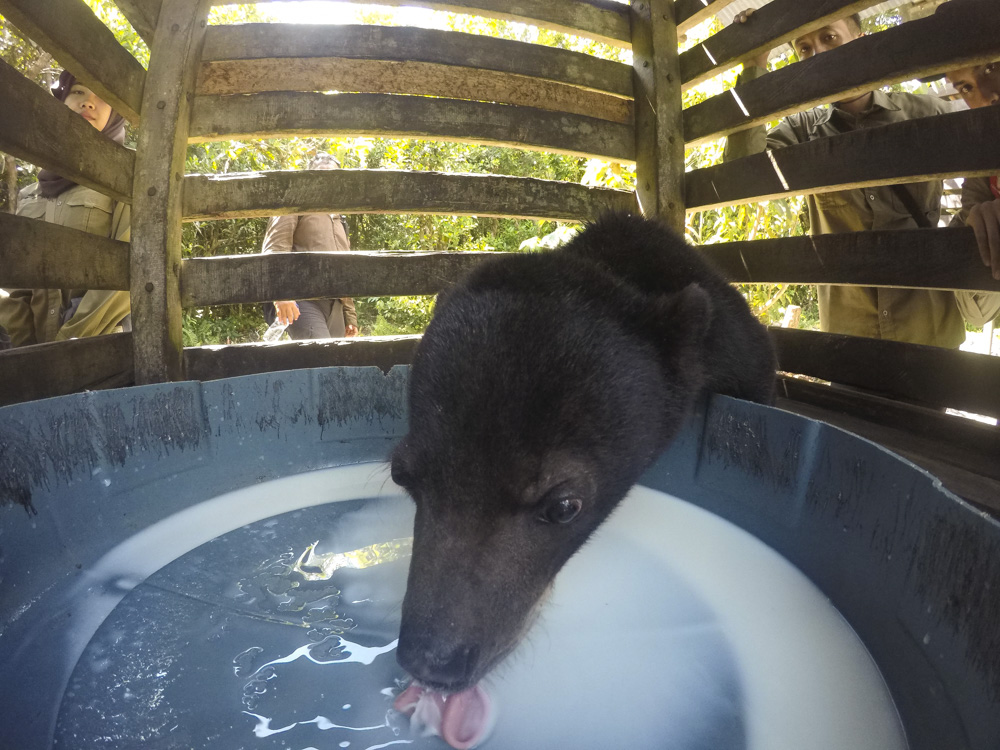
A playful sun bear, named Paddington (also a pet), was taken to Camp Siswoyo, where Orangutan Foundation staff will care for him until he is old enough to live independently. The slow loris, being a nocturnal primate, was released after nightfall.
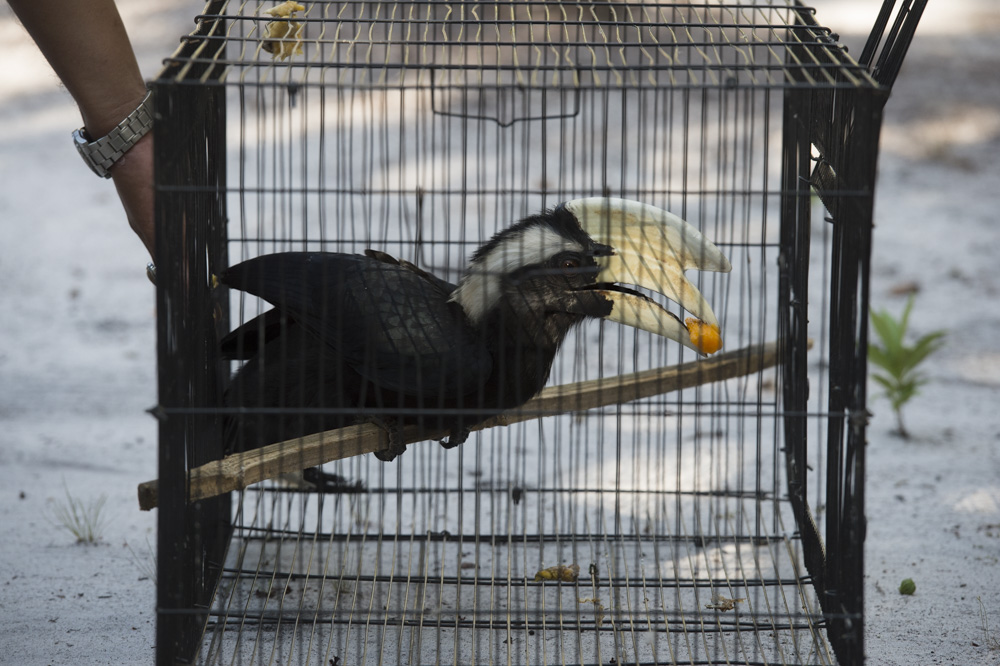
The changeable hawk eagles and hornbill were released from a guard post in the reserve, and Ashley opened the slide door to the crate of the pythons.
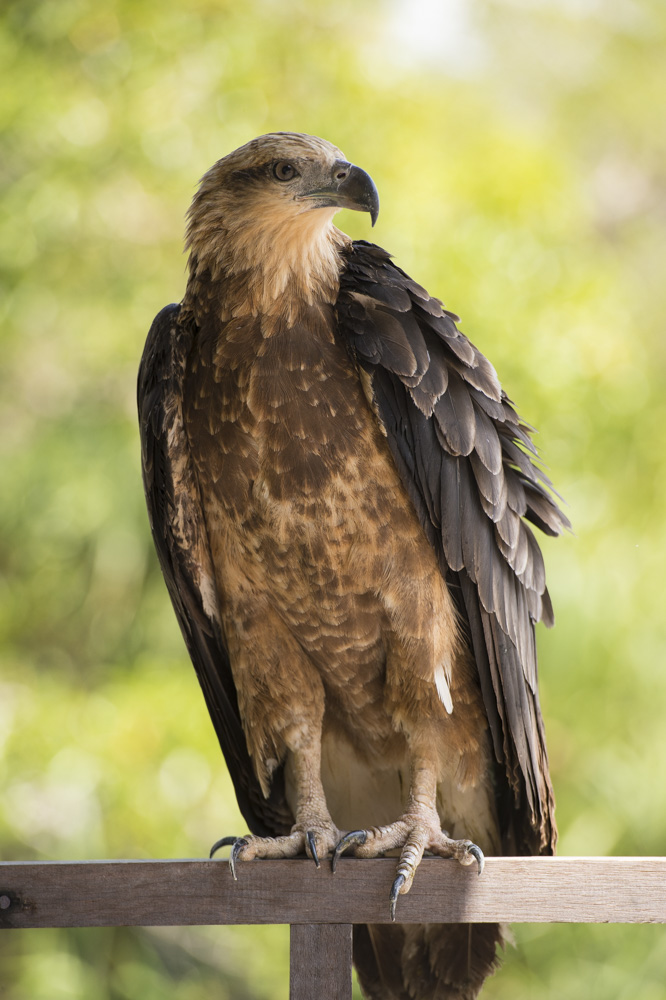

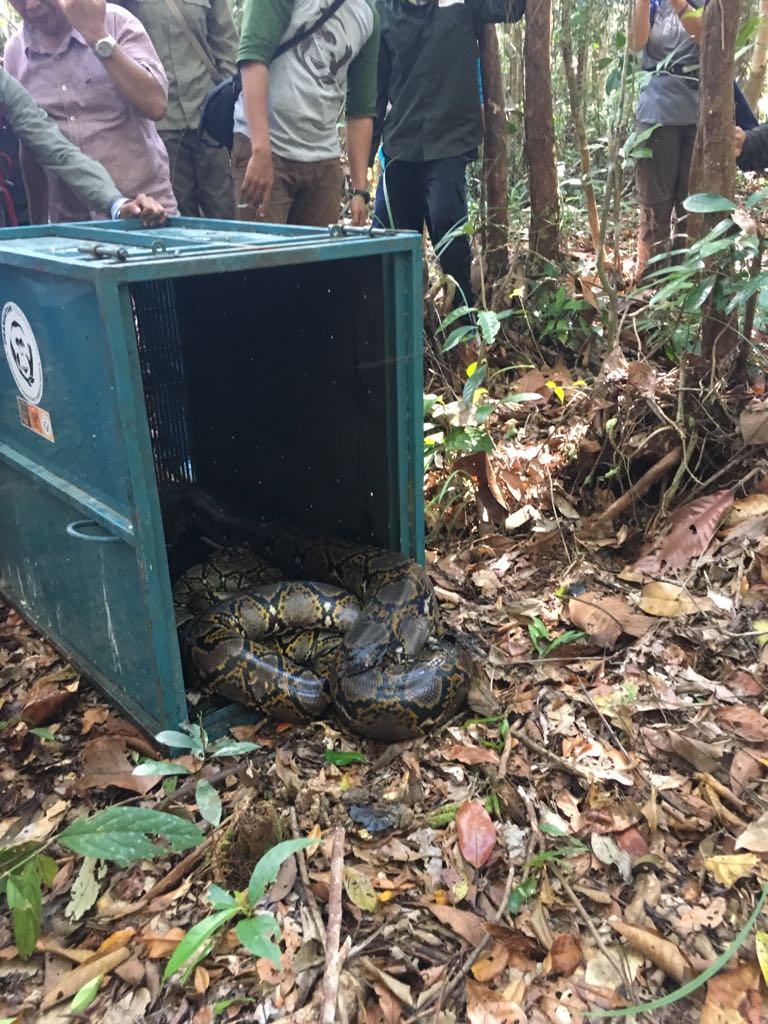
Over 3 meters in length, Ashley questioned why anyone would want to keep the snakes as a pet! We’ll post a separate blog on the pangolin, so watch this space.
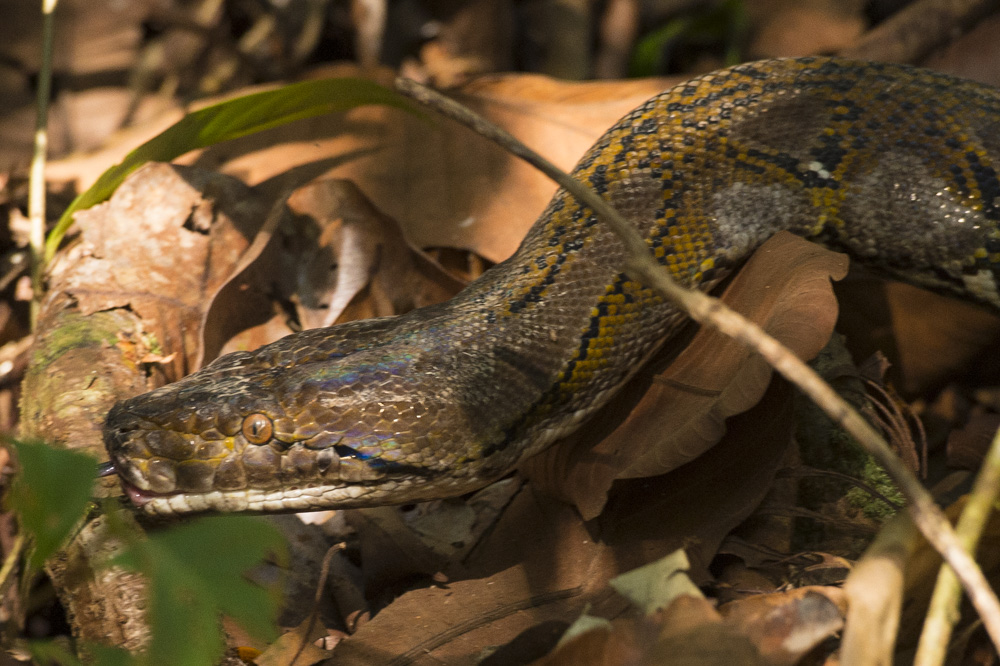
Ashley pointed out that our work for these animals has only just begun. Through our habitat protection work we must ensure that the forests stay standing, so the wildlife stays in the wild.
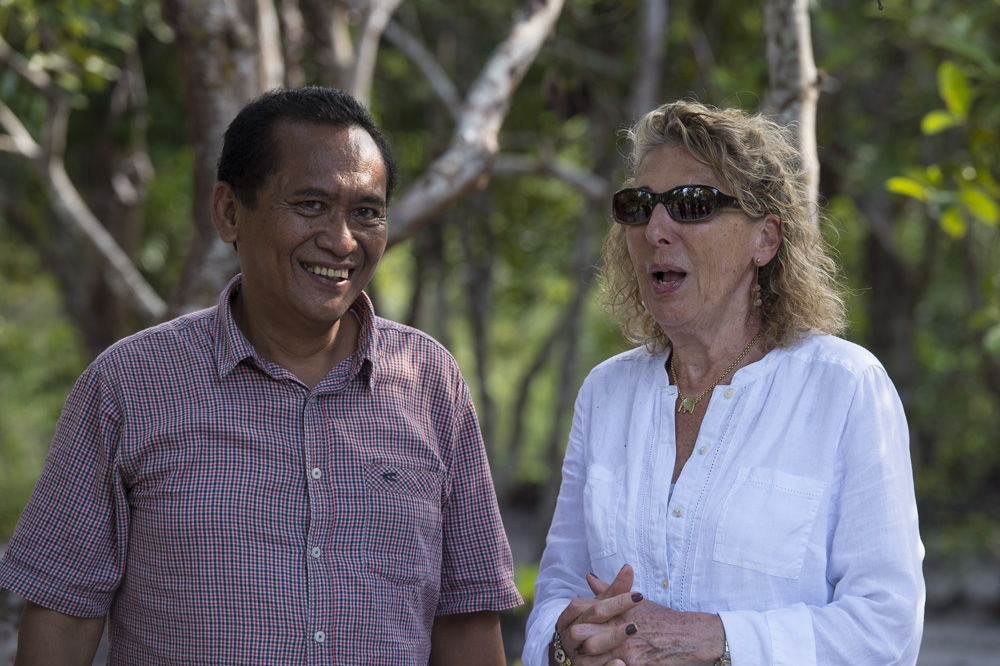
Please support our work, donate now.
Thank you.


